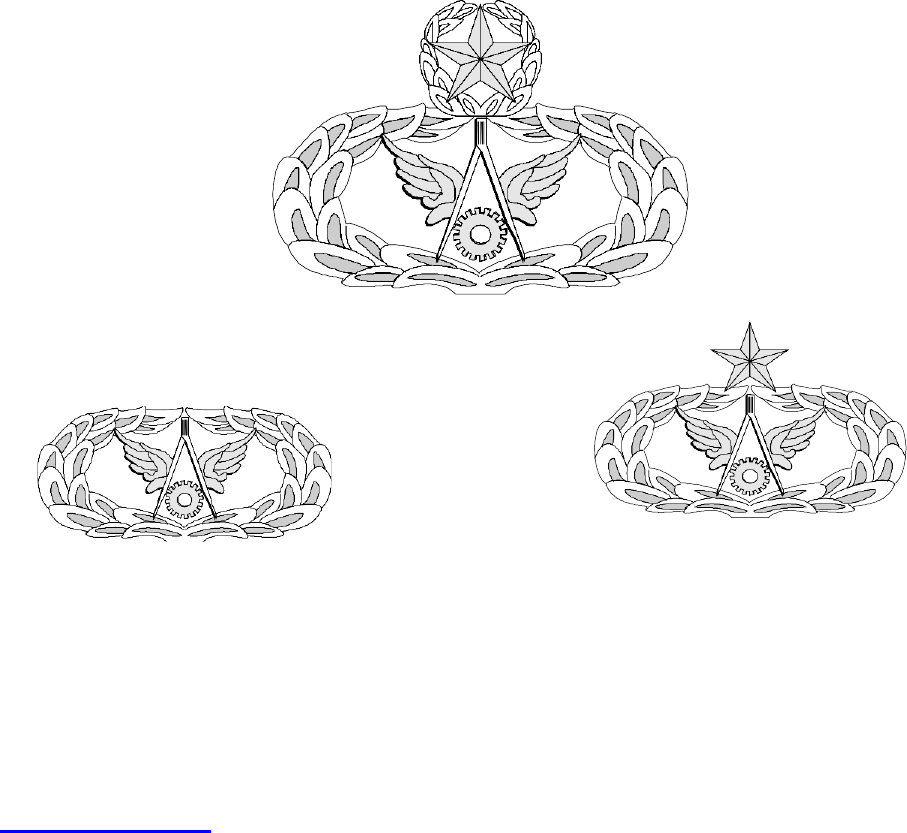
1
DEPARTMENT OF THE AIR FORCE CFETP3E5X1
Headquarter US Air Force Part I and II
Washington DC 20330-1030 17 April 2024
Air Force Specialty Code (AFSC) 3E5X1
ENGINEERING
MASTER
BASIC SENIOR
CAREER FIELD EDUCATION AND TRAINING PLAN
ACCESSIBILITY: Publications and forms are available on the e-publishing website at
www.e-publishing.af.mil for downloading or ordering.
RELEASABILITY: There are no releasability restrictions on this publication.
CFETP3E5X1, 17 APRIL 2024
2
CAREER FIELD EDUCATION AND TRAINING PLAN
ENGINEERING (AFSC 3E5X1)
TABLE OF CONTENTS
PREFACE .......................................................................................................................................4
ACRONYMS/TERMS EXPLAINED ..........................................................................................5
PART I ............................................................................................................................................9
SECTION A - GENERAL INFORMATION
A1. Purpose. ....................................................................................................................................9
A2. Uses .........................................................................................................................................9
A3. Coordination and Approval ......................................................................................................9
SECTION B - CAREER FIELD PROGRESSION AND INFORMATION
B1. Specialty Descriptions ...........................................................................................................10
B2. Skill and Career Progression .................................................................................................11
B3. Training Decisions ................................................................................................................14
B4. Community College of the Air Force (CCAF) Academic Programs ....................................14
B5. CCAF Degree Completion Requirements ..............................................................................15
B6. 3E5X1 Career Field Path........................................................................................................18
B7. Enlisted Training Path. ...........................................................................................................19
B8. Enlisted Professional Military Education (EPME) .................................................................22
SECTION C - SKILL LEVEL TRAINING REQUIREMENTS
C1. Purpose ...................................................................................................................................23
C2. Speciality Qualification Requirements ...................................................................................23
SECTION D - RESOURCE CONSTRAINTS
D1. Purpose. ..................................................................................................................................28
D2. Apprentice (3-Level) Training ...............................................................................................28
D3. Journeyman (5-Level) Training .............................................................................................28
D4. Craftsman (7-Level) Training ................................................................................................28
D5. Superintendent (9-Level) Training .........................................................................................28
SECTION E – TRANSITIONAL TRAINING GUIDE ...........................................................29
PART II.........................................................................................................................................30
SECTION A - SPECIALTY TRAINING STANDARD
A1. Implementation. .....................................................................................................................30
A2. Purpose. ..................................................................................................................................30
A3. Recommendations ..................................................................................................................32

CFETP3E5X1, 17 APRIL 2024
3
SECTION B - COURSE OBJECTIVE LIST (COL)
B1. Measurement ..........................................................................................................................33
B2. Standard. .................................................................................................................................33
B3. Proficiency Level.. .................................................................................................................33
B4. Course Objective List. ............................................................................................................33
SECTION C - SUPPORT MATERIAL
C1. Air Force Qualification Training Packages. ...........................................................................34
C2. CDC/DL Course Assessment for Civil Engineer CDCs/DL ..................................................34
SECTION D – EDUCATION AND TRAINING COURSE INDEX
D1. Purpose. ..................................................................................................................................35
D2. Air Force In-Residence Courses/Mobile Training Team (MTT) Courses. ............................35
D3. Air Force Career Development Academy (AFCDA). ...........................................................35
D4. Exportable/Web-based Courses/Information. ........................................................................35
D5. Courses/CDCs Under Development/Revision .......................................................................36
SECTION E – MAJCOM UNIQUE REQUIREMENTS.........................................................37
SECTION F - HOME STATION TRAINING
F1. Purpose ...................................................................................................................................38
F2. Home Station Training (HST). ...............................................................................................38
F3. Combat Skills Training (CST) ................................................................................................38
F4. Mission Essential Equipment Training (MEET) ....................................................................38
F5. AF Expeditionary (ES) Training Requirement .......................................................................38
F6. Silver Flag Training ................................................................................................................38
F7. Training References ................................................................................................................38
Attachments
Attachment 1 - Qualitative Requirements (Profieciency Code Key) .............................................40
Attachment 2 – 3E5X1 Specialty Training Standard .....................................................................41
Attachment 3 – 3E5X1 AFQTP Documentation Record ...............................................................59
Attachment 4 – 3E5X1 Supplemental Course Training Standards 66
OPR: AF/A4C
Certified by: CMSgt Anibal Rodriguez
Supersedes: CFETP 3E5X1, 1 Nov 2021
Pages: 67
CFETP3E5X1, 17 APRIL 2024
4
PREFACE
This Career Field Education and Training Plan (CFETP) is a comprehensive education and
training document that identifies life-cycle education/training requirements and training support
resources for the Engineering specialty. The CFETP will provide our personnel with a clear career
path to success and instill rigor in all aspects of our career field training.
Note: Civilian occupying associated positions may use Part II as a guide to support duty
position qualification training.
The CFETP consists of two parts used by the supervisor to plan, manage, and control training within
the career field.
Part I provides information necessary for overall management of the specialty.
• Section A provides general information on how to use the CFETP.
• Section B identifies information on career field progression, duties and responsibilities,
training strategies, and the career field path.
• Section C associates each skill level with specialty qualifications (knowledge, education, and
training).
• Section D indicates resource constraints.
• Section E identifies transition/training guidance requirements for SSgt through MSgt.
Part II includes the following:
• Section A identifies the Specialty Training Standard (STS) to include duties, tasks, and
technical references to support Air Education and Training Command (AETC) conducted
training, contingency courses, and correspondence course requirements.
• Section B contains the course objective list and training standards supervisors will use to
determine if an Airman has satisfied training requirements.
• Section C identifies available support materials.
• Section D identifies a training course index that supervisors can use to determine resources
available to support training. Included here are the exportable courseware, mandatory, and
supplemental courses.
• Section E identifies MAJCOM-unique training requirements supervisors can use to
determine additional training required for the associated qualification needs.
• Section F identifies home station training references and course materials required for this
specialty to support of contingency/wartime training.
Using guidance provided in the CFETP will ensure individuals in this specialty receive effective
and efficient training at the appropriate point in their careers. This plan will enable us to train today’s
work force for tomorrow’s jobs. At the unit level, supervisors and trainers will use Part II to identify,
plan, and conduct training commensurate with the overall goals of this guide.

CFETP3E5X1, 17 APRIL 2024
5
ACRONYMS/KEY TERMS EXPLAINED
Advanced Training (AT). Formal course that provides individuals who are qualified in one or more
positions of their AF Specialty with additional skills and knowledge to enhance their expertise.
Training is for selected career Airmen in advanced levels of the AF Specialty. Graduates do not
receive a new AFSC upon completion.
Air Force Civil Engineer Center (AFCEC). The focal point for all Civil Engineer (CE) training
development. Assigned to AFCEC are all the CE AFSC Force Development Managers (FDMs).
Air Force Career Field Manager (AFCFM). An individual on the Air Staff charged with the
responsibility for overseeing all training and career field management aspects of an Air Force
specialty or group of specialties.
Air Force Enlisted Classification Directory (AFECD). The official directory for all military
enlisted classification descriptions, codes, and identifiers. The specialty descriptions and codes used
to identify each Air Force job; the AFECD describes the minimum mandatory qualifications for
personnel to fill these jobs. The updated AFECD is available at the AF Personnel Center's website
located at myFSS under the military classification menu.
Air Force Credentialing Opportunities Online (AF COOL) Program. AF COOL replaced the
CCAF Credentialing and Education Research Tool (CERT). Access the AF COOL Program through
the Air Force Virtual Education Center (AFVEC). The site provides a research tool designed to
increase an Airman's awareness of national professional credentialing and CCAF education
opportunities available for all Air Force occupational specialties.
Air Force Institute of Technology (AFIT). Provides vital, relevant, and connected education that
enables Airmen to be ready engineers and great leaders who know how to build sustainable
installations to last while leading the change for the Civil Engineer career field. Access the AFIT
course list in the AFIT Civil Engineer School Course Catalog.
Air Force Job Qualification Standard/Command Job Qualification Standard (AFJQS/CJQS).
An AFJQS is a comprehensive task list that describes a particular job type or duty position;
supervisors use it to document task qualifications. The tasks on the AFJQS/CJQS are common to all
persons serving in the described duty position.
Air Force Qualification Training Package (AFQTP). A required instructional package designed
for use at the unit to qualify, or aid qualification, in a duty position, program, or on a piece of
equipment. AFQTPs identify the Air Force's standardized method for performing the task. The
AFQTP are paper-based, computer-based, in other audiovisual media formats, or all three. Each
Airman must use AFQTPs to satisfy a particular training requirement. AFQTPs for the 3E5X1 AFSC
are located on myLearning and in CE DASH.
Career Field Education and Training Plan (CFETP). A comprehensive, multipurpose document
encapsulating the entire spectrum of education and training for a career field. It outlines a logical
growth plan that includes training resources designed to make career field training identifiable,
eliminate duplication, and ensure this training is budget defensible.

CFETP3E5X1, 17 APRIL 2024
6
Chief, Civil Engineer Force Development (CCEFD). This individual is at AFCEC and responsible
for force development education and training within the 3E0 to 3E6 AFSCs.
Commercial Off The Shelf (COTS). Commercially procured training products.
Core Tasks (5^ or 7^). Mandatory tasks, which the AFCFM has identified as a minimum
qualification requirement within an Air Force specialty or duty position. These tasks exemplify the
essence of the career field.
Critical Tasks. Tasks the work center supervisor identifies as detrimental to mission
accomplishment if not performed correctly. Critical tasks may or may not be the same as core tasks
but are mandatory if identified as ‘critical’ to the position by the supervisor or work center.
Diamond Tasks (♦). Diamond tasks are extremely important to the career field. Diamond tasks are
the same as core tasks with one exception: equipment shortfalls at most locations have created
problems with the actual hands-on training/certification of these tasks. In instances where required
equipment is not available for instruction, completing the AFQTP is required for upgrade and
qualification training. Airmen must accomplish hands-on certification at the first opportunity when
equipment is available.
Distance Learning (DL). Includes Video Tele-seminar (VTS), Video Tele-training (VTT), and
CBT. Formal courses that a training wing or a contractor develops for export to a field location (in
place of resident training) for trainees to complete without the on-site support of the formal school
instructor. For instance, the Air Force Institute of Technology, Air University, and Air Education
Training Command offer online courses.
Duty Position Tasks. The tasks assigned to an individual for the position currently held. These
include as a minimum all core tasks, critical tasks and any other tasks assigned by the supervisor.
Enlisted Professional Military Education (EPME). Introduces Airmen to appropriate institutional
competencies at specific milestones throughout their career and includes two phases: Basic and
Resident. Basic EPME requirements are via distance learning courses to establish a foundation for
continued development. Resident attendance is not duplicative of the basic EPME requirements but
builds upon the competencies obtained to achieve higher proficiency levels.
Enlisted Promotions Requirements Course Catalog (EPRRC). The EPRRC lists all enlisted
promotion tests authorized for administration and the study references associated with these tests.
Every question on a promotion test comes from one of the publications listed in the catalog. The site
only lists publications that support questions on a given promotion test. The catalog also contains
administrative and special instructions for test control officers. The EPRRC is available at the
Airman Promotion Tools Testing website.
Education and Training Course Announcement (ETCA). Contains specific MAJCOM
procedures, fund cite instructions, reporting instructions, and listings for those formal courses
conducted or managed by the MAJCOMs or field operating agencies (FOAs).
Expeditionary Combat Support-Training Certification Center (ECS-TCC). The Air Force
Reserve Command manages this training center.

CFETP3E5X1, 17 APRIL 2024
7
Force Development Manager (FDM). An individual assigned to the Air Force Civil Engineer
Center (AFCEC) who serves as the HAF/A4C execution agent for all training and some career field
management aspects of a specific Air Force Civil Engineer specialty.
Interservice Training Review Organization (ITRO). Apprentice level training that is provided in
a Joint Service setting.
Initial Skills Training. Air Force Specialty (AFS) specific training an individual receives upon entry
into the Air Force or upon retraining into this specialty for the award of the 3-skill level. For our
career field, the 368 TRS at Fort Leonard Wood, MO provides the training.
Just-in-Time (JIT) Training. Training is required just before a selected deployment or tasking that
delivers training necessary for mission accomplishment. Training focuses on hard-to-obtain
contingency skills.
MAJCOM Functional Managers (MFMs). Senior leaders designated by the appropriate functional
authority provide day-to-day management and responsibility over specific functional communities
at the MAJCOM, Field Operating Agency (FOA), Direct Reporting Unit (DRU), or Air Reserve
Component (ARC) level. While they should maintain an institutional focus regarding resource
deployment and distribution, MFMs are responsible for ensuring their specialties are equipped,
developed, and sustained to meet the future needs of the total Air Force mission.
myLearning. Anytime, anywhere, learning for the Civil Engineer Community consisting of
instructional and skill-level awarding course material specific to an AFSC.
myTraining. The Total Force Training Record for Airmen that provides the capability through 21st-
century learning tools to manage the training lifecycle for Total Force personnel
Occupational Analysis Report (OAR). A detailed report showing the results of an occupational
survey of tasks performed within a particular AFS. The CFM uses the information collected from
this survey to make changes to upgrade training and Weighted Airman Promotion Exams.
Qualification Training (QT). Hands-on task performance training designed to qualify an Airman in
a specific duty position. This training occurs during and after upgrade training. Qualification
training provides the performance skills and knowledge training required to do the job.
On-the-Job Training (OJT). Hands-on, over-the-shoulder training conducted to certify personnel
in both upgrade (skill-level award) and job qualification (duty position certification) training.
Regional Training Site (RTS). The Air National Guard manages these Total Force training centers.
Resource Constraints. Resource deficiencies, such as money, facilities, time, manpower, or
equipment that precludes desired delivery of training.
Specialty Training Requirements Team (STRT). Specialty Training Requirements Team
(STRT). Before a Utilization and Training Workshop (U&TW), the AFCFM and a team of Subject
Matter Experts from each MAJCOM meet to determine education and training requirements (formal
and on-the-job training) for an Air Force Specialty. They use the STRT to create or revise training

CFETP3E5X1, 17 APRIL 2024
8
standards for all types of training. The team finalizes the CFETP and specialty description and
develops a course standard.
Specialty Training Standard (STS). Describes skills and knowledge that Airmen in a particular
AFS need on the job. It further serves as a contract between AETC and the user to show the overall
training course requirements for an AFS taught in resident or non-resident.
Subject Matter Expert (SME). An individual with expertise in a particular subject matter tasked to
represent the subject matter to an individual or group for technical accuracy.
Supplemental Training. A formal course that provides individuals qualified in one or more
positions of their Air Force Specialty (AFS) with additional skills/knowledge to enhance their
expertise in the career field. Training is for selected career airmen at the advanced level of the AFS.
Task Qualification Training (TQT). Training conducted after Chemical, Biological, Radiological,
and Nuclear Defense classroom training in which individuals perform wartime mission essential
tasks in a simulated wartime environment while wearing full ground crew individual protective
equipment or aircrew individual protective equipment.
Total Force. Organizations, units, and individuals that comprise the Air Forces’ resources for
meeting its mission. This includes civilian personnel, Active Duty, Air National Guard, and Air Force
Reserve Command military personnel.
Upgrade Training (UGT). The CFETP identifies the mandatory courses, task qualification
requirements, and correspondence course completion requirements for awarding the 5-, 7-, and 9-
skill levels.
Utilization and Training Workshop (U&TW). An executive decision meeting to vote on funding
(Course Resource Estimates) for instructor authorizations, equipment, and facilities needed to
support any new or revised training coming from the STRT. They will also determine which
organizations will furnish resources, establish commitment and delivery dates in writing, document
equipment availability dates, identify any problems and establish training delivery dates.
Vectored Positions. Key SNCO positions in your career field. To learn more about vectored
positions, go to MyVECTOR.
Web-Based Training (WBT). A self-paced stand-alone computer product used to deliver interactive
subject and task knowledge.
CFETP3E5X1, 17 APRIL 2024
PART 1
9
SECTION A - GENERAL INFORMATION
A1. Purpose. This CFETP provides the necessary information for the AFCFM, MFMs, commanders,
Unit Training Managers (UTMs), supervisors, trainers, and certifiers to plan, develop, manage, and
conduct an effective career field training program. This plan outlines the training personnel in an
AFS require to develop and progress throughout their careers. It identifies, initial skills, upgrade,
qualification, and advanced proficiency training.
A1.1. This CFETP has several purposes.
A1.1.1. Serves as a management tool to plan, manage, conduct, and evaluate a career field training
program. Supervisors use the CFETP to identify training at the appropriate point in an individual's
career.
A1.1.2. Identifies task and knowledge training requirements for each skill level in this specialty and
recommends education/training throughout each phase of an individual's career.
A1.1.3. Lists training courses available in this specialty and identifies sources of training and delivery
methods.
A1.1.4. Identifies major resource constraints that impact the full implementation of the desired career
field training process.
A2. Uses. MFMs and supervisors will use the plan at all levels to ensure comprehensive and cohesive
training programs are available for everyone in the specialty.
A2.1. AETC training personnel will develop and revise formal resident, non-resident, field, and
exportable training based on requirements established by the users and documented in Part II of the
CFETP. They will also work with the AFCFM and AFCEC Force Development Division
(AFCEC/COF) to develop acquisition strategies for obtaining the resources needed to provide the
identified training.
A2.2. MFMs ensure their training programs complement the CFETP mandatory initial, upgrade,
qualification, and proficiency. OJT, resident training, contract training, or exportable courses can
satisfy identified requirements. MAJCOM developed training to support this AFS; the AFCFM
ensures the training is in the plan.
A2.3. UTMs and supervisors must ensure everyone completes this plan's mandatory upgrade training
requirements (including MAJCOM supplemental requirements).
A2.4. Everyone will complete the mandatory training requirements specified in this plan. The list of
courses in Part II of this CFETP is a reference to support training.
A3. Coordination and Approval. The AFCFM is the approval authority. Also, the AFCFM will
initiate an annual review of this document to ensure currency and accuracy. Major Command
representatives and AETC training personnel will identify and coordinate the career field training
requirements. They will eliminate duplicate training using the list of courses in Part II.
CFETP3E5X1, 17 APRIL 2024
PART 1
10
SECTION B - CAREER FIELD PROGRESSION AND INFORMATION
B1. Specialty Descriptions. Engineering Apprentice, Journeyman, Craftsman, and Superintendent.
B1.1. Specialty Summary. Directs and performs civil engineering design, drafting, surveying, and
contract surveillance to support Air Force installations and missions. Prepares Computer Aided Design
(CAD) drawings, construction contract specifications, and project cost estimates. Manages
construction activities through project oversight, cost negotiations, and adherence to applicable
building code and law. Supports Geographic Information Systems (GIS) programs. Utilizes surveying
technology to include Global Positioning System (GPS). Evaluates potential construction sites and
performs field tests on soils, asphalt, and concrete. Related DoD Occupational Subgroup: 141200.
B1.1.1. Duties and Responsibilities for Apprentice, Journeyman, Craftsman and Superintendent.
B1.1.2. Perform drafting duties. Interpret rough engineering sketches to produce working drawings
using CAD techniques. Produce architectural, structural, civil, mechanical, and electrical drawings.
Update Base Comprehensive Plans (BCP) and maintain record drawings. Plot and reproduce drawings.
B1.1.3. Perform surveying duties. Conduct reconnaissance, site location, construction, and mapping
surveys. Utilize auto-levels, electronic total stations, resource and survey grade GPS equipment and
related instruments to complete surveys. Collect, convert, and present field survey data for civil
engineering projects.
B1.1.4. Perform GIS data collection duties. Collect geospatial data in accordance with industry
standard practices and Air Force regulations. Upload and manipulate survey data, using a GIS
interface, to support the production of installation master plans. Work with local asset managers,
engineers, and the installation geospatial integration officer to develop plans and programs to support
asset management and real property programs, using a GIS interface.
B1.1.5. Perform contract management duties. Manage and inspect construction and maintenance
contracts. Interpret plans, specifications, and other contract documents. Coordinate, evaluate,
monitor, and document contract activities and progress. Prepare recommendations for contract
modifications. Review material submittals and evaluate procedures for compliance with contract
specifications. Conduct pre-final, acceptance, and post acceptance inspections.
B1.1.6. Develop preliminary engineering designs. Prepare cost estimates, performance work
statements and specifications for existing and proposed facilities. Can understand simple load
calculations and applications for horizontal and vertical construction. Act as liaison between design,
review, construction and using agencies.
B1.1.7. Perform standardized and expedient tests on soils, asphalt, and concrete. Collect, record, and
interpret test data. Prepare reports for engineering evaluation.
B1.1.8. Support contingency operations. Develop plans to bed-down personnel, aircraft, and
associated support functions during contingency operations. Evaluate existing airfield pavements,
lighting, navigational aids, markings, and arresting systems. Perform recovery operations to include
explosive ordinance reconnaissance, airfield damage assessment, minimum operating strip selection,
repair calculations, and airfield marking procedures.

CFETP3E5X1, 17 APRIL 2024
PART 1
11
B1.1.9. Reviews and advises on problems associated with civil engineering design, drafting,
surveying, and contract surveillance and facility construction and maintenance programs. Manages,
inspects, and evaluates work center activities. Ensures compliance with commercial and military
publications. Submits and reviews supply and equipment requisitions. Discusses inspection findings
and recommends corrective actions. Solves complex problems by studying lay out drawings, wiring
and schematic drawings, and by analyzing construction and operating characteristics. Develops and
establishes operation and maintenance procedures to ensure maximum efficiency. Plans and
organizes all Engineering Airmen’s activities, training, and work. Performs work center planning
activities. Coordinates plans with other civil engineering and base activities. Directs all daily
activities and supervisory functions in assigned sections. Analyzes productivity and work quality.
B2. Skill and Career Progression. Adequate training and timely progression from the apprentice to
the superintendent level play an important role in the Air Force's ability to accomplish its mission.
Everyone involved in training must do their part to plan, manage, and conduct an effective training
program. The guidance provided in this part of the CFETP will ensure everyone receives viable
training at appropriate points in their career.
B2.1. Apprentice (AFSC 3E531 – AB, AMN, A1C).
B2.1.1. Upon completion of initial skills training, a trainee will work with a trainer to enhance their
knowledge and skills to progress to the 5-level.
B2.1.2. Utilize Career Development Course (CDC), Air Force Qualification Training Packages
(AFQTPs), and web-based courses for subject and task fundamentals progress in the career field.
B2.1.3. Once trained and task certified, a trainee can perform the task unsupervised.
B2.1.4. After completing all upgrade training requirements, supervisors and UTMs coordinate
upgrade procedures.
B2.2. Journeyman (AFSC 3E551 – SrA, SSgt).
B2.2.1. A journeyman may be assigned job positions such as team leader, shift supervisor, and task
trainer.
B2.2.2. Completing the 5-level CDC and all 5-level core and diamond tasks are basic prerequisites
for the five-skill level award.
B2.2.3. Complete the CE 5-Level Core Concepts Course on myLearning before ordering their CDC.
B2.2.4. Must complete the appropriate Basic Enlisted Professional Military Education (EPME) and
Resident EPME as outlined in Department of the Air Force Instruction (DAFI) 36-2670, Total Force
Development.
B2.2.5. Enter continuation training to broaden technical experience base.
B2.2.6. Use CDC and other reference materials to prepare for Weighted Airman Performance System
(WAPS) testing. Review the EPRRC for the complete list of testing materials.

CFETP3E5X1, 17 APRIL 2024
PART 1
12
B2.2.7. Pursue academic education through CCAF, nationally or regionally accredited institutions,
or other degree-awarding institutions.
B2.2.8. Complete Air Force Institute of Technology (AFIT) WMGT 301, Introduction to Asset
Management course. This course is mandatory for Active Duty and highly encouraged for the Air
Reserve Component.
B2.2.9. After completing all upgrade training requirements, supervisors and UTMs coordinate
upgrade procedures.
B2.3. Craftsman (AFSC 3E571 – SSgt, TSgt, and MSgt).
B2.3.1. Craftsman can expect to fill various supervisory and management positions such as shift
leader, team chief, supervisor, or task certifier.
B2.3.2. Completion of CE 7-Level Core Concepts Course located on myLearning and all core and
diamond tasks are basic prerequisites for the seven-skill level award.
B2.3.3. Must complete the appropriate Basic EPME and Resident EPME as outlined in DAFI 36-2670,
Total Force Development.
B2.3.4. Should take additional training courses to broaden technical knowledge or management of
resources and personnel.
B2.3.5. Use CDC and other reference materials to prepare for WAPS testing. Review the EPRRC.
B2.3.6. Continue academic education through CCAF and higher degree programs is encouraged.
B2.3.7. Completing AFIT WENG 200, Scoping and Estimating and WMGT 322, Intro to Project
Management courses is mandatory for Active Duty and highly encouraged for the Air Reserve
Component.
B2.3.8. Completing the Troop Construction Project Management Course (AFIT WMGT 437) is
mandatory for Active-Duty personnel and required for promotion to MSgt. This course is highly
encouraged for Air Reserve Component MSgts. Note: This is not a skill level-awarding course.
B2.3.9. Airmen must complete the Engineering Craftsman Course (JCACP3E571 01AD) for 7-skill
level award. Members attending this course must have completed all OJT requirements for upgrade
to the 7-skill level prior to attending this course.
B2.3.10. When training requirements are completed; supervisors and UTMs coordinate upgrade
procedures.
CFETP3E5X1, 17 APRIL 2024
PART 1
13
B2.4. Superintendent (AFSC 3E591 - SMSgt).
B2.4.1. A superintendent can fill positions such as Flight Chief, Section Chief, Superintendent, and
various staff positions.
B2.4.2. Completing the Civil Engineer Superintendent Course (AFIT WMGT 570) is mandatory for
Active Duty. This course is highly encouraged for Air National Guard and Air Force Reserve SMSgts
and mandatory for promotion to CMSgt.
Note: This is not a skill-level-awarding course.
B2.4.3. Must complete the appropriate Basic EPME and Resident EPME as outlined in DAFI 36-2670,
Total Force Development.
B2.4.4. Should take continuation training course to increase knowledge of budget, manpower,
resources, and personnel management.
B2.4.5. Continue academic development through higher education is recommended.
B2.4.6. Must be a SMSgt for award of the 9-skill level.
B2.5. Senior Enlisted Leader (SEL) (3E000 - CMSgt).
B2.5.1. SELs work in multiple leadership positions and functional areas that challenge them and
effectively use their general managerial and supervisory abilities.
B2.5.2. Must be selected for CMSgt and possess qualifications in a feeder specialty (3E591).
B2.5.3. Must complete the appropriate Basic EPME and Resident EPME as outlined in (DAFI) 36-
2670, Total Force Development.
CFETP3E5X1, 17 APRIL 2024
PART 1
14
B3. Training Decisions. The CFETP uses a building block approach (simple to complex) to
encompass the entire spectrum of training requirements for the Engineering career field. The
spectrum includes a strategy for when, where, and how to meet the training requirements. The
strategy must be apparent and affordable to reduce duplication of training and eliminate a
disjointed approach to training. The career field Specialty Training Requirements Team (STRT)
meeting held at Fort Leonard Wood, MO from 15 - 19 Aug 2022 made the following decisions.
B3.1. Initials Skills Training. The STRT members reviewed and updated the initial skills course
content. See the STS for the additions, deletions, and modifications made to the course. They
identified and validated the Wartime training tasks.
B3.2. Five Level Upgrade Training Requirements. Existing CDCs were reviewed and updated
to ensure only current material remained and new technology information was added. The STS
was reviewed, added, and validated. Additions and deletions of core tasks as well as modifications
to proficiency codes were made.
B3.3. Seven Level Upgrade Training Requirements. The STRT members reviewed, validated,
and updated STS line items for the 7-level Craftsman Course.
B3.4. Proficiency Training. Any additional knowledge and skill requirements that were not taught
through initial skills or upgrade training are assigned as continuation training. Purpose of
continuation training is to provide training exceeding minimum upgrade training requirements
with emphasis on present and future duty positions. MAJCOMs must develop a continuation-
training program that ensures personnel in the Engineering career field receive the necessary
training at the appropriate point in their careers. The training program will identify both mandatory
and optional training requirements.
B3.5. Supplemental Training. SMEs and the STRT reviewed supplemental training courses for
technical accuracy and identified training that was no longer required or otherwise outdated. They
revalidated the remaining courses as necessary to fully support doctrine, the War Mobilization
Plan (WMP), the AF Enlisted Classification Directory (AFECD), and an Airman’s individual
career progression within the AFS.
B4. Community College of the Air Force (CCAF) Academic Programs. Enrollment in the
Community College of the Air Force occurs upon completion of Basic Military Training.
Community College of the Air Force provides the opportunity to obtain an Associate of Applied
Sciences Degree. In addition to its associate degree program, CCAF offers the following:
B4.1. Occupational Instructor Certification. Upon completion of instructor qualification
training, consisting of the instructor methods course and supervised practice teaching, Community
College of the Air Force instructors who possess an associate degree or higher may be nominated
by their school commander and commandant for certification as an occupational instructor.
B4.2. Trade Skill Certification. When a CCAF student separates or retires, CCAF awards a trade
skill certification for the primary occupational specialty. The college uses a competency-based
assessment process for trade skill certification at one of four proficiency levels: Apprentice,
Journeyman, Craftsman, or Master Craftsman.

CFETP3E5X1, 17 APRIL 2024
PART 1
15
B5. CCAF Degree Completion Requirements (60 Semester Hours). The Construction
Technology Associate Degree (4VEB) applies to the 3E5X1 AFSC. Before receiving a CCAF
degree, the individual must have a 5-level and meet the following requirements:
Course
Semester Hours
Technical Education
24
Program Electives
15
Leadership, Management, and Military Studies (PME)
6
General Education (Civilian)
15
- Oral / Written Communication (6)
- Mathematics (3)
- Social Science (3)
- Humanities (3)
Total
60
B5.1. Technical Education (24 semester hours). Apply a minimum of nine semester hours of
CCAF institutional credit awarded from specialty-related formal training towards Technical Core
subject requirements. Satisfy Technical Electives CCAF credit from other sources in-transfer.
Technical Core Requirements
Semester Hours
Building Construction Design
20
Carpentry/Cabinetry
12
CCAF Internship
18
College Algebra/Trigonometry
3
Computer Aided Drafting
3
Construction Inspection/Building Codes
9
Drafting/Engineering Drawing
6
Engineering Assistant
20
Heavy Equipment Operations
20
Metals Fabrication/Characteristics
15
Pavement Construction
12
Project Management/Planning
4
Surveying
12
Welding
9
B5.2. Technical Electives.
Technical Electives
Semester Hours
Blueprint Reading
3
Computer Science
6
Construction Material Estimating
3
Enlisted Professional Military Education
6
General Physics
3
Hazardous Materials
3
Industrial/Construction Safety
3
Properties and Strength of Materials
6
Soil and Foundations
3
Technical Writing
3

CFETP3E5X1, 17 APRIL 2024
PART 1
16
B5.3. Leadership, Management, and Military Studies (6 Semester Hours). Professional
military education, civilian management courses accepted in transfer and/or by testing credit.
B5.4. General Education (15 Semester Hours). Applicable courses must meet the General
Education Requirement (GER) subject criteria and in-transfer requirements.
General Education Subjects/Courses
Semester Hours
Communications:
Written Communication (English Composition)
Oral Communication (Speech)
3
3
Mathematics
3
Social Science
3
Humanities
3
B5.5. Program Elective (15 semester hours). Courses applying to technical education,
Leadership, Management, and Military Studies or General Education requirements; natural science
courses meeting General Education requirement application criteria; foreign language credit
earned at Defense Language Institute; maximum nine semester hours of CCAF degree-applicable
technical course credit otherwise not applicable to the program.
B5.6. Additional off-duty education is a personal choice encouraged for all. Individuals desiring
to become an AETC Instructor should actively pursue an associate degree. A degreed faculty is
required to maintain accreditation through the Southern Association of Colleges and Schools.
B5.7. Instructional Systems Development (ISD) Certification. CCAF offers the ISD
Certification for qualified course/curriculum developers, writers, and managers formally assigned
to an off-campus instructional site to develop/write and manage CCAF collegiate-level credit
awarding courses. The ISD Certification is a professional credential recognizing the
course/curriculum developer/writer's or manager's extensive training, education, qualifications,
and experience required to develop/write and manage CCAF courses.
B5.8. Air Force Credentialing Opportunities Online (AF COOL) Program. CCAF manages
the AF COOL Program, which provides a research tool designed to increase an enlisted Airman
and Guardian's awareness of national professional credentialing and funding opportunities
available for all Air Force enlisted occupational specialties. AF COOL also provides information
on specific occupational specialties, civilian occupational equivalencies, specialty-related national
professional credentials, credentialing agencies, and professional organizations. AF COOL
includes information such as:
B5.8.1. Get background information about civilian credentials, including eligibility requirements
and resources to prepare for an exam.
B5.8.2. Identify credentials relevant to an AFSC, Special Duty Identifier (SDI), and Reporting
Identifier (RI).
B5.8.3. Learn how to fill gaps between Air Force training and experience and civilian credentialing
requirements.

CFETP3E5X1, 17 APRIL 2024
PART 1
17
B5.8.4. Information on AF COOL funding opportunities to pay for credentialing coursework,
textbooks, exams, associated fees, and recertification.
B5.8.5. Resources available to enlisted Airmen and Guardians that can help them gain civilian job
credentials.
B5.8.6. Credentialing requirements information on AF COOL includes information specific to
enlisted AFSCs. Individuals seeking credentialing information for civilian occupations can
reference the U.S. Department of Labor Website, CareerOneStop.
B5.9. Air University Associate to Baccalaureate Cooperative (AU-ABC). The AU-ABC
program connects CCAF graduates with online 4-year programs. The AU-ABC program includes
postsecondary institutions with institutional accreditation.
B5.9.1. CAT I: For CCAF Graduates. Guarantees CCAF AAS graduates need no more than 64
semester hours to complete an AU-ABC degree program.
B5.9.2. CAT II: For CCAF AAS Students. Students complete up to nine semester hours with a
partner school to complete the CCAF AAS degree through dual tracking, simultaneously fulfilling
the CCAF AAS degree requirements and some of the AU-ABC degree program requirements.
B5.9.3. CAT III: For CCAF AAS Graduates. Must complete over 60 semester hours of credit
beyond the CCAF AAS and meet all other AU-ABC degree program requirements.
B5.9.4. CCAF students and graduates can search for degree programs from a list of military-
friendly civilian institutions via the Air Force Virtual Education Center (AFVEC). From there,
students can view their education record and CCAF credits earned, apply for Military TA, and
shop for baccalaureate degree programs. For more information, refer to the AU-ABC fact page.
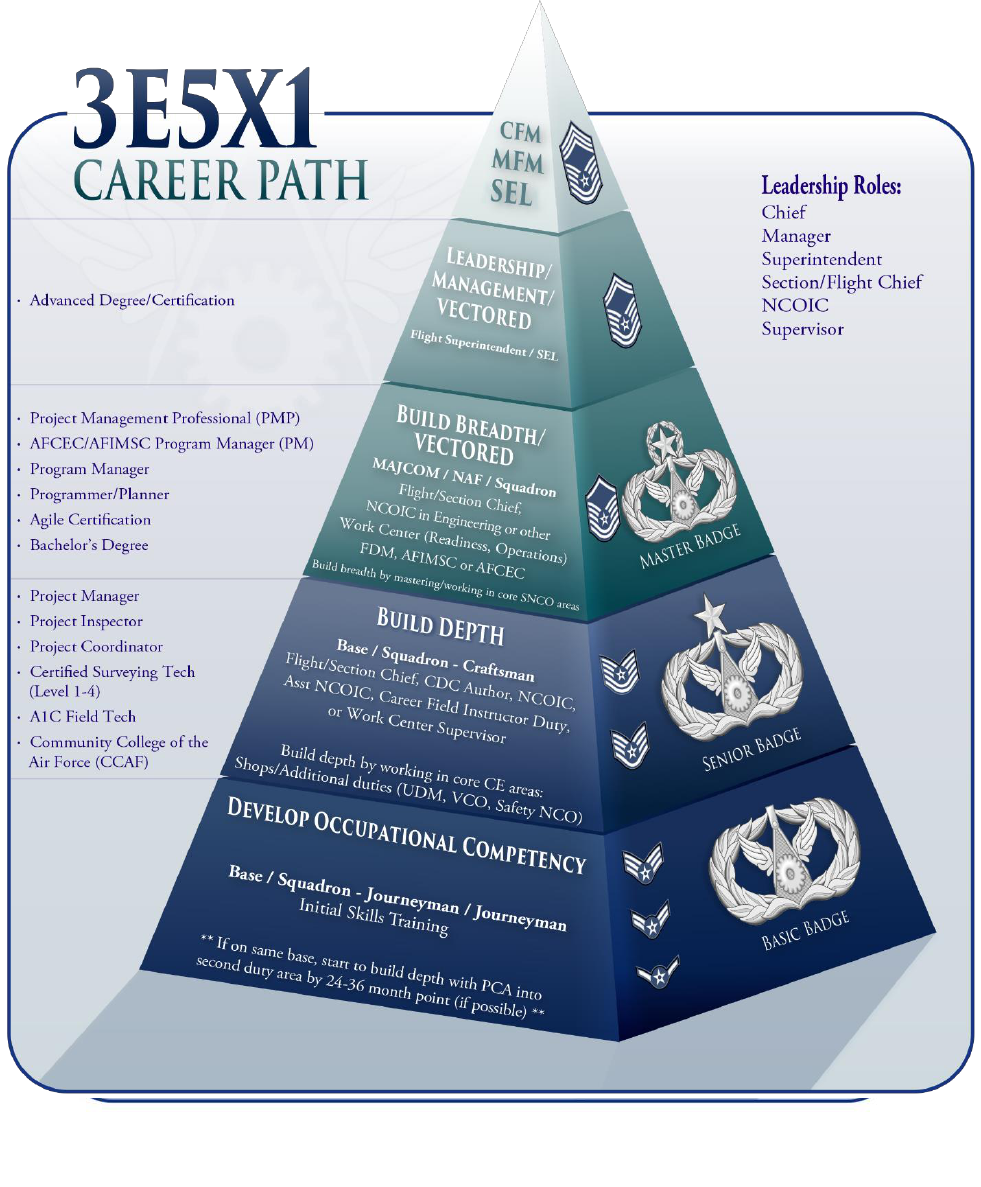
CFETP3E5X1, 17 APRIL 2024
PART 1
18
B6. Civil Engineer Career Field Path. The following chart depicts the 3E5X1 specialty career path:

CFETP3E5X1, 17 APRIL 2024
PART 1
19
B7. Enlisted Training Path.
ENLISTED CAREER PATH
Education and Training Requirements
GRADE REQUIREMENTS
Rank
Average
Sew-On
Earliest
Sew-On
High Year Of
Tenure (HYT)
(Regular Air Force)
Basic Military Training School
Apprentice Technical School (3-Skill Level)
− Complete Technical School
Amn
A1C
6 months
16 months
Upgrade To Journeyman (5-Skill Level)
− Complete CDC
− Complete CE 5-Level Core Concepts WBT
− Complete all core/diamond/duty related tasks
− Complete AFIT WMGT 301 Course.
Mandatory for Active Duty and highly
encouraged for the ARC
− In-residence ALS for SSgt sew-on (AD only)
SrA
3 years
28 months
Below-the-
Zone (BTZ)
(22 months)
10 years
Trainer
− Must be task qualified and certified to train task(s)
− Attend AF Training Course
− Recommended by the supervisor
Upgrade To Craftsman (7-Skill Level)
− Minimum rank of SSgt
− Complete CE 7-Level Core Concepts WBT
− Complete in-resident craftsman course
− Complete all core/diamond/duty related tasks
− Complete AFIT WENG 200, Scoping and
Estimating and WMGT 322, Intro to Project
Management courses for Active Duty and
highly encouraged for the ARC
SSgt
TSgt
MSgt
5 years
9 years
16 Years
3 years
5 years
8 years
20 years
22 years
26 years
Certifier
− SSgt with 5-skill level or civilian equivalent
− Attend AF Training Course
− Appointed by commander
− Be someone other than the trainer (for core and critical tasks only)
MSGT
− Completion of Troop Construction Project Management Course (AFIT WMGT 437) is mandatory for Active
Duty and required for promotion to MSgt. This course is highly encouraged for Air Reserve Component MSgts.
Note: this is not a skill level-awarding course.
Upgrade To Superintendent (9-Skill Level)
− Minimum rank of SMSgt
− Complete AFIT WMGT 570, CE
Superintendents Course (AD Only)
− In-residence USAF SNCOA, or sister service
equivalent, graduation is required for SMSgt
sew-on (AD only)
SMSgt
20 years
11 years
28 years
Senior Enlisted Leader
− Chief Orientation Course (AFR Only)
− CE Superintendents Course (WMGT 570)
(ANG and AFRC only)
− In-residence Chief Leadership Course is
required for all CMSgt selects and CMSgts
prior to 1-year time in grade
CMSgt
22 years
14 years
30 years
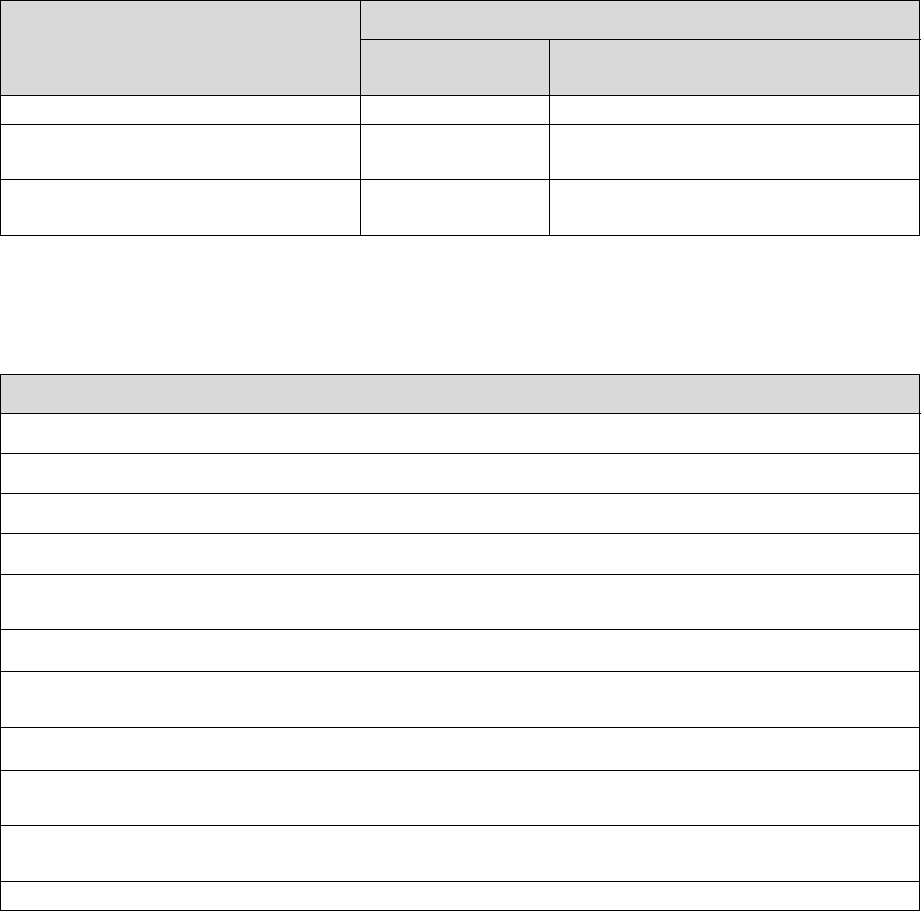
CFETP3E5X1, 17 APRIL 2024
PART 1
20
B7.1. 3E5X1 Supplemental Course Career Path
Supplemental Courses
Timeline
Rank
Desired timeframe years of
service
Engineering Craftsman
SSgt
4 – 7 years
Construction Surveying
SSgt - TSgt
4 – 10 years (5-level SrA may attend
JIT for contingency requirements)
Contract Construction Inspector
SrA and above
3– 14 years (A1C may attend JIT for
contingency requirements)
B7.2. 3E5X1 Recommended Certification Programs
Course Titles
Project Management Professional (PMP)
Certified Associate in Project Management (CAPM)
PMI Agile Certified Practitioner (PMI-ACP)
Certified Survey Technician, National Society of Professional Surveyors (NSPS)
Certified Construction Manager, Construction Management Association of America
(CMAA)
Construction Manager Certification, The American Institute of Constructors (AIC)
Construction and Building Inspector Certification (Commercial/Residential), Plans Examiner
Certification, International Code Council (ICC)
Concrete/Aggregate Field/Laboratory Technician, American Concrete Institute (ACI)
Construction Materials Testing Certification, National Institute for Certification in
Engineering Technologies (NICET)
Geographic Information System Professional (GISP), Geographic Information System
Certification Institute (GISCI)
Autodesk Certification (Autodesk University)
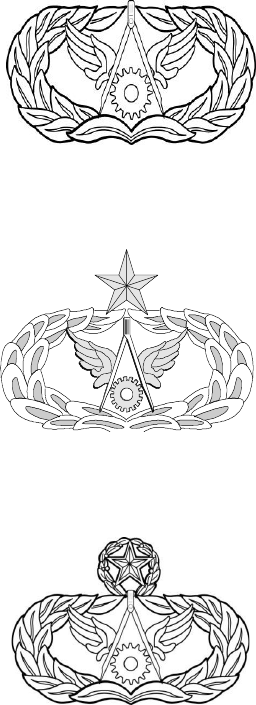
CFETP3E5X1, 17 APRIL 2024
PART 1
21
B7.3. CE Occupational Badge. The Civil Engineer badge reflects a great history and tradition.
When worn, Airmen will recognize you as having achieved an expected level of competence. The
multitude of engineers before you established this expectation through excellent service in both peace
and war. Eligibility criteria for the award and wear of AF occupational badges are in AFMAN 36-
2100, Military Utilization and Classification, and DAFI 36-2903, Dress and Personal Appearance
of Air Force Personnel.
B7.4. CE Badge Heraldry. The gear wheel and compass represent the engineering profession in the
military and private sectors. The gear represents the essence of engineering: applying scientific
principles and technology to practical ends. To AF Engineers, the gear symbolizes an element
(representing the built environment) that meshes with others (weapon systems and trained personnel)
to enable the AF to perform its mission. The compass is a precision tool historically used by engineers
in designing and constructing facilities and equipment. The gear and compass symbolize all the
diverse specialties of Air Force Civil Engineers. Finally, the wings help portray the fundamental
linkage between the engineering and aviation components, and the built environment is the
foundation supporting the Air Force mission and people. Finally, the wings help to portray the
fundamental linkage between the engineering and aviation components, and that the built
environment is the foundation supporting Air Force mission and people.
B7.4.1. Basic Badge. Awarded upon completion of the apprentice course.
B7.4.2. Senior Badge. Adds a star to the top of the badge. Wear the senior badge after award of the
7-skill level.
B7.4.3. Master Badge. Adds a wreath around the star. Awarded to master sergeant or above with 5
years in the specialty from award of the 7-skill level.

CFETP3E5X1, 17 APRIL 2024
PART 1
22
B8. Enlisted Professional Military Education (EPME).
B8.1. Basic EPME (Distance Learning). Basic EPME requirements are completed via distance
learning (DL) courses to establish a foundation for continued development and include the
Noncommissioned Officer (NCO) DL and Senior Noncommissioned Officer (SNCO) DL courses.
NCO DL and SNCO DL courses are no longer prerequisites to attending resident NCO Academy and
SNCO Academy.
B8.2. Resident EPME (In-residence). Resident EPME requirements include Airman Leadership
School (ALS), NCOA, SNCOA, and the Chief Leadership (CL) course. Resident EPME completion
is required for promotion to SSgt, MSgt, and CMSgt grades.
B8.2.1. Resident EPME Eligibility Chart.
EPME Course
Selection Priority
ALS
1. SSgts
2. SSgt-selects
3. SrA
NCOA
1. MSgts
2. MSgt selects
3. TSgts
4. TSgt-selects
SNCOA
1. SMSgts
2. SMSgt-selects
3. Non-selects to SMSgt based on promotion board score (highest
to lowest)
CLC
1. CMSgts
2. CMSgt-selects
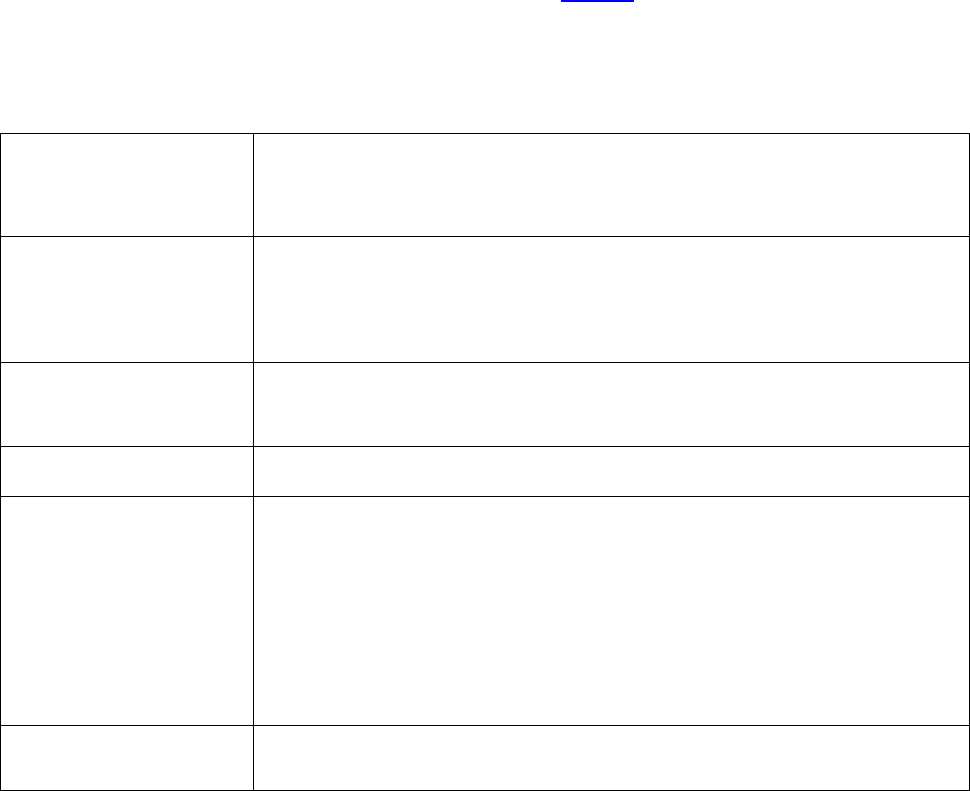
CFETP3E5X1, 17 APRIL 2024
PART 1
23
SECTION C - SKILL LEVEL TRAINING REQUIREMENTS
C1. Purpose. This section outlines the 3E5X1 specialty qualification requirements for each skill level
and establishes the mandatory requirements for each skill level's entry, award, and retention. The STS
in Attachment 2 identifies the core tasks, diamond tasks, knowledge items, and skill level requirements.
C2. Specialty Qualification Requirements. Refer to myFSS for the most current minimum
requirements for entry into the Engineering career field. See AFECD Attachment 4 for additional entry
physical requirements.
C2.1. Apprentice (3-Level) Training Requirements. (3E531)
KNOWLEDGE
Knowledge of computer operations (literacy) and mathematics including
algebra, geometry, and trigonometry. Completion of the technical training
apprentice course satisfies this requirement.
EDUCATION
Completion of high school or general educational development equivalency is
mandatory. Completion of courses such as algebra, geometry, trigonometry, and
computer operations are desirable. Completion of high school courses in
drafting and software applications is desirable.
TRAINING
Completion of the Engineering Apprentice Course is mandatory for award of this
skill level at Ft Leonard Wood, MO.
EXPERIENCE
None required.
OTHER
For entry, award, and retention of AFSC 3E531, must possess a valid state
drivers’ license to operate government motor vehicles (GMV) in accordance
with AFI 24-301, Vehicle Operations.
Normal color vision as defined in DAFMAN 48-123, Medical Examinations
and Standards.
Maintain local network access IAW AFI 17-130, Cybersecurity Program
Management and AFMAN 17-1301, Computer Security (COMPUSEC).
IMPLEMENTATION
The 3-skill level is awarded upon graduating the apprentice course and
submission by the Unit Training Manager at the members unit of assignment.

CFETP3E5X1, 17 APRIL 2024
PART 1
24
C2.2. Journeyman (5-Level) Training Qualifications. (3E551)
KNOWLEDGE
All 3E531 Knowledge Qualification apply to the 3E551 requirements.
EDUCATION
Completion of AFIT WMGT 301, Introduction to Project Management. This
course is mandatory for Active Duty and highly encouraged for the ARC
The following education is desirable and strongly encouraged:
CCAF Construction Technology Associate Degree (4VEB).
TRAINING
Completion of 5-level CDC course.
Completion of all the paper-based AFQTPs and their associated web-based
courses on myLearning on all core (5^) and diamond (♦) tasks with a passing
score of 80%.
Completion of the CE 5-Level Core Concepts web-based course located on
myLearning is mandatory for award of this skill level.
Certification of all 5-skill level core tasks identified with an asterisk (5^) in
the 5-skill level column of the STS.
Certification of all 5-skill level diamond tasks identified with a diamond (♦)
in the task column of the STS if the equipment is available. The minimum
requirement is the signing off tasks on the AFQTP Documentation Record.
Certification of duty position requirements as identified by the supervisor.
Complete certification of all CBRN TQT requirements identified with (TQT)
after the line item in the STS in MOPP 4. Annotate the training on the DAF
Form 623A or DAF Form 797.
Certification of duty position requirements identified by the supervisor.
Experience
Qualification in and possession of AFSC 3E531.
Have experience in CAD, GIS data collection, construction surveying, and
contingency beddown operations, and can support full-spectrum engineering
contingency operations.
.
OTHER
For entry, award, and retention of AFSC 3E551, must possess a valid state
driver’s license to operate government motor vehicles (GMV) in accordance
with AFI 24-301, Vehicle Operations.
Normal color vision as defined in DAFMAN 48-123, Medical Examinations
and Standards.
Maintain local network access IAW AFI 17-130, Cybersecurity Program
Management and AFMAN 17-1301, Computer Security (COMPUSEC).
IMPLEMENTATION
Initiate entry into 5-level upgrade training after the individual has completed
all 3-level requirements. Initiate qualification training any time individuals are
assigned duties they are not certified to perform. Use OJT, CDCs, AFJQSs,
and AFQTPs concurrently to obtain the necessary qualifications.

CFETP3E5X1, 17 APRIL 2024
PART 1
25
C2.3. Craftsman (7-Level) Training Requirements. (3E571)
KNOWLEDGE
All 3E551 knowledge requirements apply to the 3E571 requirements.
EDUCATION
Completion of AFIT 322, Introduction to Project Management and WENG 200,
Scoping and Estimating courses. These courses are mandatory for Active Duty
and highly encouraged for ARC.
The following education is desirable and strongly encouraged:
CCAF Construction Technology Associate Degree (4VEB).
TRAINING
Completion of all the paper-based AFQTPs and their associated web-based
courses on myLearning for all 7- skill level core (7^) and diamond (♦) tasks
with a minimum passing score of 80%.
Completion of the CE 7-Level Core Concepts web-based course located on
myLearning is mandatory for award of this skill level.
Certification of all 7- skill level core tasks identified with an (7^) in the core
task column of the STS.
Certification of all 7-skill level diamond tasks identified with a diamond (♦) in
the task column of the STS if the equipment is available. Minimum requirement
is the signing off tasks on the AFQTP Documentation Record.
Completion of 3E571 Craftsman Course.
Advanced Surveying course instructed at Fort Leonard Wood, MO.
Recommended attendance is between 5-14 years in service.
Contract Construction Inspector (MTT) course if assigned (or pending
assignment) to construction management. Recommended attendance is between
3-14 years in service.
Certification of duty position requirements identified by the supervisor.
EXPERIENCE
Qualified 3E551. Have significant experience in supervising CAD, GIS data
collection, construction surveying, material testing, contract inspection, and can
lead full-spectrum engineering contingency operations.
OTHER
For entry, award, and retention of AFSC 3E551, must possess a valid state
driver’s license to operate government motor vehicles (GMV) in accordance
with AFI 24-301, Vehicle Operations.
Maintain local network access IAW AFI 17-130, Cybersecurity Program
Management and AFMAN 17-1301, Computer Security (COMPUSEC).
Normal color vision as defined in DAFMAN 48-123, Medical Examinations
and Standards.
MSGT
Completing the Troop Construction Project Management Course (AFIT WMGT
437) is mandatory for Active Duty and required for promotion to MSgt. This
course is highly encouraged for Air Reserve Component MSgts. Note: this is
not a skill-level-awarding course.

CFETP3E5X1, 17 APRIL 2024
PART 1
26
IMPLEMENTATION
Initiate entry into 7-level upgrade training after the individual has completed all
5-level requirements and selected for SSgt. Initiate qualification training any
time individuals cannot perform their new duties. Use OJT, CDCs, AFJQSs, and
AFQTPs concurrently to obtain the necessary qualifications.
C2.4. Superintendent (9-Level) Training Requirements. (3E591)
KNOWLEDGE
Mandatory knowledge of Air Force training programs. CE policies, practices,
and procedures of base maintenance and operations, crafts, facilities,
equipment, and systems. Interpretations and applications of maintenance and
work force management. General construction, and repair methods and
procedures, including use and capacity of construction equipment.
EDUCATION
Completion of the grade appropriate EPME is mandatory.
The following education is desirable and strongly encouraged:
CCAF Construction Technology Associate Degree (4VEB)
Higher education through a civilian institution.
TRAINING
Completing Civil Engineer Superintendent Course AFIT WMGT 570 is
mandatory for Active Duty SMSgts. This course is highly recommended for
Air National Guard and Air Force Reserve SMSgts and mandatory for
promotion to CMSgt. Note: This is not a skill-level awarding course.
EXPERIENCE
For award of AFSC 3E591, qualification in and possession of AFSC 3E571.
Must be a SMSgt.
Expertise in directing functions such as CAD, GIS data collection,
construction surveying, materials testing, drafting, contract management,
and can manage full-spectrum engineering contingency operations.
OTHER
For entry, award, and retention of AFSC 3E531, must possess a valid state
drivers’ license to operate government motor vehicles (GMV) in accordance
with AFI 24-301, Vehicle Operations.
Normal color vision as defined in DAFMAN 48-123, Medical Examinations
and Standards.
Maintain local network access IAW AFI 17-130, Cybersecurity Program
Management and AFMAN 17-1301, Computer Security (COMPUSEC).
IMPLEMENTATION
Entry into 9-level training is initiated when an individual is selected for
SMSgt and is a fully qualified 7-Level. Qualification training is initiated any
time an individual is assigned duties they are not certified to perform.
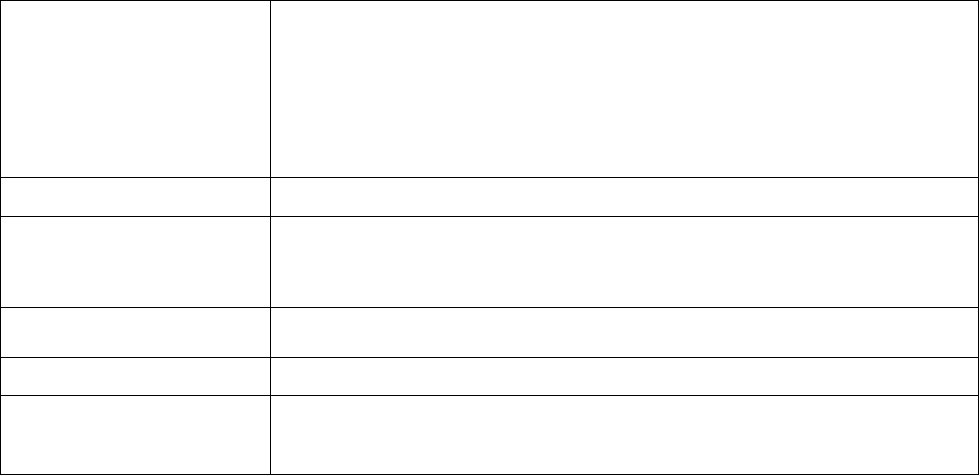
CFETP3E5X1, 17 APRIL 2024
PART 1
27
C2.5. Senior Enlisted Leader. (3E000)
KNOWLEDGE
Knowledge is mandatory of managing and directing personnel resource
activities, interpreting, and enforcing policy and applicable directives,
establishing control procedures to meet work goals and standards,
recommending, or initiating actions to improve operational efficiency, planning
and programming work commitments and schedules, developing plans
regarding facilities, supplies, and equipment procurement and maintenance.
TRAINING
Reserve Component Chief Orientation Course (AFRC only).
EXPERIENCE
Possess qualifications in feeder specialty (3E591) prior to award of Civil
Engineer Manger code 3E000. Managerial ability to plan, direct, coordinate,
implement, and control a wide range of work activity.
EDUCATION
Completion of the grade appropriate EPME is mandatory.
OTHER
N/A.
IMPLEMENTATION
Selection to CMSgt enters an individual into the Civil Engineer Manager Code
3E000. They must possess the qualifications from the feeder specialty (3E591).
CFETP3E5X1, 17 APRIL 2024
PART 1
28
SECTION D - RESOURCE CONSTRAINTS
D1. Purpose. This section identifies known resource constraints that preclude optimal training at the
schoolhouse, including information such as cost and manpower. Narrative explanations of each
resource constraint and an impact statement describing what effect each constraint has on training
are included. Also included in this section are actions required, Office of Primary Responsibility
(OPR) and target completion dates. If applicable, resource constraints will be, at a minimum,
reviewed and updated annually.
D2. Apprentice (3-Level) Training:
D2.1. Constraints. None.
D2.1.1 Impact.
D2.1.2. Resources Required.
D2.1.3. Action Required.
D2.2. OPR/Target Completion Date.
D3. Journeyman (5-Level) Training: Apprentice course graduates will use the current paper-based
CDC for upgrade training until the new web-based CDC is on-line.
D3.1. Constraints. None.
D3.1.1. Impact.
D3.1.2. Resources Required.
D3.1.3. Action Required.
D3.2. OPR/Target Completion Date.
D4. Craftsman (7-Level) Training:
D4.1. Constraints. None.
D4.1.1. Impact.
D4.1.2. Equipment Constraints.
D4.2. OPR/Target Completion Date.
D5. Superintendent (9-Level) Training: Not Applicable.
CFETP3E5X1, 17 APRIL 2024
PART 1
29
SECTION E - TRANSITIONAL TRAINING GUIDE
There are no transition training requirements for the Engineering Specialty. This section is
reserved.
CFETP3E5X1, 17 APRIL 2024
PART II
30
SECTION A - SPECIALTY TRAINING STANDARD
A1. Implementation. This STS will be used for technical training provided by AETC Army ITRO
Engineering Apprentice and Air Force Unique Training Courses with class beginning 8 April 2024
and graduating on or after 11 July 2024, and for the Craftsman course with classes beginning on 18
March 2024.
A2. Purpose. As prescribed in DAFMAN 36-2689, Training Program and in collaboration with the
Air Force CFM, it is mandatory for all civil engineers, regardless of duty assignment, to use the
paper-based STS or an automated training record, when available.
A2.1. Column 1 (Tasks, Knowledge, and Technical References). Lists the most common tasks,
knowledge, and supporting technical references (TRs) necessary for Airmen to perform duties in
the 3-, 5-, and 7-skill level.
A2.1.1. Task Qualification Tasks (TQT). In accordance with DAFI 10-2503, Chemical,
Biological, Radiological, Nuclear (CBRN) Defense Program. TQT requirements identified by
(TQT) after the line item of the STS are mandatory wartime skills that Airmen will perform while
wearing Individual Protective Equipment.
A2.2. Column 2 (Core Tasks). Column 2 identifies core tasks (specialty-wide training
requirements) by a number (5^ or 7^) in the skill level column. As a minimum, trainees must
complete all core and critical tasks for skill-level upgrades.
A2.2.1. Wartime Tasks. All tasks in the 3-level course column are considered wartime tasks. These
tasks will be taught in a streamlined training environment in response to a wartime scenario.
A2.2.2. Diamond Tasks. Tasks (column 1) identified by a diamond (♦) after the task item are
considered contingency/war tasks and are critical to the career field. Equipment shortfalls at most
locations have created problems with the actual hands-on certification of these tasks. When required
equipment is unavailable for instruction, completion of the corresponding task AFQTP is required
for upgrade/qualification training.
A2.3. Column 3 (Certification for OJT). Used to record completion of tasks and knowledge
training requirements. Use paper or automated training management applications to document
technician qualifications. Task certification of core and critical tasks requires a training
completion date and the initials of the trainee, trainer, and certifier. All non-core tasks require the
training completion date and initials of the trainee and trainer only.
A2.4. Column 4 (Proficiency Codes Used to Indicate Training/Information Provided). Indicates
formal training and correspondence course requirements. It shows the proficiency to be
demonstrated on the job by the graduate because of training on the task, knowledge, and career
knowledge provided by formal courses and correspondence courses. See CADRE/AFSC/CDC
listing maintained by the UTM for current CDC listings.
A2.5. Qualitative Requirements. This CFETP contains a proficiency code key used to indicate the
level of training and knowledge provided by resident training, and career development courses.

CFETP3E5X1, 17 APRIL 2024
PART II
31
A2.6. Job Qualification Standard (JQS). The STS becomes an AFJQS for OJT in an automated
training application and used according to DAFMAN 36-2689, Training Program. Supervisors and
trainers use AFQTPs to ensure Air Force-wide standardized procedures for training core tasks.
When used as a JQS, the following requirements apply:
A2.6.1. Documentation. Document and certify completion of training:
A2.6.1.1. Duty position. Duty position requirements will be developed and identified by the work
center supervisor, maintained in the shop, or loaded into the automated training management
application when available. Completing core, critical, and diamond tasks is mandatory for all duty
positions. Work center supervisors assign Airmen to the correct duty position.
A2.6.1.2. AFQTP Training and Documentation. AFQTPs or AFQTP assessments for all core (5^
or 7^) tasks and their completion are mandatory to fulfill task knowledge requirements for
upgrade/qualification training. Each AFQTP provides the step–by–step procedures for the trainee,
trainer, and certifier in completing each core or diamond task and instructions on how to document
the training in the individual automated training record.
A2.6.1.2.1. Training. Required documentation of the start and completion of the AFQTP in the
QTP tracker (Attachment 3) or the automated training record for all core tasks. Diamond tasks
require the completion of the web-based course (with the review and post-test located in the
program) or completing the AFQTP assessment on myLearning to determine if the trainee has
attained the required knowledge level. Once the trainee has completed the web-based course or
AFQTP assessment, Airmen provide the course completion certificate to the trainer/supervisor for
annotation of the QTP tracker or into the automated training record.
A2.6.1.2.2. Hands-On Training. DO NOT sign off the tasks in the JQS until the trainee has
completed hands-on/certification training. For diamond tasks, if the equipment is not available at
home station, completing the AFQTP or AFQTP assessment is the ONLY requirement for upgrade.
Sign off the paper JQS or in the automated training record when the trainee receives training on the
equipment at home station or at a TDY location.
A2.6.2. Transcribing from previous versions to new CFETP. Transcribing documentation to a
new CFETP is an administrative function, not a re-evaluation of training. Therefore, supervisor and
trainer are considered synonymous with documentation. Transcribe within 120 calendar days (240
calendar days for ARC) of the CFETP revision date or from the date revision is posted to the
automated training records system.
A2.6.2.1. Previous training certification not listed. Place an entry into the trainee DAF Form
623A; the transcriber and trainee must acknowledge entry.
A2.6.2.2. Transcribing external training certification. If a trainee attended a formal training
course and received appropriate accreditation, place an entry into the trainee’s DAF Form 623A.
A2.6.3. Documenting Career Knowledge. When a CDC course is not available, the supervisor
identifies STS training references that the trainee requires for career knowledge IAW DAFMAN
36-2689, Training Program and ensures, as a minimum, that trainees cover all mandatory items
specified in AFM 36-2100, Military Utilization and Classification. For two-time CDC course exam

CFETP3E5X1, 17 APRIL 2024
PART II
32
failures, the unit commander will take appropriate action IAW DAFMAN 36-2689, Training
Program. Document career knowledge to submit a CDC course waiver.
A2.6.4. Decertification. When a supervisor determines an Airman is unqualified on a task
previously certified for their duty position, the supervisor erases the previous certification or deletes
the certification when using an automated system. Enter appropriate remarks pertaining to the reason
for decertification on the DAF Form 623A or the automated version. Once an Airman has shown
proficiency, the trainer and certifier can sign off the task(s).
A2.6.5. Recertification. Supervisors use the DAF Form 1098 to document tasks requiring recurring
training or evaluation. Air Force directives may identify tasks in the CFETP requiring special
certification or evaluation. This form may be printed and filed in the DAF Form 623. This form will
remain in the training record for tasks requiring certification until superseded or no longer required.
A2.6.6. Training Standard. Train and certify Airman to the "go" level. Go means the individual
can perform the task without assistance and meets the local requirements for accuracy, timeliness,
and correct use of procedures. This standard of training equates to a 3c in the proficiency code key.
Use available AFQTPs to train tasks.
A2.7. Specialty Training Standard. The STS is a guide for developing promotion tests used in the
Weighted Airman Promotion System (WAPS). Senior NCOs with extensive practical experience in
their career fields develop Specialty Knowledge Tests (SKTs) at the AETC Airman Advancement
Division. Subject matter experts authenticate WAPS material and reference AF Specialty-specific
occupational analysis data to develop SKTs. They develop questions based on the study references
listed in the Enlisted Promotions References and Requirements catalog. Individual responsibilities
are in AFM 36-2664, Personnel Assessment Program. WAPS does not apply to the Air National
Guard or Air Reserve Forces.
A3. Recommendations. Report unsatisfactory performance of individual course graduates to 782
TRG/TGE, 917 Missile Road, Rm 1A300, Sheppard AFB TX 76311-2368 or E-mail
[email protected]. Reference specific STS line item and/or paragraphs. For a quicker response, call
the Customer Service Information Line (CSIL) at DSN 736-2574 anytime day or night.
CFETP3E5X1, 17 APRIL 2024
PART II
33
SECTION B - COURSE OBJECTIVE LIST (COL)
B1. Measurement. Measurement of each objective is indicated as follows:
B1.1. Written Test (W). Used to sample each knowledge objective and the knowledge components of
performance objectives.
B1.2. Performance Test (P). Used under specified conditions in a formal testing mode to measure
student accomplishment of performance objectives after completing the teaching-learning activity.
B1.3. Progress Check (PC). Administered by the instructor during classroom or laboratory instruction
time to assess the student’s accomplishment of knowledge or performance objectives.
B2. Standard. Standards for measurement indicate the course objectives and delineate the individual
progress checklist and rubrics. The minimum standard is 70% on knowledge progress checks.
Instructors assist students as the standard for performance progress checks and as warranted during
the progress check. Students may be required to repeat all or parts of the learning outcomes until the
student attains satisfactory performance.
B3. Proficiency Level. Most task performance is taught to the “2b” proficiency level, meaning the
student can do most parts of the task but needs assistance on the hardest parts (partially proficient).
The student can also determine step-by-step procedures for doing the task.
B4. Course Objective List. The COL lists the objectives in the sequence taught by Blocks of
Instruction. Per AETCI 36 - 2651, Basic Military and Technical Training, Supervisors can request a
detailed listing of the initial skills course objectives by written request through the requesting
organizations MAJCOM to the 368th Training Squadron, 3E5X1 Training Manager, 6007 Cooley
Ave Fort Leonard Wood, MO 65473.

CFETP3E5X1, 17 APRIL 2024
PART II
34
SECTION C - SUPPORT MATERIAL
C1. Air Force Qualification Training Packages.
C1.1. The 3E5X1 AFQTP Tracker identifies the mandatory AFQTPs for each skill level.
C1.2. For a complete list of up-to-date AFQTPs applicable to the 3E5X1 AFSC, go to myLearning
or CE DASH under the documents tab in the AFSC AFQTP folder.
C1.2.1. In addition to the paper-based AFQTPs there are web-based courses or assessments
developed, for specific tasks available on myLearning under Civil Engineering in their specialty
topic area.
C2. Career Development Course (CDC) Assessment for Civil Engineer CDC/DL Course.
C2.1. FDMs have developed CDC assessments for their career field, and they are located on the
myLearning under Civil Engineering in their specialty Career Development Courses Assessments.
C2.2. The sole purpose of CDC assessments is to provide the Unit Commander, UTM, and the
supervisor, a predictive indicator of whether the trainee has studied sufficiently to successfully pass
their CDC end of course (EOC) exam(s).

CFETP3E5X1, 17 APRIL 2024
PART II
35
SECTION D – EDUCATION AND TRAINING COURSE INDEX
D1. Purpose. This section of the CFETP identifies training courses available for the
Engineering specialty. Refer to Education and Training Course Announcements (ETCA) web
site for information on the Air Force in-residence courses.
D2. Air Force In-Residence Courses/Mobile Training Team (MTT) Courses.
Course Number
Title
Developer
J9AQA3E531 00RF
Engineering Apprentice (ITRO)
ARMY
JCAQP3E531 00AB
Survey Apprentice
368 TRS
JCABP3E531 00AG
Engineering Apprentice AF Unique
368 TRS
JCACP3E571 01AD
Engineering Craftsman
368 TRS
JCAZP3E571 01AB
Advanced Surveying
368 TRS
J7AZT3E571 01AB
Contract Construction Inspector (MTT)
368 TRS
WMSGT 570
Civil Engineer Superintendent Course
AFIT
D3. Air Force Career Development Academy (AFCDA).
Course Number
Title
Edit Code (EC)
CDC 3E551
Engineering Journeyman
03
D4. Exportable/Web-based Courses/Information.
Course Number
Title
Developer
Web based
BEAR Base Planning and Lay out
AFCEC
Web based
Construction Safety and Health Requirements
AFCEC
Web based
Engineering Contingency Responsibilities
AFCEC
Web based
GeoExPT
AFCEC
Web based
Mishap Survey
AFCEC
Web based
Optical Surveying Qualification Training
AFCEC
Web based
Repair Quality Criteria
AFCEC
Web based
Soil Testing Under Field Condition
AFCEC
Web based
Wartime Construction Management
AFCEC
WENG 200
Scoping and Estimating
AFIT
WMGT 301
Intro to Asset Management
AFIT
WMGT 322
Introduction to Project Management
AFIT
WENG 400
Life-Cycle Cost Estimating
AFIT
WGMT 422
Project Management Course
AFIT
WMGT 423
Project Programming Course
AFIT
WMGT 437
Troop Construction Project Management
Course
AFIT
WENG 519
Air Force Installation Planning Principles
AFIT
WENG 520
Comprehensive Planning & Development
AFIT
WENG 555
Airfield Pavement Construction Inspection
AFIT
CFETP3E5X1, 17 APRIL 2024
PART II
36
D5. Courses/CDCs under Development/Revision.
Course Number
Title
ECD
3E551 CDC M-01
Engineering Journeyman
June 2024
CFETP3E5X1, 17 APRIL 2024
PART II
37
SECTION E – MAJCOM UNIQUE REQUIREMENTS
There are currently no MAJCOM unique requirements. This area is reserved.
CFETP3E5X1, 17 APRIL 2024
PART II
38
SECTION F - HOME STATION TRAINING
F1. Purpose. This section aims to identify the tasks, training references, and sources available in
support of contingency/wartime training. Civil Engineer forces will train to meet the full range of tasks
expected in the contingency environment. Training ranges from knowledge-type training conducted in
a classroom to task-oriented hands-on training conducted in the field.
F2. Foundational Training (FT). FT is knowledge-based and hands-on training conducted at the
individual’s home station for contingency operations. The CE Commander ensures training is provided,
documented, and appoints subject matter experts to conduct training as required.
F3. Combat Skills Training (CST). CST is an integral part of any FT program. Lessons learned from
past and current contingency operations have taught us the importance of maintaining a higher level of
combat readiness. Although the inclusion of combat skills-focused training into FT does not fully
prepare CE personnel to work in a high-threat combat environment, the steps taken to enhance training
will help elevate units to a readiness level capable of supporting safe and effective operations in low
to medium-risk combat environments.
F4. Skills And Knowledge Training (SKT). Wartime or contingency environments often involve
specialized and unique mission-essential equipment that civil engineers do not use daily. Mission
essential contingency equipment and trainer expertise are unavailable at most CONUS installations
due to the cost and complexity. Personnel must be hands-on certified, and the certification must be
documented in their CFETP. AFI 10-210, Prime Base Engineer Emergency Force (BEEF) Program,
Attachment 4, identifies the minimum number of trained personnel (positions) by specialty and the
frequency requirements. Inadequate training on these key equipment items can negatively affect Air
Force contingency operations.
F5. AF Expeditionary (ES) Training Requirement. The AF must train as it fights and continually
assess expeditionary readiness training across the AF continuum of learning to produce Airmen ready
to support all combatant commands. Expeditionary readiness training must be relevant, timely,
synchronized, standardized, and integrated to ensure combatant commands provide a standard
presentation of forces to support specified mission requirements while maximizing efficiency.
Expeditionary readiness training divides training into three categories to ensure Airmen receive the
right training at the right time: Basic Airman Readiness, Basic Deployment Readiness, and Advanced
Deployment Readiness. For additional information, refer to AFI 10-405, Ready Airmen Training.
F6. Expeditionary Training References.
F6.1. AFI 10-209, RED HORSE Program, Chapter 3 and Attachments 4-9 identify RED HORSE
training requirements.
F6.2. AFI 10-210, Prime Base Engineer Emergency Force (BEEF) Program, Chapter 4 and
Attachments 2-8 identify the Prime BEEF training requirements.
F6.3. DAFMAN 36-2689, Training Program, and AFI 10-405, Ready Airmen Training, identifies
expeditionary readiness training requirements.

CFETP3E5X1, 17 APRIL 2024
PART II
39
F6.4. Web-based Training products are available on myLearning. Airmen completing these courses
can receive credit for FT. Use group WBT products in a classroom setting to train as many personnel
as possible. Document group training attendance on a sign-in roster IAW AFI 10-210.
BY ORDER OF THE SECRETARY OF THE AIR FORCE
OFFICIAL TOM D. MILLER, Lieutenant General, USAF
DCS/Logistics, Installation and Mission Support
4 Attachments:
1. Qualitative Requirements (Proficiency Code Key)
2. 3E5X1 Specialty Training Standard (STS)
3. 3E5X1 AFQTP Documentation Record
4. 3E5X1 Supplemental Course Training Standards
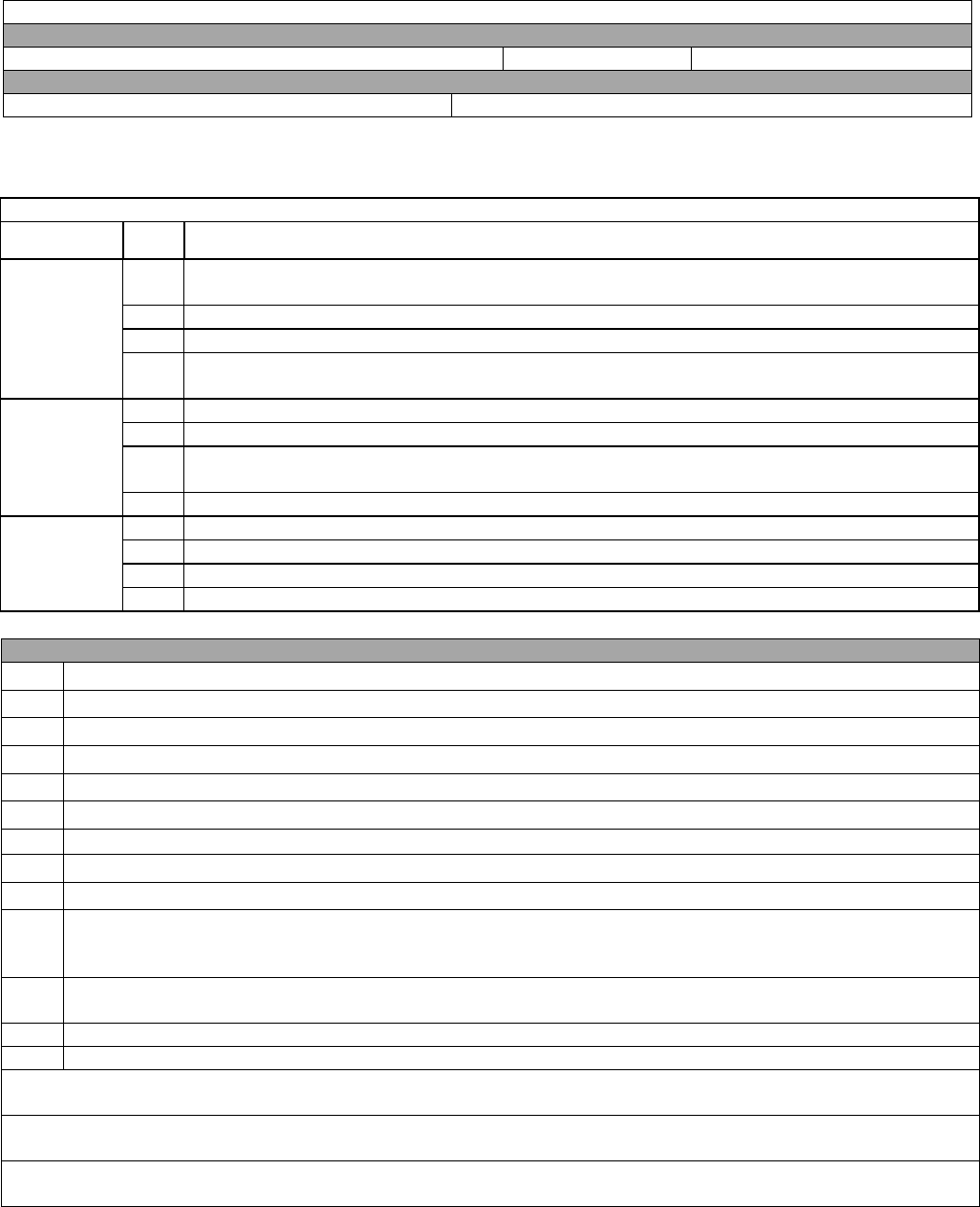
CFETP3E5X1, 17 APRIL 2024
Attachment 1
Qualitative Requirements (Proficiency Code Key)
40
A1. Qualitative Requirements
This Block Is For Identification Purposes Only.
Name Of Trainee
Printed Name (Last, First, Middle Initial)
Initials (Written)
SSAN (Last four)
Printed Name Of Trainer, Certifying Official And Written Initials
N/I
N/I
Note: Place a continuation sheet behind the CFETP when additional space is required.
Proficiency Code Key
Scale
Value
Definition: The individual
Task
Performance
Levels
1
Can do simple parts of the task. Needs to be told or shown how to do most of the task. (Extremely
Limited)
2
Can do most parts of the task. Needs only help on hardest parts. (Partially Proficient)
3
Can do all parts of the task. Needs only a spot check of completed work. (Competent)
4
Can do the complete task quickly and accurately. Can tell or show others how to do the task.
(Highly Proficient)
Task
Knowledge
Levels
a
Can name parts, tools, and simple facts about the task. (Nomenclature)
b
Can determine step-by-step procedures for doing the task. (Procedures)
c
Can identify why and when the task must be done and why each step is needed. (Operating
Principles)
d
Can predict, isolate, and resolve problems about the task. (Advanced Theory)
Subject
Knowledge
Levels
A
Can identify basic facts and terms about the subject. (Facts)
B
Can identify relationship of basic facts and state general principles about the subject. (Principles)
C
Can analyze facts and principles and draw conclusions about the subject. (Analysis)
D
Can evaluate conditions and make proper decisions about the subject. (Evaluation)
Explanations
5
This symbol in the core task column indicates that it is a 5-level core task.
7
This symbol in the core task column indicates that it is a 7-level core task.
9
This symbol in the core task column indicates that it is a 9-level core task.
^
This symbol in the core task column indicates that 3
rd
party task certification is required.
*
This symbol in the deployment/SEI column indicates that the task is a deployment task.
+
This symbol in the deployment/SEI column indicates that the task is a Special Experience Identifier.
~
This symbol in the deployment/SEI/TQT column indicates that the task is CBRN Qualification Task
2b/b
This mark in the course columns shows that training is required but not given due to resource limitations.
(I)
This mark in the course columns is used to show that training is multi-service.
♦
A diamond in the task column indicates it is a core task, however due to equipment or funding constraint at some
units, the completion of the AFQTP and/or web-based training course is all that is required for upgrade. Hands-on
certification must be accomplished at the first opportunity when equipment or funding is available.
TQT
TQT in the task column indicates the task is a CBRN Qualification Task. IAW AFI 10-2503, these tasks will also
be accomplished in MOPP 4 and annotated on the DAF Form 623A or DAF Form 797.
▲
A black triangle in the task column indicates a AFQTP is available for use.
A white triangle in the task column indicates a AFQTP is under development.
Specific tasks not identified with a symbol or proficiency code key indicate no provided training in the course. Major
commands and/or units may establish scale values and combat training as mission requirements dictate.
Use a task-knowledge scale value alone or with a task-performance scale value to define a level of knowledge for a
specific task.
Use a subject knowledge scale value alone to define a level of knowledge for a subject not directly related to any specific
task or for a subject common to several tasks.
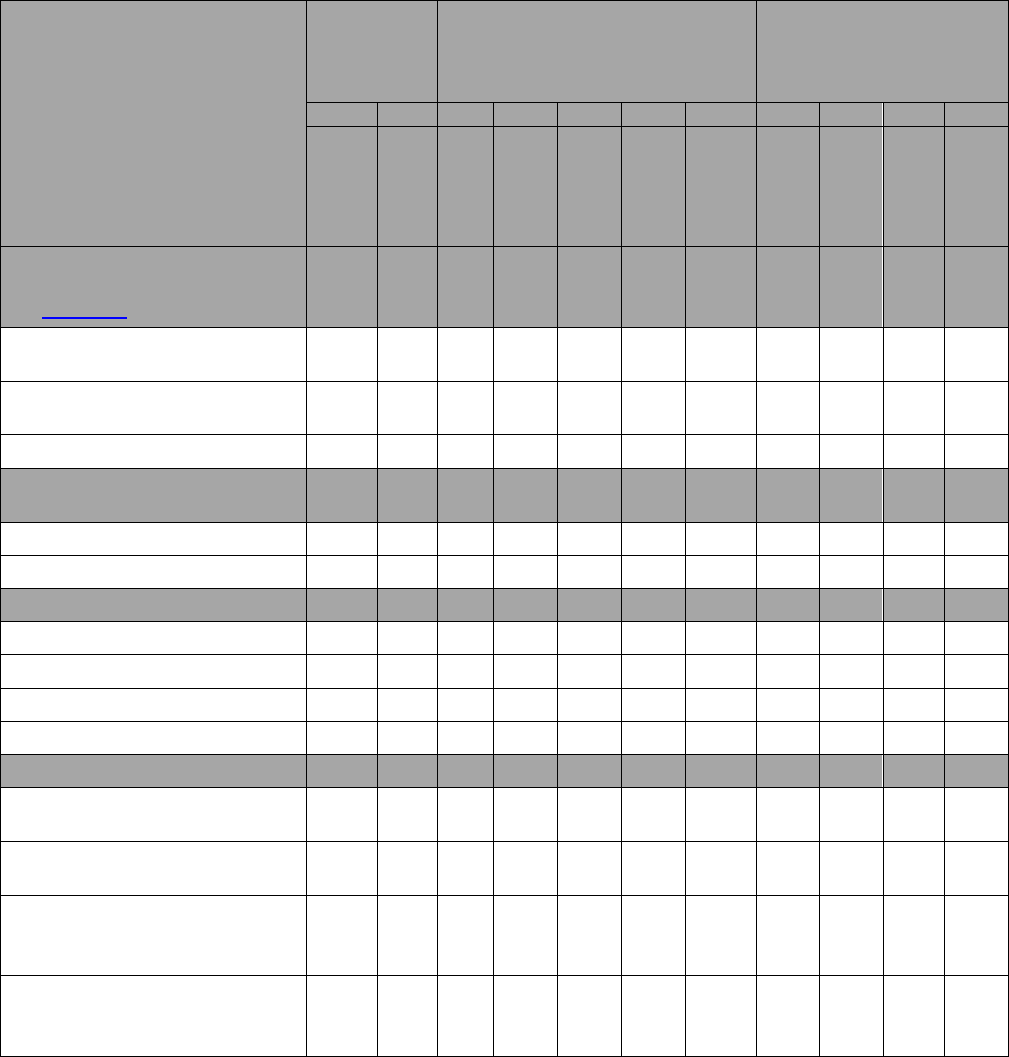
CFETP3E5X1, 17 APRIL 2024
Attachment 2
Specialty Training Standard (STS)
41
A2. Specialty Training Standard
A2.1. Identification. In the automated training record User Profile section, the UTM will assign
individuals to the correct work center upon in processing into the unit.
A2.2. Specialty Tasks. The following are tasks the work center supervisor will use to create the duty
task list for each duty position created for their work center.
1. Tasks, Knowledge, and
Technical References
2. Tasks
3. Certification For OJT
4. Proficiency Codes Used To
Indicate Training/Information
Provided via DL and/or Course
A
B
A
B
C
D
E
A
B
C
D
Core
Cert ^
Deployment *
SEI + TQT ~
Tng
Start
Tng
Comp
Trainee
Initials
Trainer
Initials
Certifier
Initials
3
Lvl
5
Lvl
OJT
7
Lvl
1.0. CIVIL ENGINEER (CE)
CORE CONCEPTS
TR: myLearning
1.1. Accomplish CE 5-Level Core
Concepts Course
5
1.2. Accomplish CE 7-Level Core
Concepts Course
7
1.3. Career Progression
A
1.4. AFSC
Duties and
Responsibilities
1.4.1. Peacetime
A
1.4.2. Contingency
A
1.5. Functions of:
1.5.1. Base Civil Engineer (BCE)
A
1.5.2. Prime BEEF
A
1.5.3. RED HORSE
A
1.5.4. HQ ANG/AFRC
A
1.6. Training
1.6.1. Civil Engineering Training
Ecosystem
A
B
1.6.2. Attend AFIT WENG 200
Scoping and Estimating (AD Only)
7
1.6.3. Attend AFIT WMGT 301
Introduction to Asset Management
(AD Only)
5
1.6.4. Attend AFIT WMGT 322
Introduction to Project
Management (AD Only)
7
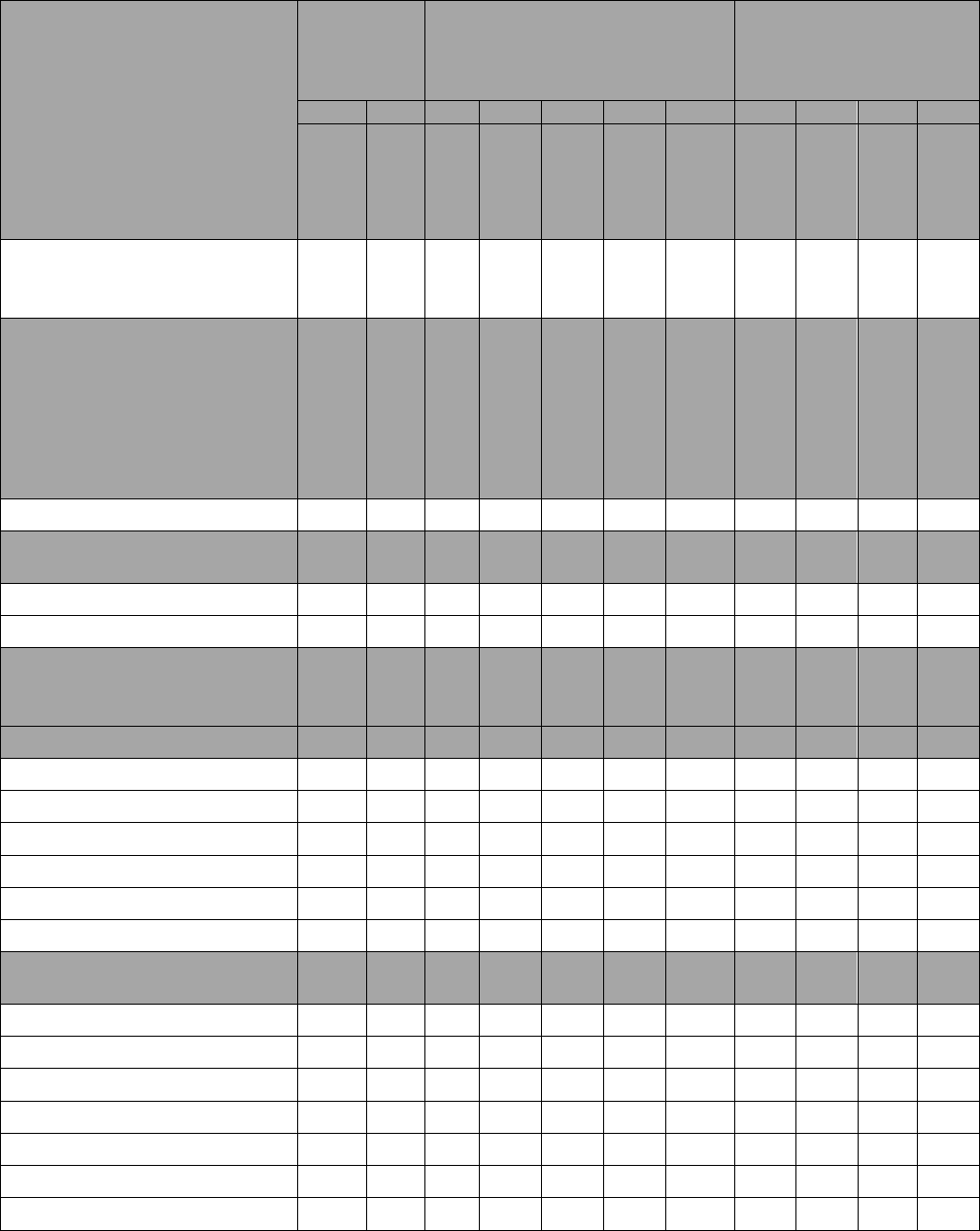
CFETP3E5X1, 17 APRIL 2024
Attachment 2
Specialty Training Standard (STS)
42
1. Tasks, Knowledge, and
Technical References
2. Tasks
3. Certification For OJT
4. Proficiency Codes Used To
Indicate Training/Information
Provided via DL and/or Course
A
B
A
B
C
D
E
A
B
C
D
Core
Cert ^
Deployment *
SEI + TQT ~
Tng
Start
Tng
Comp
Trainee
Initials
Trainer
Initials
Certifier
Initials
3
Lvl
5
Lvl
OJT
7
Lvl
1.6.5. Attend AFIT WMGT 437
Troop Construction Project
Management (AD Only)
2.0. COMPUTER-AIDED
DRAFTING (CAD) and Design
TR: ERDC/ITL TR-12-X, A/E/C CAD
Standard; TM 3-34.51, American National
Standards Institute; Architectural and Graphic
Standards; AutoCAD Civil 3D Essentials
Training Volume I/II/III (DL).
AFQTP Module 2
2.1. Fundamentals of Drafting
B/I
C
2.2. Engineering (Manual)
Sketches
2.2.1. Interpret
b
3c
2.2.2. Create
2b/I
b
3c
2.3. CAD Principles (perform
tasks using software listed in CE
UTC)
2.3.1. Set up Drawings
2.3.1.1. Paper space
5^
2b/I
b
3c
2.3.1.2. Model space
5^
2b/I
b
3c
2.3.1.3. Units
5^
2b/I
b
3c
2.3.1.4. Plot styles
5^
2b/I
b
3c
2.3.1.5. Layers
5^
2b/I
b
3c
2.3.1.6. Maps
5^
2b/I
3c
2.3.2. Utilize Drawings
Commands
2.3.2.1. Draw
5^
2b/I
c
3c
3c
2.3.2.2. Modify
5^
2b/I
c
3c
3c
2.3.2.3. Layers
5^
2b/I
c
3c
3c
2.3.2.4. Annotation
5^
2b/I
c
3c
3c
2.3.2.5. Blocks
5^
2b/I
c
3c
3c
2.3.2.6. Properties
5^
2b/I
c
3c
3c
2.3.2.7. Reference Files
5^
2b/I
c
3c
3c
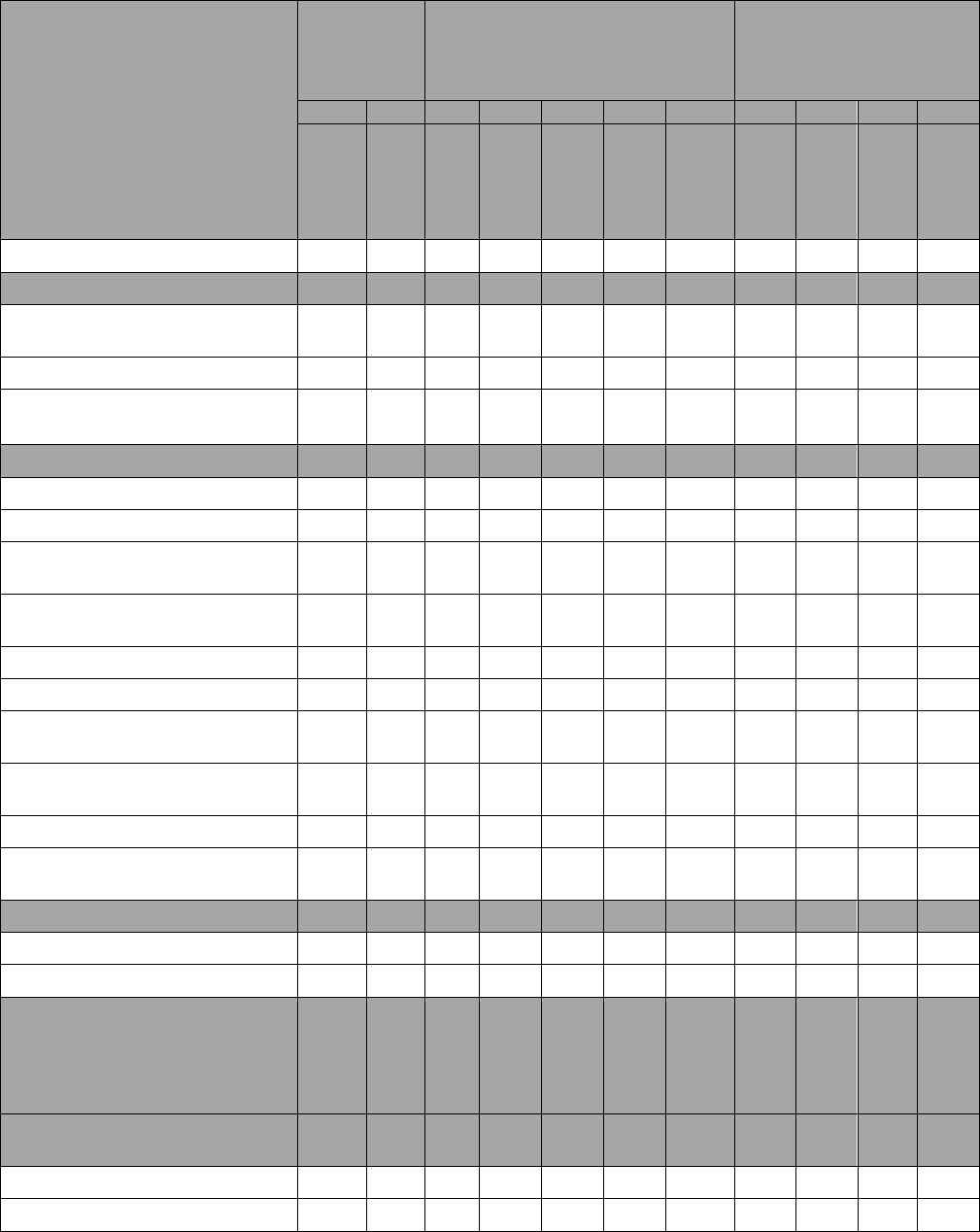
CFETP3E5X1, 17 APRIL 2024
Attachment 2
Specialty Training Standard (STS)
43
1. Tasks, Knowledge, and
Technical References
2. Tasks
3. Certification For OJT
4. Proficiency Codes Used To
Indicate Training/Information
Provided via DL and/or Course
A
B
A
B
C
D
E
A
B
C
D
Core
Cert ^
Deployment *
SEI + TQT ~
Tng
Start
Tng
Comp
Trainee
Initials
Trainer
Initials
Certifier
Initials
3
Lvl
5
Lvl
OJT
7
Lvl
2.3.2.8. Print (Plot)
5^
c
3c
3c
2.3.3. Drawing Management
2.3.3.1. Create drawings file
directories
1a/I
b
2.3.3.2. Maintain Drawing Files
1a/I
b
2.3.3.3. Utilize standards, such as
AEC, ANSI, AGS, ISO
5^
2b/I
b
3c
3c
2.4. Technical Drawings
2.4.1. Produce Civil Drawings
5^
2b/I
b
3c
3c
2.4.2. Interpret Civil Drawings
7^
3c
2.4.3. Produce Architectural
Drawings
5^
2b/I
b
3c
3c
2.4.4. Interpret Architectural
Drawings
7^
3c
2.4.5. Produce Structural Drawings
5^
2b/I
b
3c
3c
2.4.6. Interpret Structural Drawings
7^
3c
2.4.7. Produce Mechanical
Drawings
5^
2b/I
b
3c
3c
2.4.8. Interpret Mechanical
Drawings
7^
3c
2.4.9. Produce Electrical Drawings
5^
2b/I
b
3c
3c
2.4.10. Interpret Electrical
Drawings
7^
3c
2.5. Convert Data
2.5.1. CAD to GIS
5^
2b
b
3c
2.5.2. GIS to CAD
5^
2b
b
3c
3.0. BUILDING INFORMATION
MODELING (BIM)
TR: American National Standards Institute;
Architectural and Graphic Standards;
Architectural, Engineering & Construction
3.1. Building Information
Modeling
3.1.1. Principles Modeling
3.1.2. Parametric Modeling
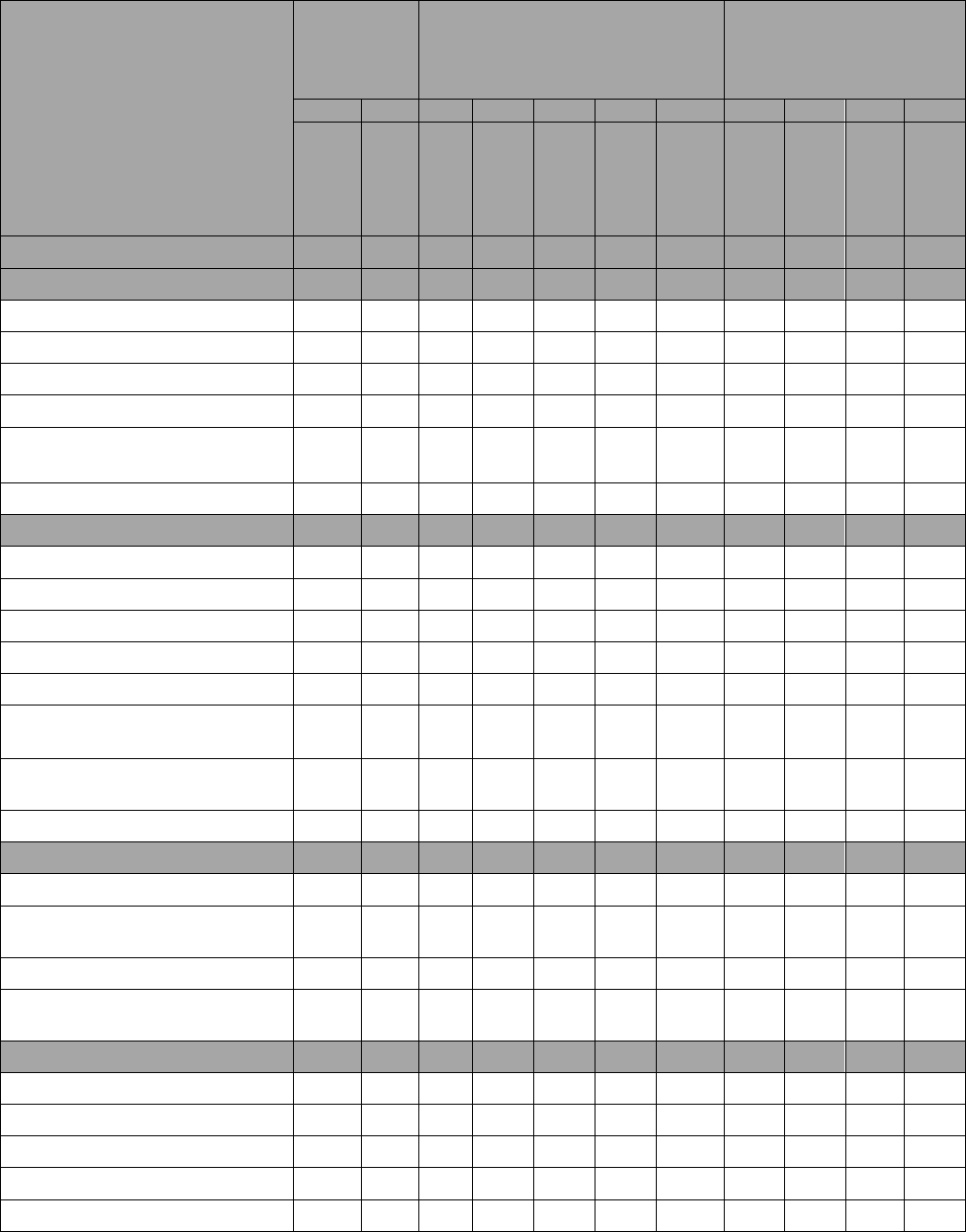
CFETP3E5X1, 17 APRIL 2024
Attachment 2
Specialty Training Standard (STS)
44
1. Tasks, Knowledge, and
Technical References
2. Tasks
3. Certification For OJT
4. Proficiency Codes Used To
Indicate Training/Information
Provided via DL and/or Course
A
B
A
B
C
D
E
A
B
C
D
Core
Cert ^
Deployment *
SEI + TQT ~
Tng
Start
Tng
Comp
Trainee
Initials
Trainer
Initials
Certifier
Initials
3
Lvl
5
Lvl
OJT
7
Lvl
3.2. BIM Principles
3.2.1. Drawing Set up
3.2.1.1. Project Template
3.2.1.2. Units
3.2.1.3. Plot styles
3.2.1.4. Model views
3.2.1.5. Model organization
(levels & grids)
3.2.1.6. Collaboration (work sets)
3.2.2. Drawing Commands
3.2.2.1. Display control
3.2.2.2. Draw
3.2.2.3. Edit
3.2.2.4. Dimension
3.2.2.5. Text
3.2.2.6. Create and utilize
components (families)
3.2.2.7. Utilize reference
files/linked files or models
3.2.2.8. Print/Plot
3.3. BIM Management
3.3.1. Project template
3.3.2. Standards utilization such as
AEC, ANSI, AGS
3.3.3. Model management
3.3.4. Software license
management
3.4. Drawing Production
3.4.1. Create sheets
3.4.2. Rendering (camera views)
3.4.3. Schedules
3.4.4. Data Collection
3.4.5. Data Management
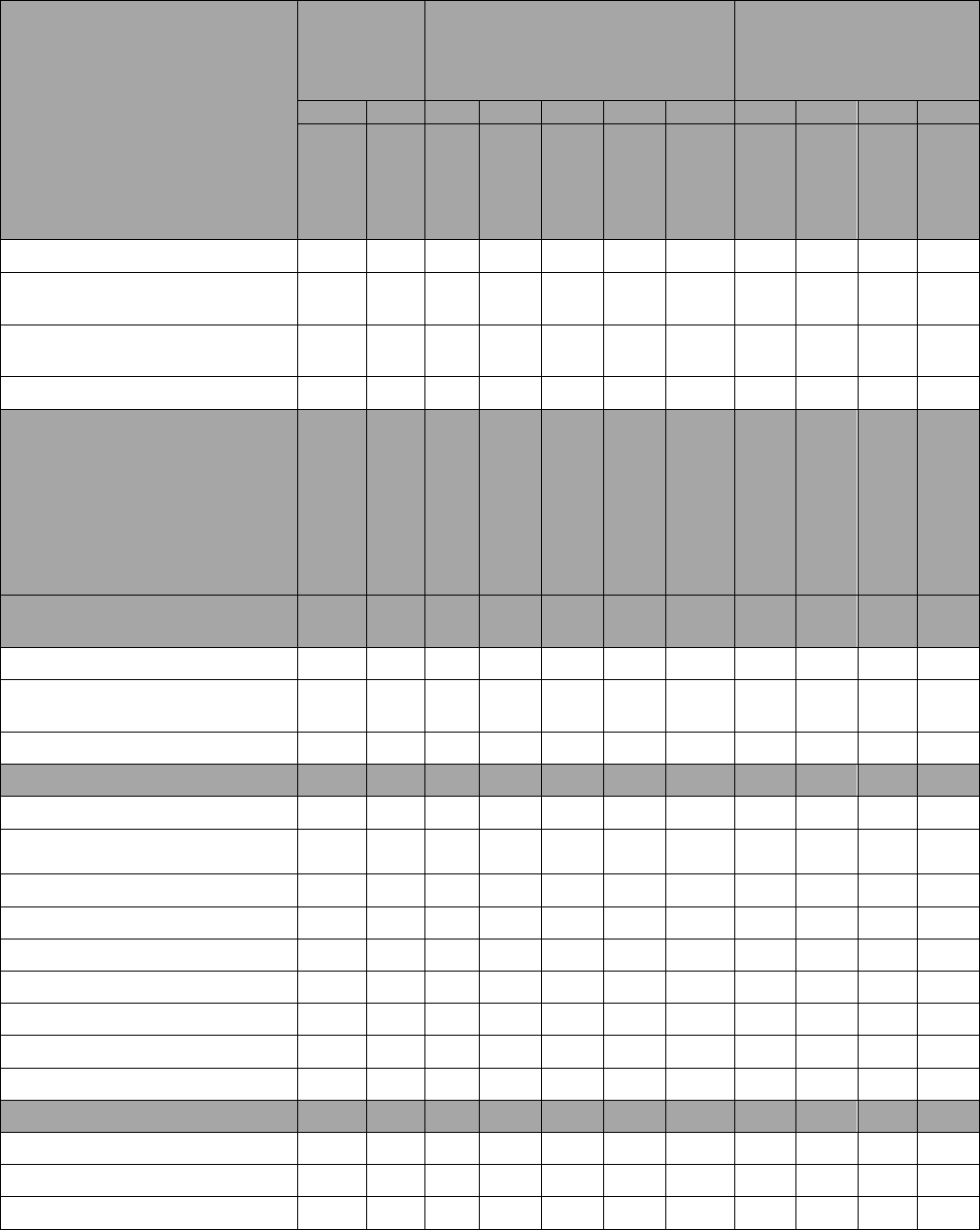
CFETP3E5X1, 17 APRIL 2024
Attachment 2
Specialty Training Standard (STS)
45
1. Tasks, Knowledge, and
Technical References
2. Tasks
3. Certification For OJT
4. Proficiency Codes Used To
Indicate Training/Information
Provided via DL and/or Course
A
B
A
B
C
D
E
A
B
C
D
Core
Cert ^
Deployment *
SEI + TQT ~
Tng
Start
Tng
Comp
Trainee
Initials
Trainer
Initials
Certifier
Initials
3
Lvl
5
Lvl
OJT
7
Lvl
3.4.6. Walkthrough Creation
3.4.7. Technical Review of
Drawings
3.4.8. QA/QC - Clash detection
(Navisworks)
3.4.9. QA/QC - Model quality
4.0. GEOGRAPHIC
INFORMATION SYSTEM (GIS)
TR: Federal Geographical Data Committee;
Spatial Data Standards for Facilities,
Infrastructure, and Environment (SDSFIE);
AFI 32-10112; International Organization for
Standards (ISO).
AFQTP 3E5X1 Module 4
4.1. Geographic Information
Systems
4.1.1. Fundamentals of GIS
A
B
4.1.2. Common Installation Picture
(CIP)
A
B
4.1.3. Geospatial Datasets
A
B
4.1.4. Data Models
4.1.4.1. Raster
B
B
4.1.4.2. Vector
B
B
4.1.4.3. Tabular
B
B
4.1.5. Map projections
B
B
4.1.6. Coordinate systems
B
B
4.1.7. Datums
B
B
4.1.8. Imagery sources
B
B
4.1.9. Import imagery
5^
2b
b
3c
4.1.10. Export imagery
5^
2b
b
3c
4.2. Create Geospatial Data
4.2.1. GIS File Formats
5^
2b
b
3c
4.2.2. Metadata
5^
2b
b
3c
4.2.3. Vector
5^
2b
b
3c
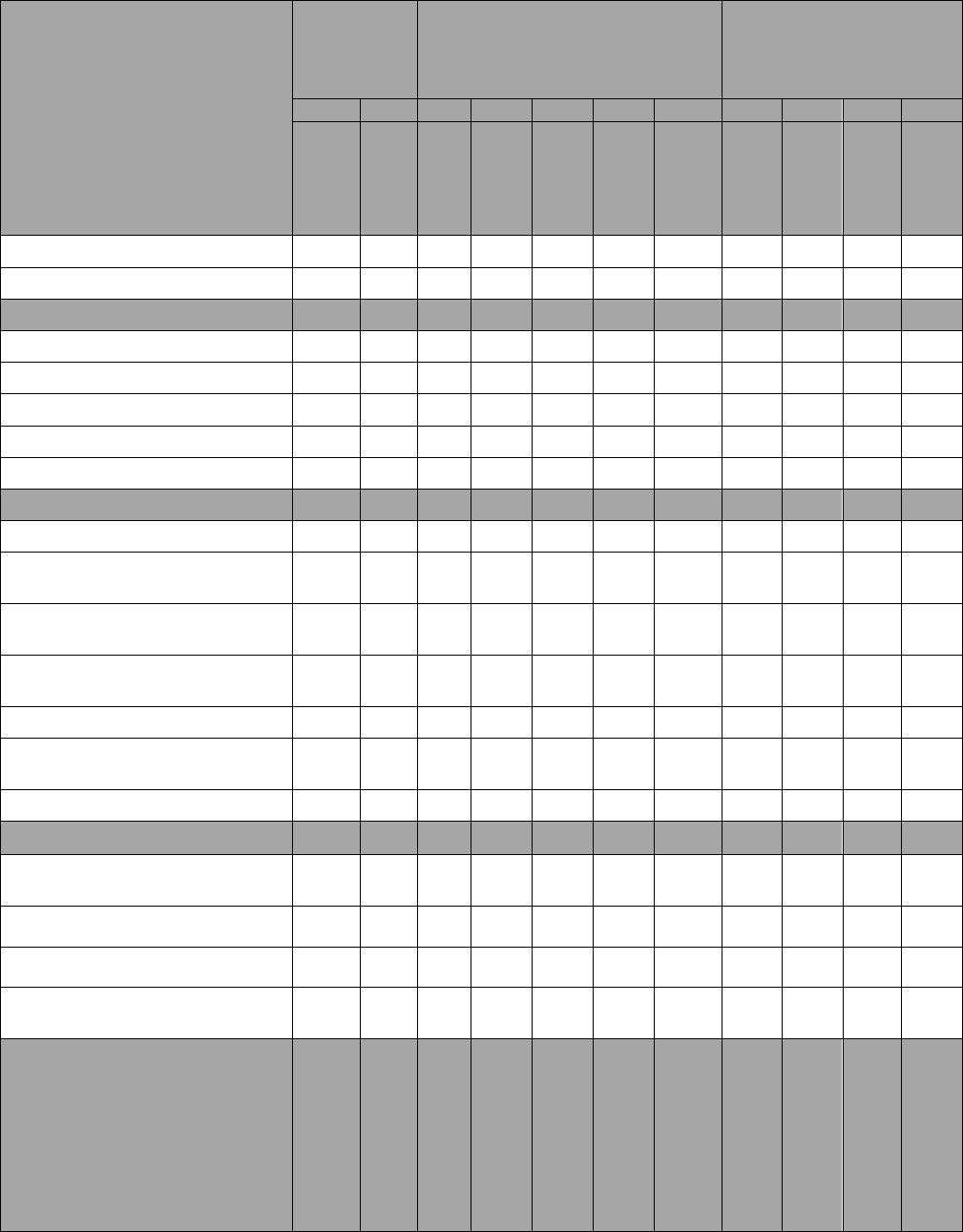
CFETP3E5X1, 17 APRIL 2024
Attachment 2
Specialty Training Standard (STS)
46
1. Tasks, Knowledge, and
Technical References
2. Tasks
3. Certification For OJT
4. Proficiency Codes Used To
Indicate Training/Information
Provided via DL and/or Course
A
B
A
B
C
D
E
A
B
C
D
Core
Cert ^
Deployment *
SEI + TQT ~
Tng
Start
Tng
Comp
Trainee
Initials
Trainer
Initials
Certifier
Initials
3
Lvl
5
Lvl
OJT
7
Lvl
4.2.4. Attribute Data
5^
2b
b
3c
4.2.5. Sub type
5^
2b
b
3c
4.3. Edit Geospatial Data
4.3.1. GIS File Formats
5^
2b
b
3c
4.3.2. Metadata
5^
2b
b
3c
4.3.3. Vector
5^
2b
b
3c
4.3.4. Attribute Data
5^
2b
b
3c
4.3.5. Sub type
5^
2b
b
3c
4.4. Utilize GIS Functions
4.4.1. Tools (trace, snaps, etc.)
5^
2b
b
3c
4.4.2. Import data (bring outside data
into existing data)
5^
2b
b
3c
4.4.3. Join data (attribute,
spreadsheet, etc.)
5^
2b
b
3c
4.4.4. Relate data (attribute,
spreadsheet, etc.)
5^
2b
b
3c
4.4.5. Print/Plot a map
5^
2b
b
3c
4.4.6. Connect data between
software platforms
5^
2b
b
3c
4.4.7. Convert coordinate systems
5^
2b
b
3c
4.5. Convert Geospatial Data
4.5.1. Vector (i.e. .dwg to shape
file)
5^
2b
b
3c
4.5.2. Raster (i.e. .tiff to MrSid)
b
4.5.3. Spreadsheets to GIS
5^
b
3c
4.5.4. Utilize Export Options (i.e.,
Access, SQL, shape file, pdf, dwg)
2b
b
5.0. SURVEYING
TR: Surveying with Construction
Applications; Surveying: Theory and
Practice; ATTP 3-34.80; TM 3-34.55; EM
1110-1-1002, EM 1110-1-1005; BLM
Manual of Surveying Instructions;
Manufacturers operating manuals, Civil
Software Package
AFQTP 3E5X1 Module 5
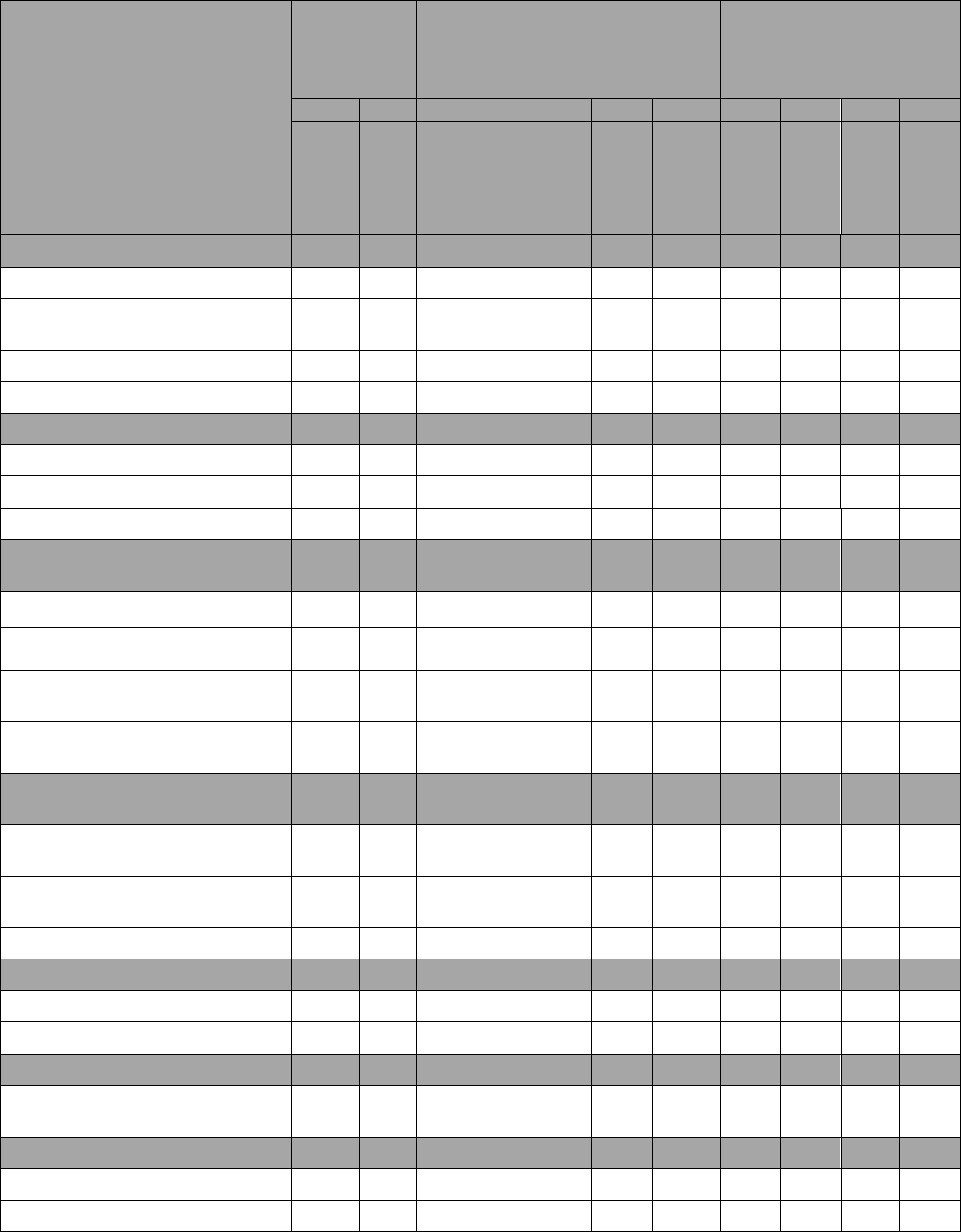
CFETP3E5X1, 17 APRIL 2024
Attachment 2
Specialty Training Standard (STS)
47
1. Tasks, Knowledge, and
Technical References
2. Tasks
3. Certification For OJT
4. Proficiency Codes Used To
Indicate Training/Information
Provided via DL and/or Course
A
B
A
B
C
D
E
A
B
C
D
Core
Cert ^
Deployment *
SEI + TQT ~
Tng
Start
Tng
Comp
Trainee
Initials
Trainer
Initials
Certifier
Initials
3
Lvl
5
Lvl
OJT
7
Lvl
5.1. Fundamentals (Foundation)
5.1.1. Survey theory
B
B
5.1.2. Coordinate references
(Datum, Grids)
B
B
5.1.3. Survey control networks
B
B
5.1.4. Survey accuracy
B
B
5.1.5. Perform Survey Math
5.1.5.1. Pythagorean Theorem
5^
2b
b
3c
5.1.5.2. Trigonometry
5^
2b
b
3c
5.1.5.3. Coordinate geometry
5^
2b
b
3c
5.2. Surveying Instrument
Maintenance
5.2.1. Perform 2 Peg Test
5^
2b
b
3c
5.2.2. Perform Collimation Test
5^
2b
b
3c
5.2.3. Perform optical survey
instrument maintenance
5^
2b
b
3c
5.2.4. Perform GPS survey
instrument maintenance
5^
2b
b
3c
5.3. Data Collection
(STANDARDS/RULES)
5.3.1. Maintain manual survey field
notes
5^
2b
b
3c
5.3.2. Maintain electronic survey
field notes
5^
2b
b
3c
5.3.3. Utilize data functions
5^
2b
b
3c
5.3.3.1. Feature Code Library
5.3.3.1.1. Create
5^
2b
b
3c
5.3.3.1.2. Edit
5^
2b
b
3c
5.4. Survey Planning
5.4.1. Utilize mission planning
software
7^
2b
b
3c
5.5. Perform Expedient Survey
5.5.1. Accuracy requirements
2b
b
5.5.2. Pace Count
5^
2b
b
3c
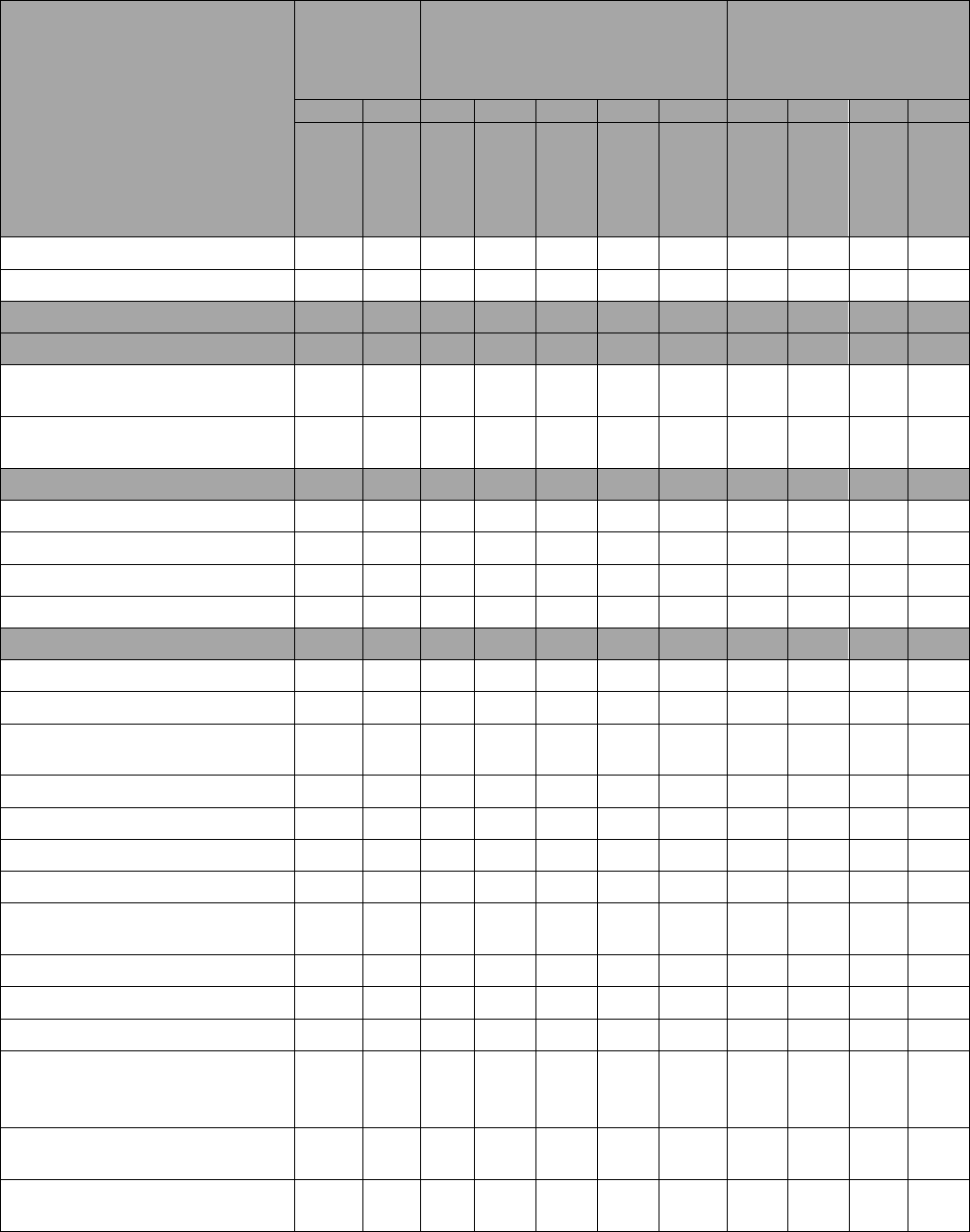
CFETP3E5X1, 17 APRIL 2024
Attachment 2
Specialty Training Standard (STS)
48
1. Tasks, Knowledge, and
Technical References
2. Tasks
3. Certification For OJT
4. Proficiency Codes Used To
Indicate Training/Information
Provided via DL and/or Course
A
B
A
B
C
D
E
A
B
C
D
Core
Cert ^
Deployment *
SEI + TQT ~
Tng
Start
Tng
Comp
Trainee
Initials
Trainer
Initials
Certifier
Initials
3
Lvl
5
Lvl
OJT
7
Lvl
5.5.3. 3-4-5 Triangle
5^
2b
b
3c
5.5.4. Reconnaissance Survey
5^
2b
b
3c
5.6. Construction Survey
5.6.1. Optical Survey
5.6.1.1. Set up optical survey
equipment
5^
2b
b
3c
5.6.1.2. Set up data collection
equipment
5^
2b
b
3c
5.6.1.3. Horizontal Control
5.6.1.3.1. Utilize known control
5^
2b
b
3c
5.6.1.3.2. Utilize relative control
5^
2b
b
3c
5.6.1.3.3. Establish known control
7^
3c
5.6.1.3.4. Establish relative control
7^
3c
5.6.1.4. Vertical Control
5.6.1.4.1. Utilize known control
5^
2b
b
3c
5.6.1.4.2. Utilize relative control
5^
2b
b
3c
5.6.1.4.3. Perform Level Loop
(Computations and Adjustments)
5^
2b
b
3c
5.6.1.5. Perform Resection
5^
2b
b
3c
5.6.1.6. Perform topographic survey
5^
2b
b
3c
5.6.1.7. Download Survey Data
5^
2b
b
3c
5.6.1.8. Correct Survey Data
5^
2b
b
3c
5.6.1.9. Generate contours using
civil software package
5^
2b
b
3c
5.6.1.10. Stake out utilities
5^
2b
b
3c
5.6.1.11. Stake out buildings
5^
2b
b
3c
5.6.1.12. Stake out roads
5^
2b
b
3c
5.6.1.13. Compute earthwork
volumes using civil software
package
5^
b
3c
5.6.1.14. Set centerline stakes using
civil software package
5^
b
3c
5.6.1.15. Set grade stakes using
civil software package
5^
b
3c
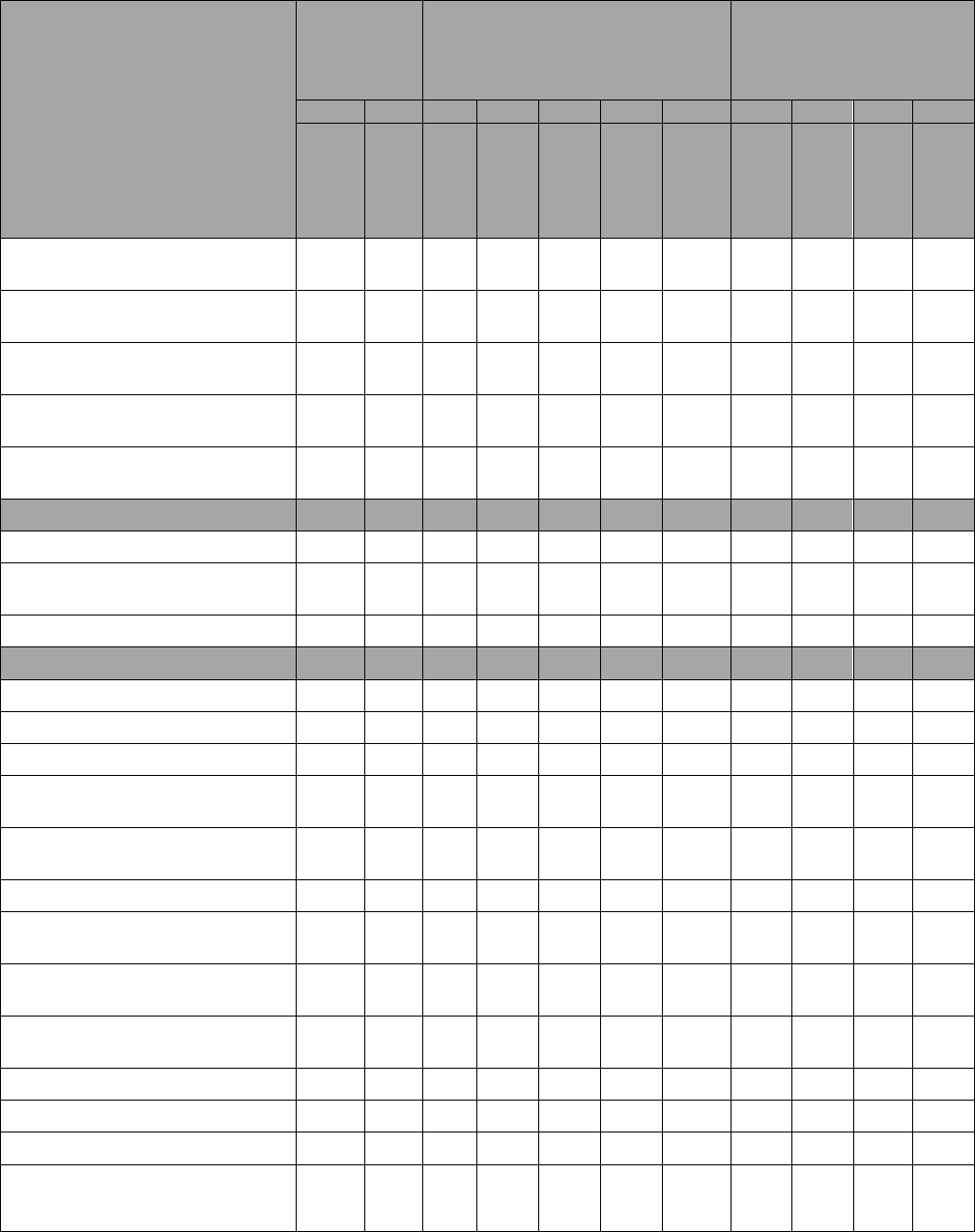
CFETP3E5X1, 17 APRIL 2024
Attachment 2
Specialty Training Standard (STS)
49
1. Tasks, Knowledge, and
Technical References
2. Tasks
3. Certification For OJT
4. Proficiency Codes Used To
Indicate Training/Information
Provided via DL and/or Course
A
B
A
B
C
D
E
A
B
C
D
Core
Cert ^
Deployment *
SEI + TQT ~
Tng
Start
Tng
Comp
Trainee
Initials
Trainer
Initials
Certifier
Initials
3
Lvl
5
Lvl
OJT
7
Lvl
5.6.1.16. Set slope stakes using
civil software package
5^
b
3c
5.6.1.17. Design utilidors using
civil software package
5^
3c
5.6.1.18. Design buildings using
civil software package
5^
3c
5.6.1.19. Design roads using civil
software package
5^
3c
5.6.1.20. Perform remote object
elevation
5^
2b
b
3c
5.6.2. GPS/GNSS Surveying
5.6.2.1. Set up GPS equipment
5^
2b
b
3c
5.6.2.2. Set up data collection
equipment
5^
2b
b
3c
5.6.2.3. GPS frequencies
B
5.6.2.4. Establish Project Control
5.6.2.4.1. RTK
5^
2b
b
3c
5.6.2.4.2. PPK
5^
2b
b
3c
5.6.2.4.3. Static
5^
2b
b
3c
5.6.2.5. Download electronic data
to post-processing software
5^
2b
b
3c
5.6.2.6. Correct PPK data using
post-processed correction
5^
2b
b
3c
5.6.2.7. Perform topographic survey
5^
2b
b
3c
5.6.2.8. Download topographic
survey data
5^
2b
b
3c
5.6.2.9. Correct topographic survey
data
5^
2b
b
3c
5.6.2.10. Generate contours using
civil software package
5^
2b
b
3c
5.6.2.11. Stake out utilities
5^
2b
b
3c
5.6.2.12. Stake out roads
5^
2b
b
3c
5.6.2.13. Stake out buildings
5^
2b
b
3c
5.7. Perform Mishap Survey
TR: AFMAN 91-223; AFI 34-242; AFH 10-
247v4
5^
2b
b
3c
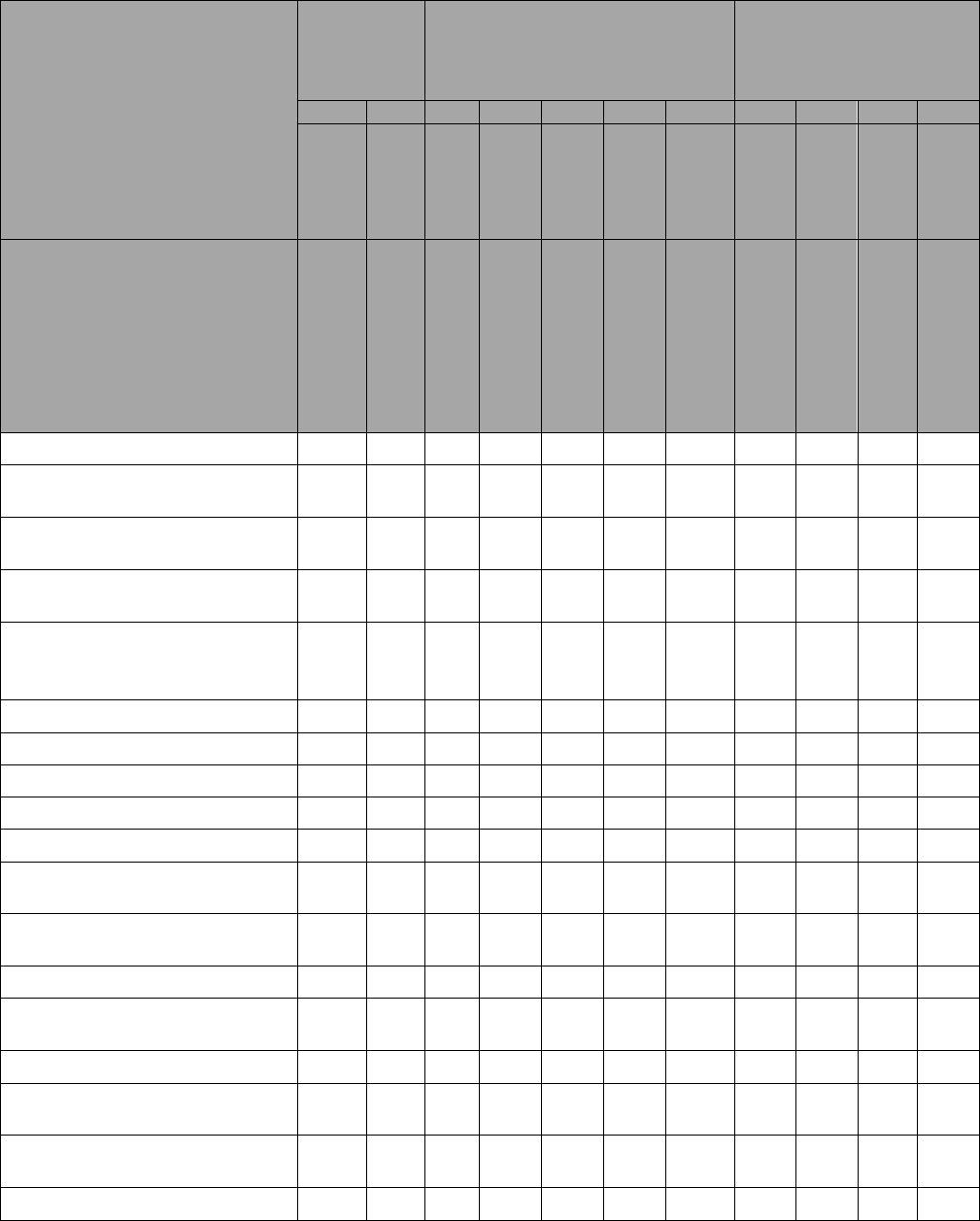
CFETP3E5X1, 17 APRIL 2024
Attachment 2
Specialty Training Standard (STS)
50
1. Tasks, Knowledge, and
Technical References
2. Tasks
3. Certification For OJT
4. Proficiency Codes Used To
Indicate Training/Information
Provided via DL and/or Course
A
B
A
B
C
D
E
A
B
C
D
Core
Cert ^
Deployment *
SEI + TQT ~
Tng
Start
Tng
Comp
Trainee
Initials
Trainer
Initials
Certifier
Initials
3
Lvl
5
Lvl
OJT
7
Lvl
6.0. CONTRACT
MANAGEMENT
TR: DoDD 5500.7; AFI 32-1023, AFI 32-
6002; AFI 32-1001, AFI 63-124, AFI 64-
123; AFPAM 32-1005, AFPAM 32-1000
(TM 3- 34.41), AFPAM 32- 1006, AFPAM
91-210; FAR Part 37.6; AFCEE Program
Managers Guide for Design and
Construction;; USACE EM 385-1-1.
AFQTP 3E5X1 Module 6
6.1. Standards of conduct
5^
A
B
3c
6.2. Construction safety and health
requirements
5^
B
3c
6.3. General contract provisions
enforcement
B
6.4. Conduct constructability
review
7^
b
3c
6.5. Apply applicable building
codes or regulations to construction
activities
7^
b
3c
6.6. Inspect civil works
7^
b
3c
6.7. Inspect electrical works
7^
b
3c
6.8. Inspect structural works
7^
b
3c
6.9. Inspect utilities works
7^
b
3c
6.10. Inspect mechanical works
7^
b
3c
6.11. Document construction
activities
7^
b
3c
6.12. Evaluate construction
contract progress schedule
7^
b
3c
6.13. Evaluate progress reports
7^
b
3c
6.14. Evaluate materials submittals
and test reports
7^
b
3c
6.15. Pre-performance conference
B
6.16. Construction permit
coordination
B
6.17. Surveillance of Military
Construction (MILCON) projects
B
6.18. Perform project close-out
7^
b
3c
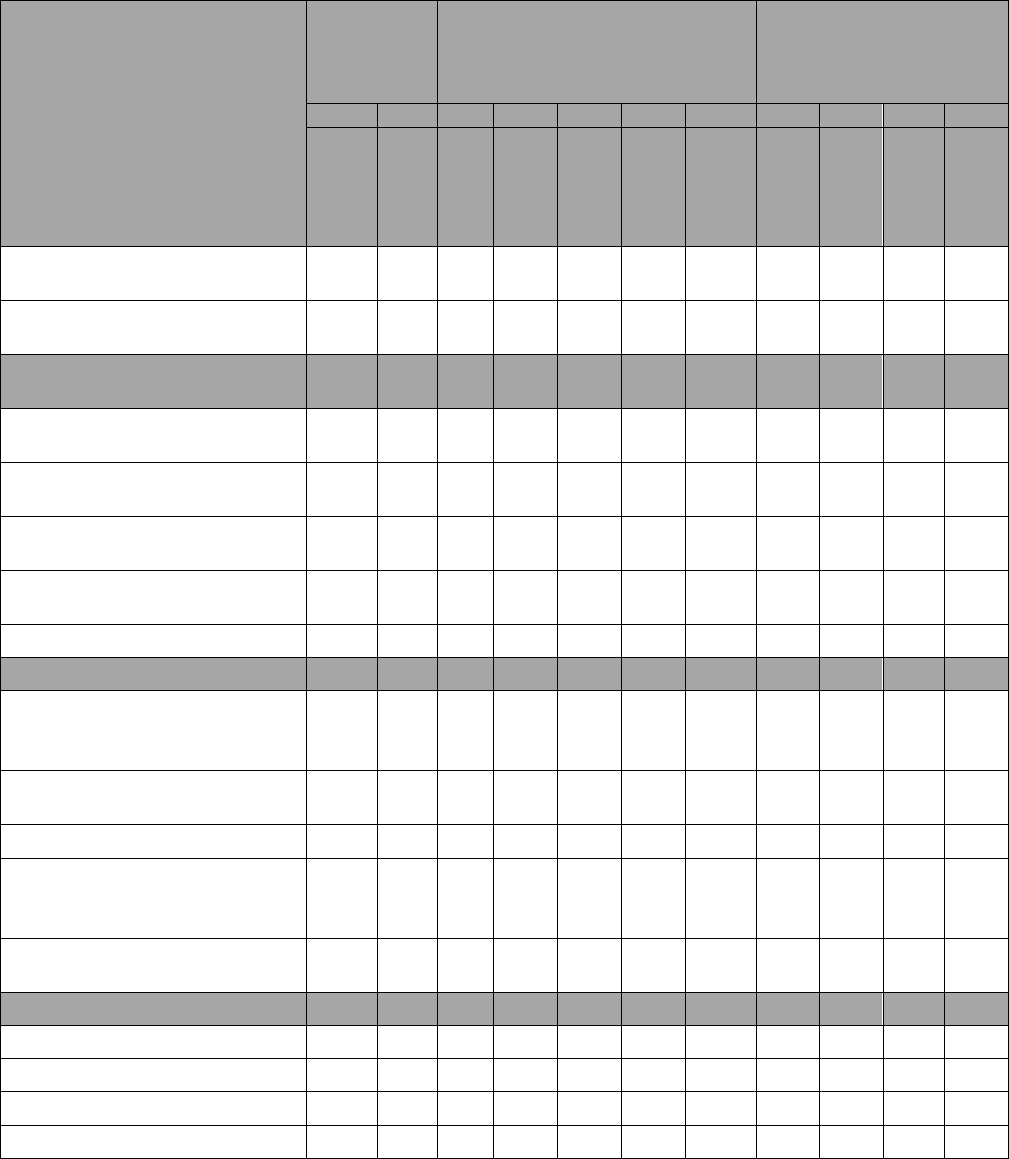
CFETP3E5X1, 17 APRIL 2024
Attachment 2
Specialty Training Standard (STS)
51
1. Tasks, Knowledge, and
Technical References
2. Tasks
3. Certification For OJT
4. Proficiency Codes Used To
Indicate Training/Information
Provided via DL and/or Course
A
B
A
B
C
D
E
A
B
C
D
Core
Cert ^
Deployment *
SEI + TQT ~
Tng
Start
Tng
Comp
Trainee
Initials
Trainer
Initials
Certifier
Initials
3
Lvl
5
Lvl
OJT
7
Lvl
6.19. Warranty and Guarantee
Program
B
6.20. Perform contract
modifications
7^
b
3c
6.21. Indefinite Delivery
Indefinite Quantity (IDIQ)
6.21.1. Simplified acquisition
methods (SABER/SATOC)
B
6.21.2. Job/Task Order Contract
(JOC/TOC)
B
6.21.3. Multiple Award Contracts
(e.g., MACC/MATOC)
B
6.21.4. Multiple-Scope
requirements
B
6.21.5. Single-Scope requirements
B
6.22. Design Documents
6.22.1. Estimate cost elements
(such as: Materials, Equipment,
and Labor)
7^
b
3c
3c
6.22.2. Develop Statements of
Work (SOW)
7^
b
3c
2b
6.22.3. Review project specifications
7^
b
3c
2b
6.22.4. Perform Design Review
(such as: Materials, Equipment,
Installation, and Construction)
7^
b
3c
2b
6.22.5. Prepare programming
documents
7^
b
3c
2b
6.23. NEXGEN IT
6.23.1. Overview
B
6.23.2. Workflow
B
6.24. BUILDER
B
6.25. PAVER
B
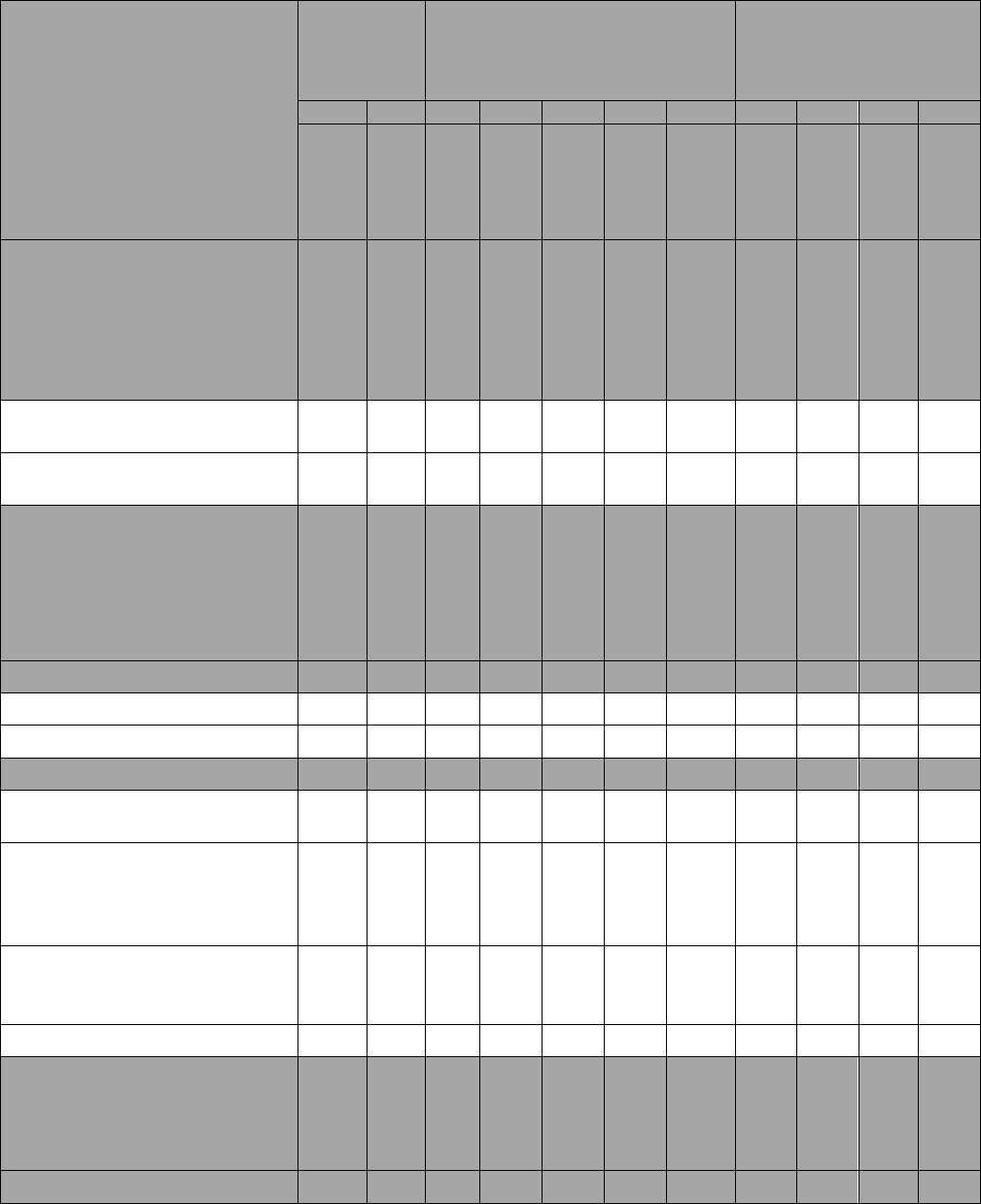
CFETP3E5X1, 17 APRIL 2024
Attachment 2
Specialty Training Standard (STS)
52
1. Tasks, Knowledge, and
Technical References
2. Tasks
3. Certification For OJT
4. Proficiency Codes Used To
Indicate Training/Information
Provided via DL and/or Course
A
B
A
B
C
D
E
A
B
C
D
Core
Cert ^
Deployment *
SEI + TQT ~
Tng
Start
Tng
Comp
Trainee
Initials
Trainer
Initials
Certifier
Initials
3
Lvl
5
Lvl
OJT
7
Lvl
7.0. INSTALLATION
PLANNING and MAPPING
TR: AFIs 32-1021, 32-1022, 32-1023, 32-
1024, 32-1032, 32-6002, 32-7062, 32-10140,
32-10141; AFMAN 91-201, AFPAM 32-
1104v2, 32-1005; CONOPs - ESM and
ESSP; AFQTP 3E5X1 Module 7
7.1. Installation Development Plan
requirements
B
C
7.2. Apply Site Planning
requirements
7^
b
3c
3c
8.0. CONSTRUCTION SITE
MATERIALS
TR: FM 5-472 [AFJMAN 32-32- 1221(I)];
UFC 3-220-10N; ASTM D2487; ASTM
D6951; AFQTP 3E5X1 Module 8; Soil
Testing under Field Conditions Course
Metering devices
8.1. Soil
8.1.1. Properties of Soils
A
B
B
8.1.2. Soils Classification
A
B
B
8.1.3. Field Identification
8.1.3.1. Classify soils in field
conditions
5^
*
2b
b
3c
3c
8.1.3.2. Determine California
Bearing Ratio (CBR) using
Dynamic Cone Penetrometer
(DCP) ♦
5^
*
2b
b
3c
3c
8.1.3.3. Determine layer structure
using Dynamic Cone Penetrometer
(DCP) ♦
5^
*
2b
b
3c
3c
8.2. Perform Concrete Slump Test
b
8.3. Evaluate Material Testing
Reports
TR: ASTM D2216, C136, D1883, D4318,
D698, D1557, D1556, C143, C1064, C231,
C31, C192, C39, C78
8.3.1. Soil
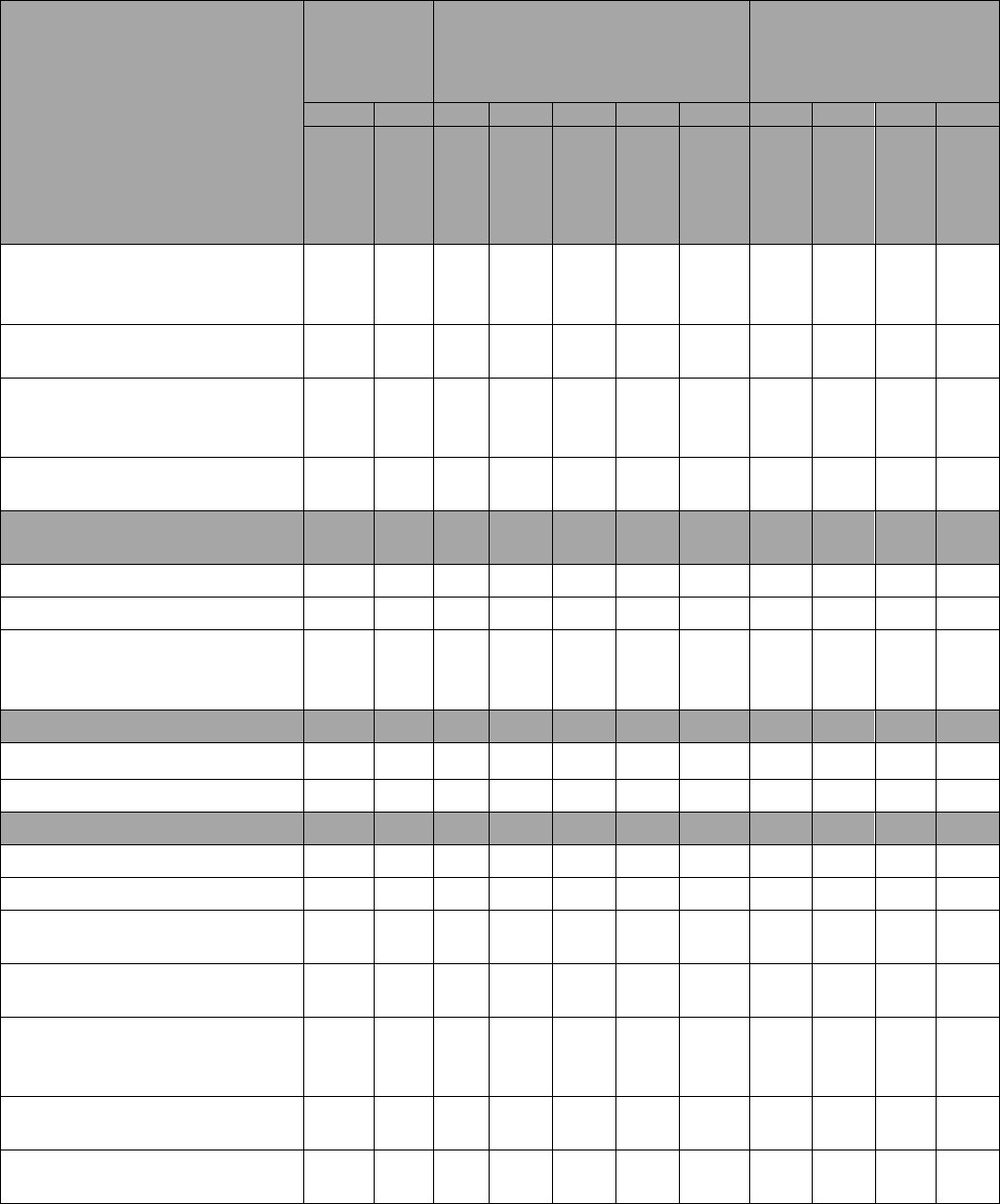
CFETP3E5X1, 17 APRIL 2024
Attachment 2
Specialty Training Standard (STS)
53
1. Tasks, Knowledge, and
Technical References
2. Tasks
3. Certification For OJT
4. Proficiency Codes Used To
Indicate Training/Information
Provided via DL and/or Course
A
B
A
B
C
D
E
A
B
C
D
Core
Cert ^
Deployment *
SEI + TQT ~
Tng
Start
Tng
Comp
Trainee
Initials
Trainer
Initials
Certifier
Initials
3
Lvl
5
Lvl
OJT
7
Lvl
8.3.1.1. Laboratory determination
of water (moisture) content of soil
and rock by mass
A
B
8.3.1.2. Sieve Analysis of fine and
coarse aggregates
A
B
8.3.1.3. California Bearing Ratio
(CBR) of laboratory compacted
soils
A
B
8.3.1.4. Liquid Limit, Plastic Limit,
and Plasticity Index of soils
A
B
8.3.1.5. Laboratory Compaction
Characteristics of Soil
8.3.1.5.1. Modified Effort
A
B
8.3.1.5.2. Standard Effort
A
B
8.3.1.5.3. Density and Unit Weight
of soil in-place by sand cone
method
A
B
8.3.2. Asphalt
8.3.2.1. Aggregate
A
B
8.3.2.2. Bituminous Material
A
B
8.3.3. Concrete
8.3.3.1. Materials
A
B
8.3.3.2. Concepts
A
B
8.3.3.3. Slump of Hydraulic
Cement Concrete
A
B
8.3.3.4. Temperature of Freshly
Mixed Hydraulic Cement Concrete
A
B
8.3.3.5. Air Content of Freshly
Mixed Concrete by the Pressure
Method
A
B
8.3.3.6. Compressive Strength of
Cylindrical Concrete Specimens
A
B
8.3.3.7. Flexural Strength of
Concrete
A
B
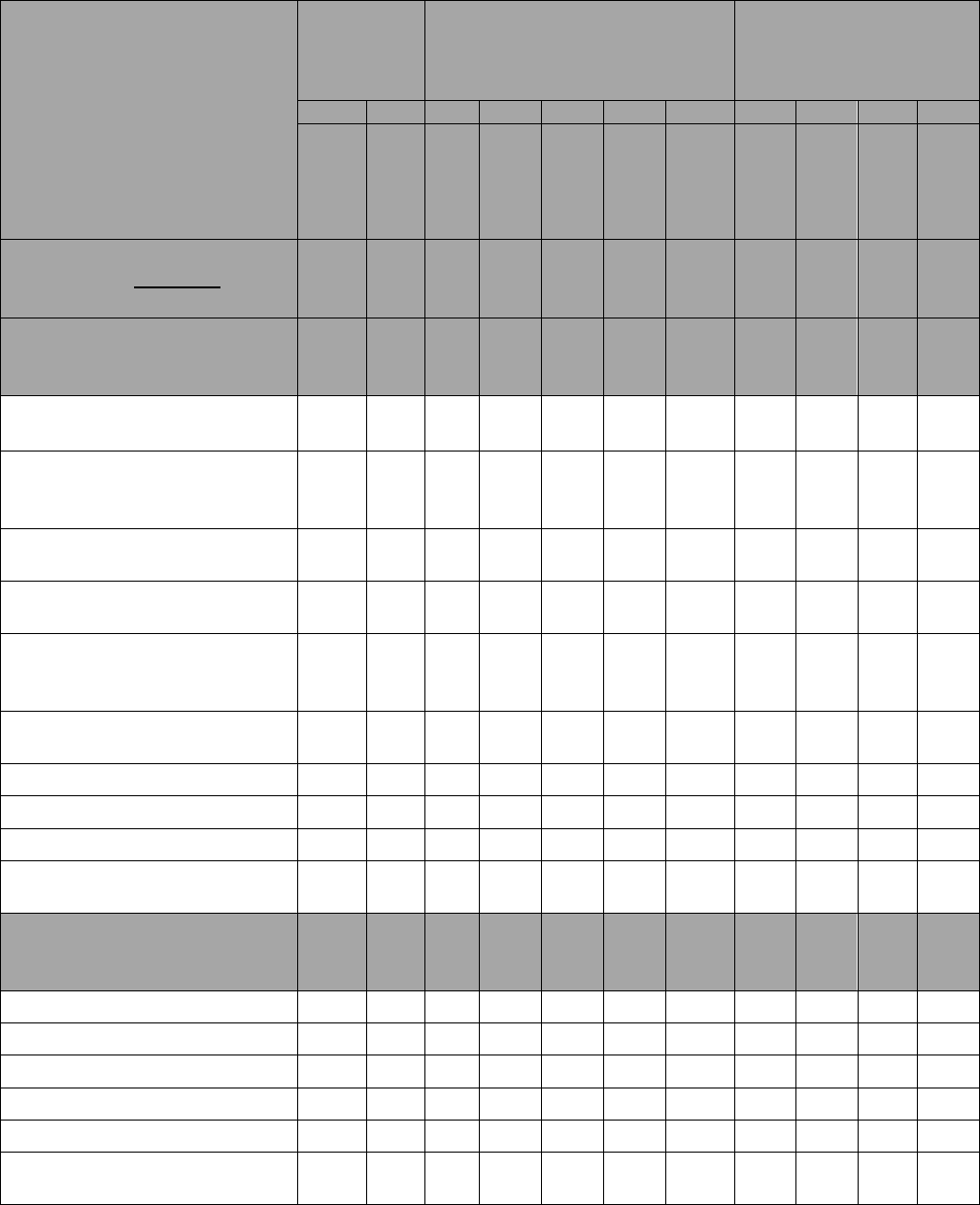
CFETP3E5X1, 17 APRIL 2024
Attachment 2
Specialty Training Standard (STS)
54
1. Tasks, Knowledge, and
Technical References
2. Tasks
3. Certification For OJT
4. Proficiency Codes Used To
Indicate Training/Information
Provided via DL and/or Course
A
B
A
B
C
D
E
A
B
C
D
Core
Cert ^
Deployment *
SEI + TQT ~
Tng
Start
Tng
Comp
Trainee
Initials
Trainer
Initials
Certifier
Initials
3
Lvl
5
Lvl
OJT
7
Lvl
8.4. Conduct Material Testing
(This section is mandatory for
RED HORSE)
8.4.1. Soil (ASTMs C702, C136,
D2216, D6913, D1883, D4318,
D1557, D698, D1556, D7830)
8.4.1.1. Reducing/Splitting
Samples
8.4.1.2. Laboratory Determination
of Water (Moisture) Content of
Soil and Rock by Mass
8.4.1.3. Sieve Analysis of Fine and
Coarse Aggregates (Dry)
8.4.1.4. Sieve Analysis of Fine and
Coarse Aggregates (Wet)
8.4.1.5. California Bearing Ratio
(CBR) of Laboratory Compacted
Soils
8.4.1.6. Liquid Limit, Plastic Limit,
and Plasticity Index of Soils
8.4.1.7. Modified Proctor
8.4.1.8. Standard Proctor
8.4.1.9. Sand Cone
8.4.1.10. Density Testing (E-
Gauge)
8.4.2. Concrete (ASTMs C172,
C1064, C143, C231, C31, C39,
C78)
8.4.2.1. Concrete properties
8.4.2.2. Sampling
8.4.2.3. Temperature
8.4.2.4. Slump
8.4.2.5. Air Entrainment
8.4.2.6. Making Concrete
Specimens
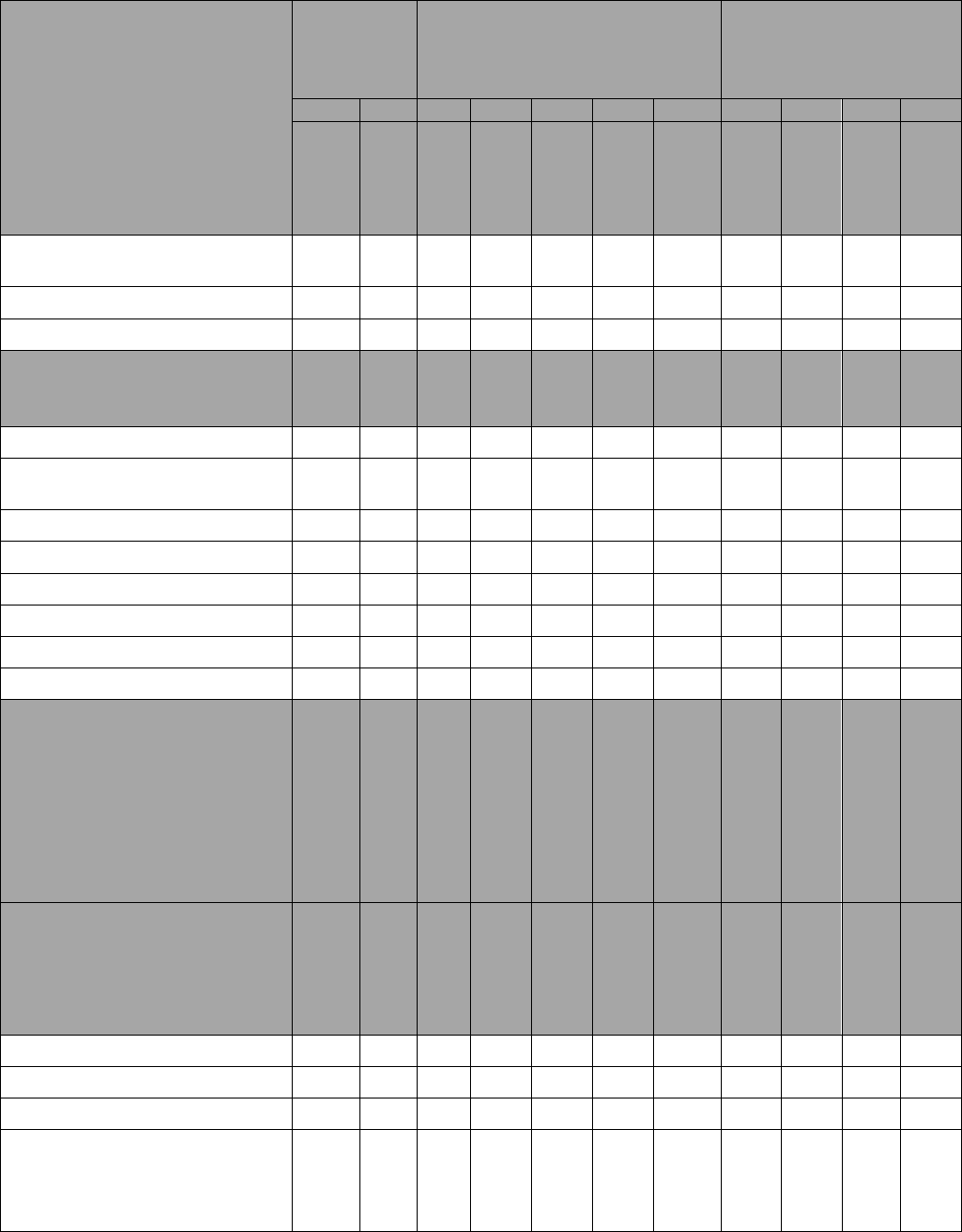
CFETP3E5X1, 17 APRIL 2024
Attachment 2
Specialty Training Standard (STS)
55
1. Tasks, Knowledge, and
Technical References
2. Tasks
3. Certification For OJT
4. Proficiency Codes Used To
Indicate Training/Information
Provided via DL and/or Course
A
B
A
B
C
D
E
A
B
C
D
Core
Cert ^
Deployment *
SEI + TQT ~
Tng
Start
Tng
Comp
Trainee
Initials
Trainer
Initials
Certifier
Initials
3
Lvl
5
Lvl
OJT
7
Lvl
8.4.2.7. Curing Concrete
Specimens (field, lab)
8.4.2.8. Compression strength test
8.4.2.9. Flexural strength test
8.4.3. Asphalt (ASTMs D6307,
D2726, D2041, D6927, D7113,
D7228)
8.4.3.1. Asphalt properties
8.4.3.2. Reducing/Splitting
Samples
8.4.3.3. Determine Asphalt Content
8.4.3.4. Bulk Specific Gravity
8.4.3.5. Rice Testing
8.4.3.6. Marshal Testing
8.4.3.7. Density Testing (E-Gauge)
8.4.3.8. Temperature
9.0. AFS-SPECIFIC
CONTINGENCY
RESPONSIBILITIES
TR: AFIs 10-209, 10-210, 10- 211; T.O.s
35E-5-6-1, 35E4-132-1, 35E4-94-1; Army
TMs 10-8340-207-14, 10-450-200-12; WMP-
1, Annex S; AFPAM 10-219 series; AFH 10-
222 series.
AFQTP 3E5X1 Module 9
9.1. Pre-deployment beddown
planning and purpose
TR: AFPAM 10-219, Vol 5, 6; AFI 10-401,
10-404; AFMAN 11-218, 11-235; AFH 10-
222 v1 & 2; AFTTP 3-32.11; UFC's 3-260-
01, 4-010-01, CONOPs, ESM & ESSP
9.1.1. Contingency Planning Factors
*
A
B
C
9.1.2. Standards of construction
*
A
B
B
9.1.3. BEAR Base assets
*
A
B
9.1.4. Base Support and
Expeditionary (BAS&E) Site
Planning
TR: AFI 10-404
*
A
B
C
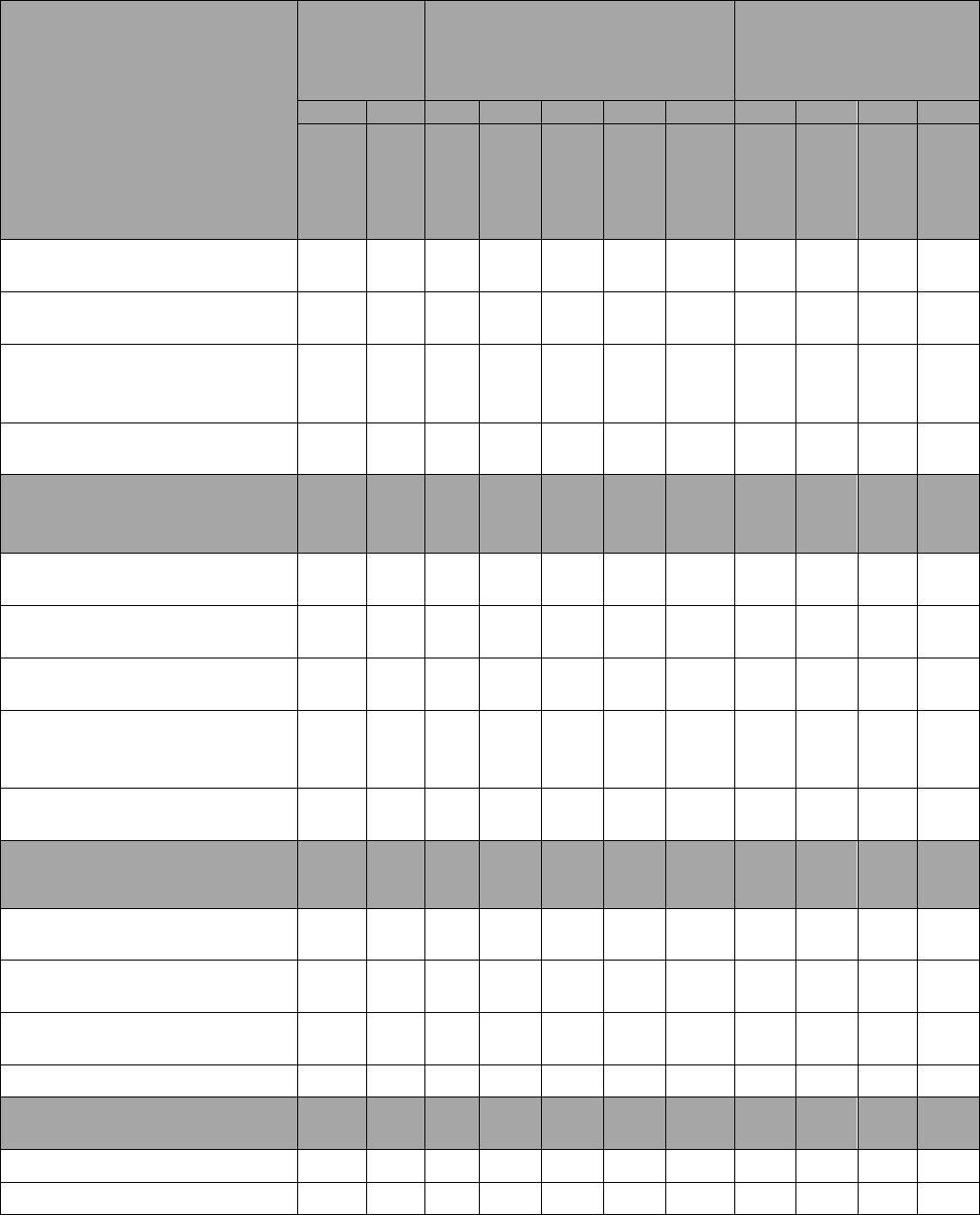
CFETP3E5X1, 17 APRIL 2024
Attachment 2
Specialty Training Standard (STS)
56
1. Tasks, Knowledge, and
Technical References
2. Tasks
3. Certification For OJT
4. Proficiency Codes Used To
Indicate Training/Information
Provided via DL and/or Course
A
B
A
B
C
D
E
A
B
C
D
Core
Cert ^
Deployment *
SEI + TQT ~
Tng
Start
Tng
Comp
Trainee
Initials
Trainer
Initials
Certifier
Initials
3
Lvl
5
Lvl
OJT
7
Lvl
9.1.5. Expeditionary Site Survey
Process (ESSP)
*
A
B
B
9.1.6. Expeditionary Site Mapping
(ESM)
*
A
B
B
9.1.7. Aircraft parking planning;
TR: UFC 3-260-01; AFMAN 11-
218
*
A
B
9.1.8. Base conceptual planning
guidance
*
B
9.1.9. Combat Air Base Planning
Applications (performs tasks
using software listed in CE UTC)
9.1.9.1. Utilize BEAR Base
Planning within GeoExPT software
5^
*
2b
b
3c
3c
9.1.9.2. Utilize Aircraft Parking
Planner within GeoExPT software
5^
*
2b
b
3c
3c
9.1.9.3. Utilize GeoExPT software
for taxiway linework
5^
*
b
3c
9.1.9.4. Utilize GeoExPT to create
a Common Installation Picture
(CIP)
5^
*
b
3c
9.1.9.5. Export beddown to CAD
software
5^
*
b
3c
9.2. Beddown Operations
TR: AFPAM 10-219; AFDD 3-34; UFC 4-
010-01, UFC 4-010-02
9.2.1. Initial Air Base/Airfield
evaluation
*
A
B
C
9.2.2. Contingency Airfield
Pavement evaluation
*
A
B
C
9.2.3. Evaluate Airfield Pavement
Evaluation Report
7^
*
b
3c
2b
9.2.4. Validate airfield suitability
7^
*
b
3c
2b
9.2.5. BEAR Base Planning
Criteria
9.2.5.1. Perform site selection
7^
*
1a
b
3c
2b
9.2.5.2. Establish dispersed lay out
7^
*
1a
b
3c
2b
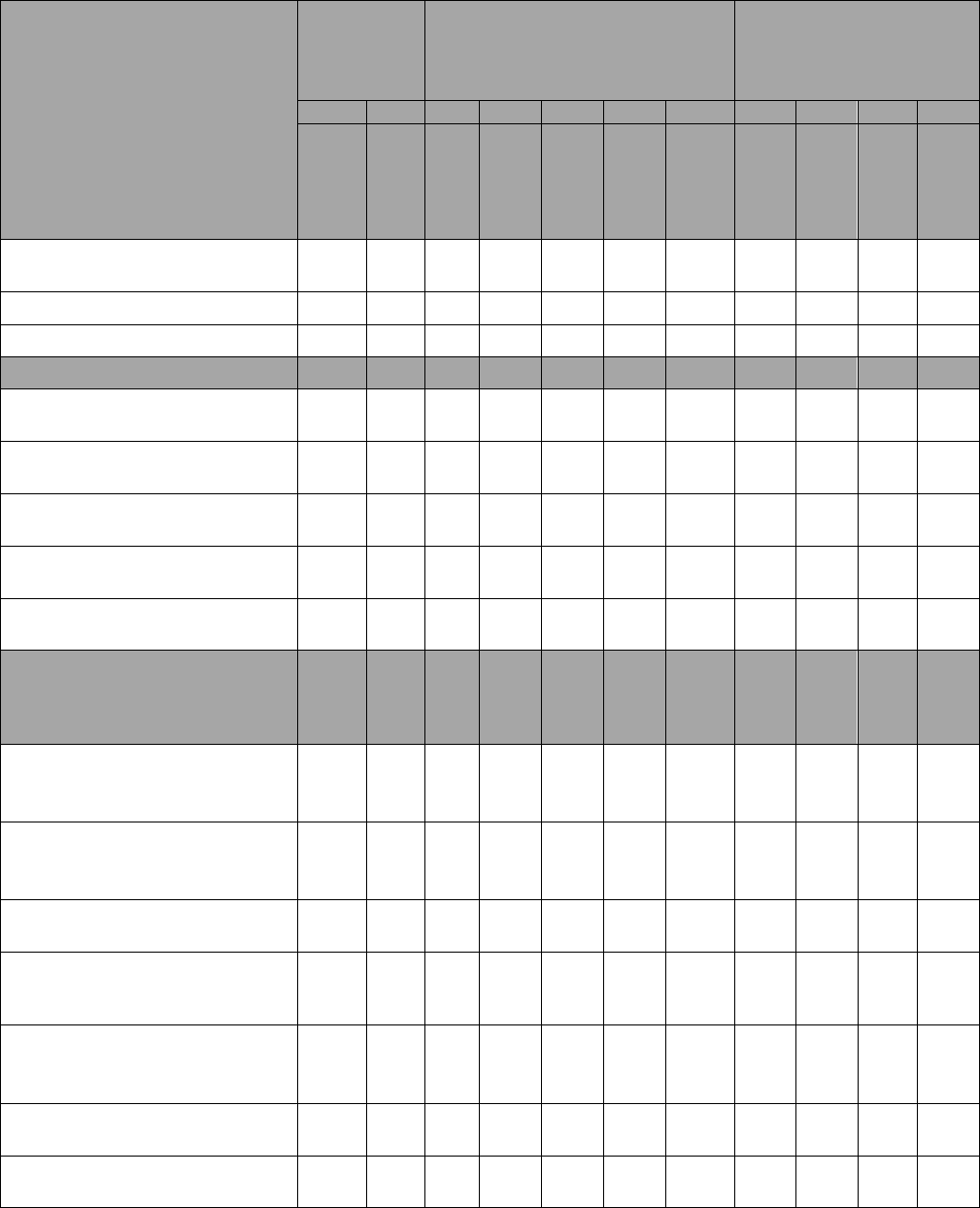
CFETP3E5X1, 17 APRIL 2024
Attachment 2
Specialty Training Standard (STS)
57
1. Tasks, Knowledge, and
Technical References
2. Tasks
3. Certification For OJT
4. Proficiency Codes Used To
Indicate Training/Information
Provided via DL and/or Course
A
B
A
B
C
D
E
A
B
C
D
Core
Cert ^
Deployment *
SEI + TQT ~
Tng
Start
Tng
Comp
Trainee
Initials
Trainer
Initials
Certifier
Initials
3
Lvl
5
Lvl
OJT
7
Lvl
9.2.5.3. Establish non-dispersed lay
out
7^
*
1a
b
3c
9.2.5.4. Shelter orientation
*
A
B
C
9.2.5.5. Aircraft revetment siting
5^
*
A
B
3c
9.2.6. Employment Operations
9.2.6.1. Emergency Operations
Center (EOC) (TQT)
*~
B
B
9.2.6.2. Unit Control Center (UCC)
Operations (TQT)
*~
B
B
9.2.6.3. Perform Airfield Damage
Assessment (TQT)
5^
*~
b
b
3c
9.2.6.4. Perform Facility and
Utility Damage Assessment (TQT)
5^
*~
b
B
3c
9.2.6.5. Plot Airfield/Facility
Damage (TQT)
5^
*~
2b
b
3c
9.3. Minimum Operating Strip
(MOS) Selection Procedures
TR: AFPAM 10-219 v4; T.O. 35E2- 6-1;
UFC 3-270-07
9.3.1. Perform Minimum Operating
Strip (MOS) Selection Procedures
and Considerations (TQT)
5^
*~
2b
b
3c
9.3.2. Utilize Airfield Damage
Repair Software Package for ADR
(TQT)
5^
*~
2b
b
3c
9.3.3. Identify Minimum Airfield
Operating Surface (MAOS) (TQT)
5^
*~
a
b
3c
9.3.4. Compute Repair Quality
Criteria (RQC) for ADR (TQT)
TR: ETL 13-1
5^
*~
b
b
3c
9.3.5. Lay out Minimum Airfield
Operating Surface Marking System
(MAOSMS) ♦
5^
*~
a
b
3c
9.3.6. Perform Crater Profile
Measurement (CPM) Operations ♦
5^
*~
2b
b
3c
9.3.7. Evaluate Soil Strength for
Airfield Damage Repair
*~
b
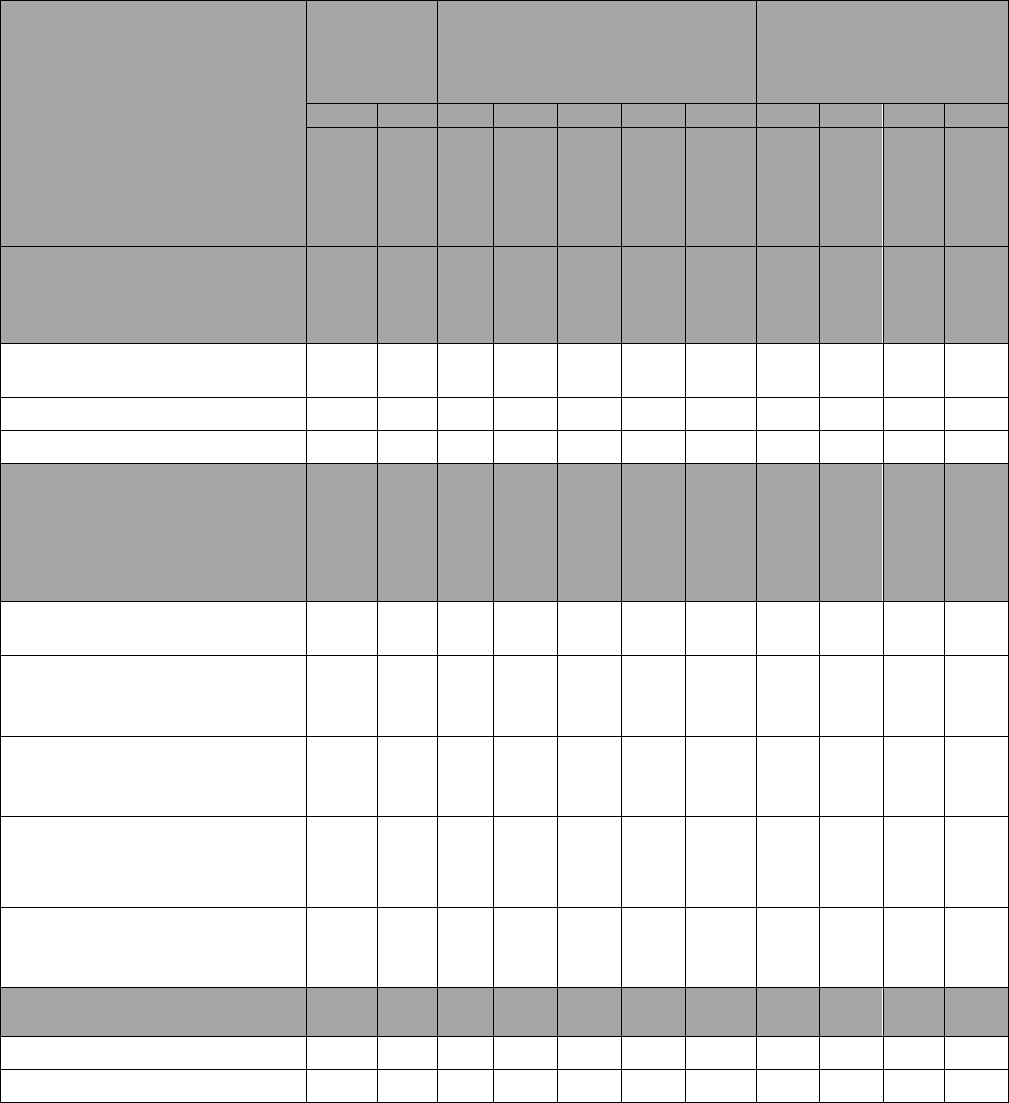
CFETP3E5X1, 17 APRIL 2024
Attachment 2
Specialty Training Standard (STS)
58
1. Tasks, Knowledge, and
Technical References
2. Tasks
3. Certification For OJT
4. Proficiency Codes Used To
Indicate Training/Information
Provided via DL and/or Course
A
B
A
B
C
D
E
A
B
C
D
Core
Cert ^
Deployment *
SEI + TQT ~
Tng
Start
Tng
Comp
Trainee
Initials
Trainer
Initials
Certifier
Initials
3
Lvl
5
Lvl
OJT
7
Lvl
9.3.8. Precision Approach Path
Indicator (PAPI) Procedures
TR: T.O. 35F5-3-16-1; AFTTP 3-32.13
Airfield Marking Procedures
9.3.8.1. Calculate Light Elevation
and Location ♦
5^
*
b
3c
9.3.8.2. Lay out ♦
5^
*
b
3c
9.3.8.3. Align ♦
5^
*
b
3c
9.3.9. Mobile Aircraft Arresting
System (MAAS) Procedures
TR: AFPAM 10-219, Vol 3, 4 & 5; T.O.s
35E8-2-5-4, 35E8-2-10-3, 35E8-2-10-1S-1,
35E8-2-1-101, 35E8-2-10-1; FMs 5-430-00-
2, 35E8-2-11-1, 35E8-2-11-2; ETL 02-19
9.3.9.1. Evaluate soil strength for
MAAS installation
5^
*
b
3c
9.3.9.2. Lay out MAAS with
Fairlead Beams and Mobile
Runway Edge Sheaves (MRES) ♦
5^
*
b
3c
9.3.9.3. Align MAAS with Fairlead
Beams and Mobile Runway Edge
Sheaves (MRES) ♦
5^
*
b
3c
9.3.9.4. Lay out MAAS with
Standard Fairlead Beams, MRES,
and Dead Man Anchoring System ♦
5^
*
b
3c
9.3.9.5. Align MAAS with Standard
Fairlead Beams, MRES, and Dead
Man Anchoring System ♦
5^
*
b
3c
9.4. Small Shelter System (SSS)
TR: T.O. 35E5-6-11
9.4.1. Assemble
*
2b
b
9.4.2. Disassemble
*
2b
b

CFETP3E5X1 17 APRIL 2024
Attachment 3
3E5X1 Air Force Qualification Documentation Record
59
A3. AFQTP Documentation Record.
A3.1. To ensure each Engineering Specialist is trained to the correct standard an AF Qualification
Training Package (AFQTP) has been developed for each core task identified in their STS. These AFQTPs
are mandated to be used by the trainee, trainer, and certifier in their on-the-job-training program for
upgrade to the 5- or 7-level.
A3.2. These AFQTPs cover all aspects of the task sufficiently and provide additional task knowledge in
preparation for hands-on training. AFQTPs summarize procedures on a task performance checklist for
use by trainers, certifiers, and trainees.
A3.2.1. The UTM or supervisor can download paper-based AFQTPs. Paper-based AFQTPs are on
myLearning in the Civil Engineer library.
A3.2.2. In addition to the paper-based AFQTPs, there are web-based courses that are available on
myLearning in the Civil Engineer library.
A3.3. Documentation. Before signing off a core or diamond task in the JQS section of the individual
automated training record, signed off the task first in the AFQTP.
A3.3.1. Core Tasks (5^ or 7^). To document the completion, the supervisor or trainer opens the
individual’s training record, navigates to the STS line, and the supervisor or trainer checks the box that
the Airman has completed the AFQTP.
A3.3.2. Diamond (♦) Tasks. Supervisors/Trainers DO NOT sign off the corresponding JQS task until
the trainee has completed hands-on training. If the required equipment is not available at your location,
completing the task's AFQTP web-based course or assessment with a passing score of 80% is all required
for upgrade training. Accomplish hands-on certification at the first opportunity when equipment or
funding is available.

CFETP3E5X1 17 APRIL 2024
Attachment 3
3E5X1 Air Force Qualification Documentation Record
60
A3.4. 3E5X1 Core and Diamond Tasks Requirements.
Task Number
Tasks, Knowledge, and Technical
References
Core/Deployment
Tasks
Certification of AFQTPs
Core
Deployment
Tng
Start
Tng
Complete
Trainee
Initials
Trainer
Initials
1.0.
CIVIL ENGINEER (CE) COMMON CORE CONCEPTS
1.1.
Accomplish CE 5 Level Core Concepts
Course
5
1.2.
Accomplish CE 7 Level Core Concepts
Course
7
1.6.
CE Training overview
1.6.2.
Attend AFIT WENG 200 Scoping and
Estimating (AD Only)
7
1.6.3.
Attend AFIT WMGT 301 Introduction to
Asset Management (AD Only)
5
1.6.4.
Attend AFIT WMGT 322 Introduction to
Project Management (AD Only)
7
2.0.
COMPUTER-AIDED DRAFTING (CAD) and Design
Accomplish Paper-Based AFQTP
2.3.
CAD Principles (perform tasks using software listed in CE UTC)
2.3.1.
Set up Drawings
2.3.1.1.
Paper space
5
2.3.1.2.
Model space
5
2.3.1.3.
Units
5
2.3.1.4.
Plot styles
5
2.3.1.5.
Layers
5
2.3.1.6.
Maps
5
2.3.2.
Utilize Drawings Commands
2.3.2.1.
Draw
5
2.3.2.2.
Modify
5
2.3.2.3.
Layers
5
2.3.2.4.
Annotation
5
2.3.2.5.
Blocks
5
2.3.2.6.
Properties
5
2.3.2.7.
Reference Files
5
2.3.2.8.
Print (Plot)
5
2.3.3.
Drawing Management
2.3.3.3.
Utilize standards, such as AEC, ANSI,
AGS, ISO
5
2.4.
Technical Drawings
2.4.1.
Produce Civil Drawings
5
2.4.2.
Interpret Civil Drawings
7
2.4.3.
Produce Architectural Drawings
5
2.4.4.
Interpret Architectural Drawings
7
2.4.5.
Produce Structural Drawings
5
2.4.6.
Interpret Structural Drawings
7
2.4.7.
Produce Mechanical Drawings
5
2.4.8.
Interpret Mechanical Drawings
7
2.4.9.
Produce Electrical Drawings
5
2.4.10.
Interpret Electrical Drawings
7
2.5.
Convert Data
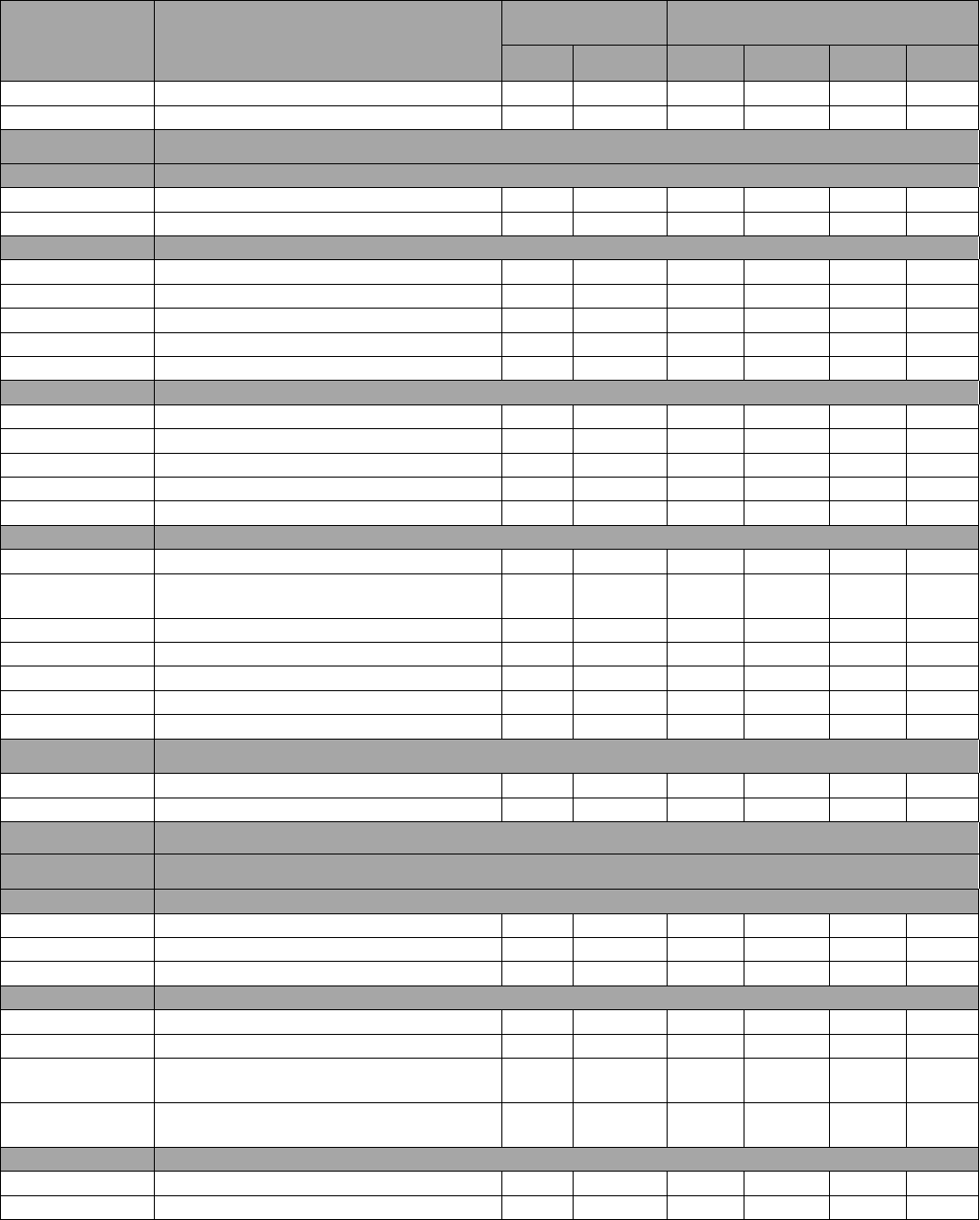
CFETP3E5X1, 17 APRIL 2024
Attachment 3
3E5X1 Air Force Qualification Training Package (AFQTP) Documentation Record
61
Task Number
Tasks, Knowledge, and Technical
References
Core/Deployment
Tasks
Certification of AFQTPs
Core
Deployment
Tng
Start
Tng
Complete
Trainee
Initials
Trainer
Initials
2.5.1.
CAD to GIS
5
2.5.2.
GIS to CAD
5
4.0.
GEOGRAPHIC INFORMATION SYSTEM (GIS) A
ccomplish Paper-Based AFQTP
4.1.
Geographic Information Systems (GIS)
4.1.9.
Import imagery
5
4.1.10.
Export imagery
5
4.2.
Create Geospatial Data
4.2.1.
GIS File Formats
5
4.2.2.
Metadata
5
4.2.3.
Vector
5
4.2.4.
Attribute Data
5
4.2.5.
Sub type
5
4.3.
Edit Geospatial Data
4.3.1.
GIS File Formats
5
4.3.2.
Metadata
5
4.3.3.
Vector
5
4.3.4.
Attribute Data
5
4.3.5.
Sub type
5
4.4.
Utilize GIS Functions
4.4.1.
Tools (trace, snaps, etc.)
5
4.4.2.
Merge data (copy, paste, etc., bring
outside data into existing data)
5
4.4.3.
Join data (attribute, spreadsheet, etc.)
5
4.4.4.
Link data (attribute, spreadsheet, etc.)
5
4.4.5.
Print/Plot a map
5
4.4.6.
Connect data between software platforms
5
4.4.7.
Convert coordinate systems
5
4.5.
Convert Geospatial Data
4.5.1.
Vector (i.e., .dwg to shape file)
5
4.5.3.
Spreadsheets to GIS
5
5.0.
SURVEYING
Accomplish Paper-Based AFQTP
5.1.
Fundamentals of Surveying (FOUNDATION)
5.1.5.
Perform Survey Math
5.1.5.1.
Pythagorean Theorem
5
5.1.5.2.
Trigonometry
5
5.1.5.3.
Coordinate geometry
5
5.2.
Surveying Instrument Maintenance
5.2.1.
Perform 2 Peg Test
5
5.2.2.
Perform Collimation Test
5
5.2.3.
Perform optical survey instrument
maintenance
5
5.2.4.
Perform GPS survey instrument
maintenance
5
5.3.
Data Collection (STANDARDS/RULES)
5.3.1.
Maintain manual survey field notes
5
5.3.2.
Maintain electronic survey field notes
5
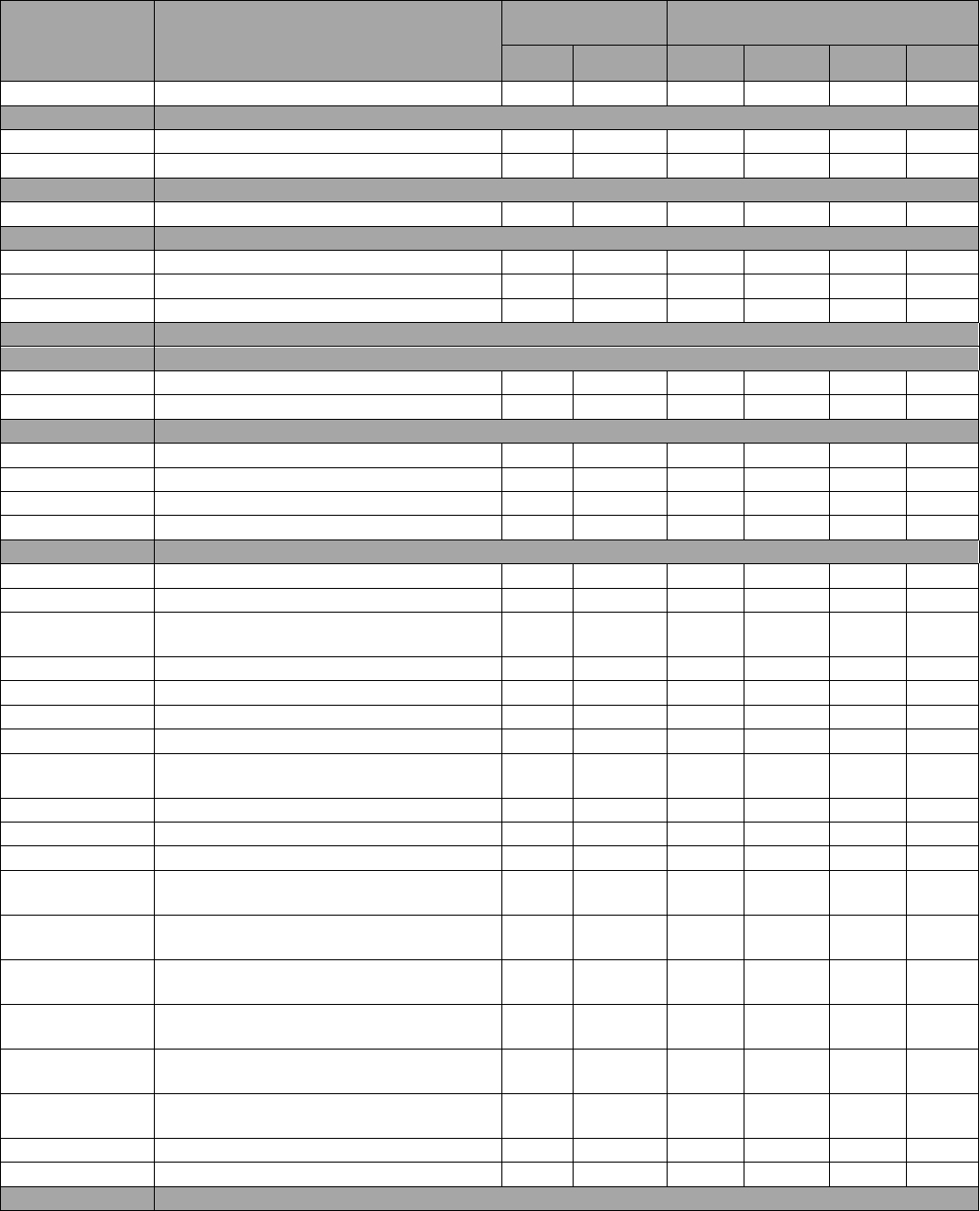
CFETP3E5X1, 17 APRIL 2024
Attachment 3
3E5X1 Air Force Qualification Training Package (AFQTP) Documentation Record
62
Task Number
Tasks, Knowledge, and Technical
References
Core/Deployment
Tasks
Certification of AFQTPs
Core
Deployment
Tng
Start
Tng
Complete
Trainee
Initials
Trainer
Initials
5.3.3.
Utilize data functions
5
5.3.3.1.
Feature Code Library
5.3.3.1.1.
Create
5
5.3.3.1.2.
Edit
5
5.4.
Survey Planning
5.4.1.
Utilize mission planning software
7
5.5.
Perform Expedient Survey
5.5.2.
Pace Count
5
5.5.3.
3-4-5 Triangle
5
5.5.4.
Reconnaissance Survey
5
5.6.
Construction Survey
5.6.1.
Optical Survey
5.6.1.1.
Set up optical survey equipment
5
5.6.1.2.
Set up data collection equipment
5
5.6.1.3.
Horizontal Control
5.6.1.3.1.
Utilize known control
5
5.6.1.3.2.
Utilize relative control
5
5.6.1.3.3.
Establish known and relative control
7
5.6.1.3.4.
Utilize known and relative control
7
5.6.1.4.
Vertical Control
5.6.1.4.1.
Utilize known control
5
5.6.1.4.2.
Utilize relative control
5
5.6.1.4.3.
Perform Level Loop (Computations and
Adjustments)
5
5.6.1.5.
Perform Resection
5
5.6.1.6.
Perform topographic survey
5
5.6.1.7.
Download Survey Data
5
5.6.1.8.
Correct Survey Data
5
5.6.1.9.
Generate contours using civil software
package
5
5.6.1.10.
Stake out utilities
5
5.6.1.11.
Stake out buildings
5
5.6.1.12.
Stake out roads
5
5.6.1.13.
Compute earthwork volumes using civil
software package
5
5.6.1.14.
Set centerline stakes using civil software
package
5
5.6.1.15.
Set grade stakes using civil software
package
5
5.6.1.16.
Set slope stakes using civil software
package
5
5.6.1.17.
Design utilidors using civil software
package
5
5.6.1.18.
Design buildings using civil software
package
5
5.6.1.19.
Design roads using civil software package
5
5.6.1.20.
Perform remote object elevation
5
5.6.2.
GNSS (e.g., GPS) Surveying
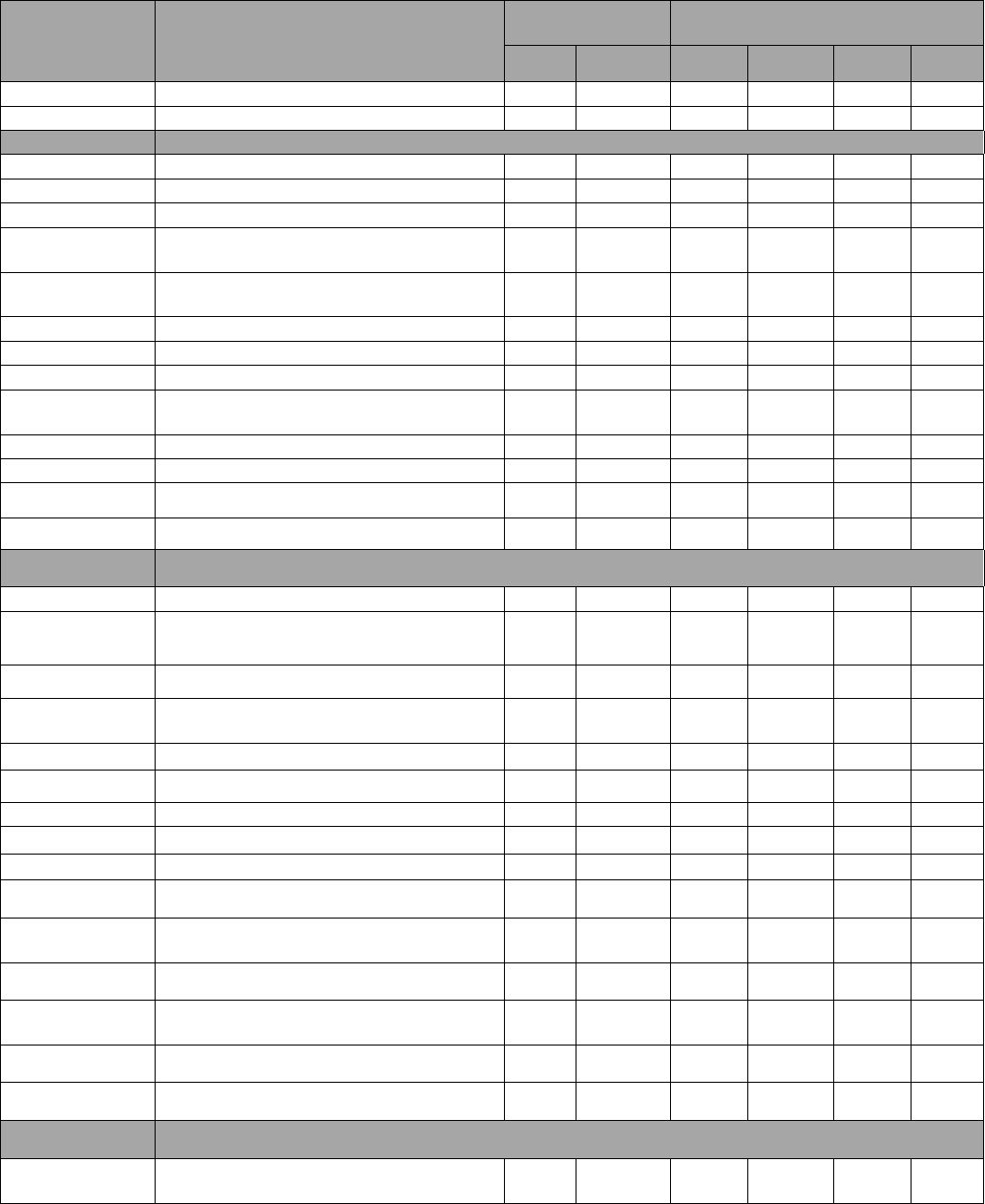
CFETP3E5X1, 17 APRIL 2024
Attachment 3
3E5X1 Air Force Qualification Training Package (AFQTP) Documentation Record
63
Task Number
Tasks, Knowledge, and Technical
References
Core/Deployment
Tasks
Certification of AFQTPs
Core
Deployment
Tng
Start
Tng
Complete
Trainee
Initials
Trainer
Initials
5.6.2.1.
Set up GPS equipment
5
5.6.2.2.
Set up data collection equipment
5
5.6.2.
Establish Project Control
5.6.2.4.1.
RTK
5
5.6.2.4.2.
PPK
5
5.6.2.4.3.
Static
5
5.6.2.5.
Download electronic data to post-
processing software
5
5.6.2.6.
Correct PPK data using post-processed
correction
5
5.6.2.7.
Perform topographic survey
5
5.6.2.8.
Download topographic survey data
5
5.6.2.9.
Correct topographic survey data
5
5.6.2.10.
Generate contours using civil software
package
5
5.6.2.11.
Stake out utilities
5
5.6.2.12.
Stake out roads
5
5.6.2.13.
Stake out buildings
5
5.7.
Perform Mishap Survey
5
6.0.
CONTRACT MANAGEMENT Accomplish Paper-Based AFQTP
6.1.
Standards of Conduct
5
6.2.
Construction Safety and Health
Requirements
5
6.4.
Conduct Constructability Review
7
6.5.
Apply applicable building codes or
regulations to construction activities
7
6.6.
Inspect civil works
7
6.7.
Inspect electrical works
7
6.8.
Inspect structural works
7
6.9.
Inspect utilities works
7
6.10.
Inspect mechanical works
7
6.11.
Document construction activities
7
6.12.
Evaluate construction contract progress
schedule
7
6.13.
Evaluate progress reports
7
6.14.
Evaluate materials submittals and test
reports
7
6.18.
Perform project close-out
7
6.20.
Perform contract modifications
7
6.22.
Design Documents
6.22.1.
Estimate cost elements (such as:
Materials, Equipment, and Labor)
7
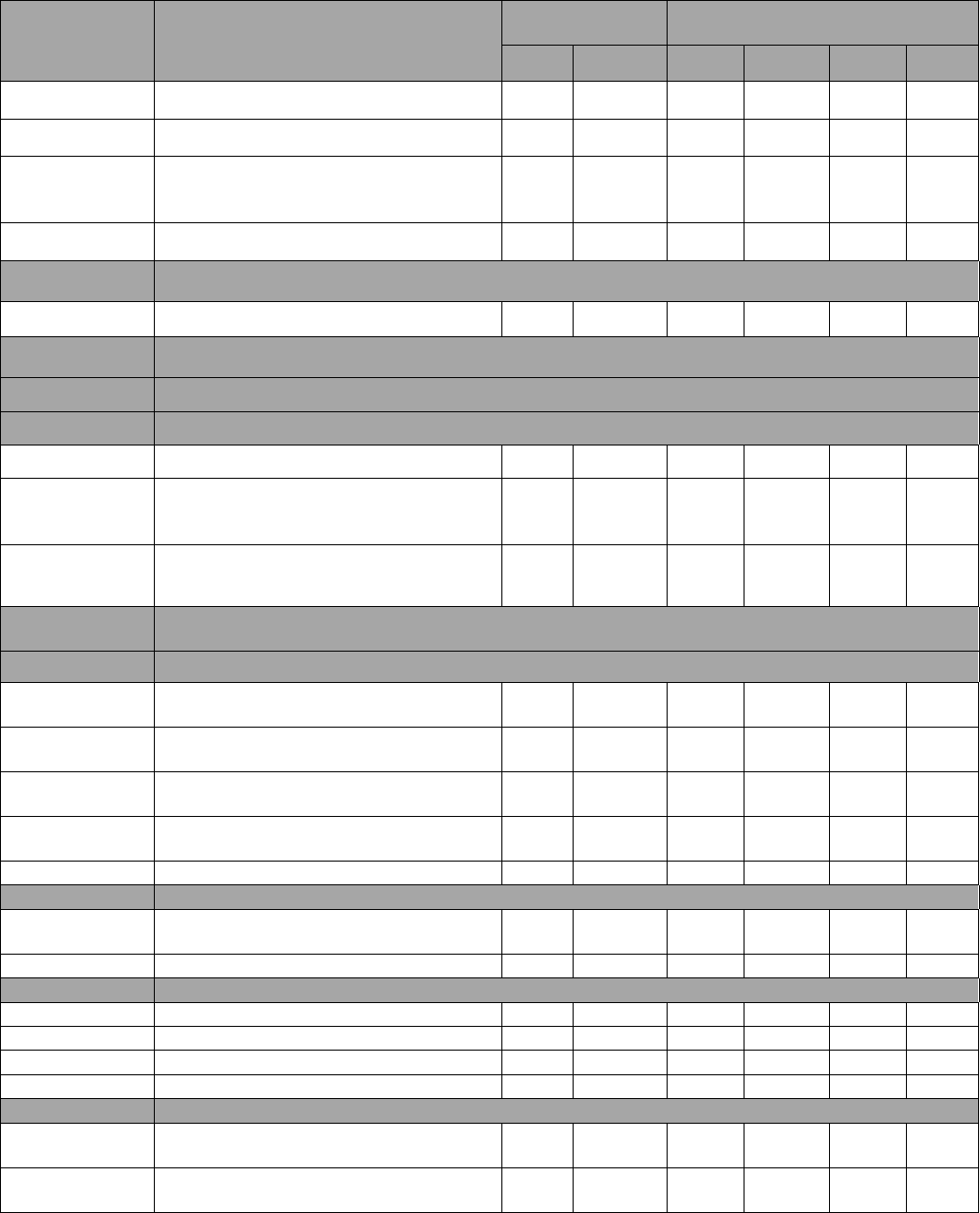
CFETP3E5X1, 17 APRIL 2024
Attachment 3
3E5X1 Air Force Qualification Training Package (AFQTP) Documentation Record
64
Task Number
Tasks, Knowledge, and Technical
References
Core/Deployment
Tasks
Certification of AFQTPs
Core
Deployment
Tng
Start
Tng
Complete
Trainee
Initials
Trainer
Initials
6.22.2.
Develop Statements of Work (SOW)
7
6.22.3.
Review project specifications
7
6.22.4.
Perform Design Review (such as:
Materials, Equipment, Installation, and
Construction)
7
6.22.5.
Prepare programming documents
7
7.0.
INSTALLATION PLANNING/MAPPING Accomplish Paper-Based AFQTP
7.2.
Apply Site Planning Requirements
7
8.0.
CONSTRUCTION SITE MATERIALS Accomplish Paper-Based AFQTP
8.1.
Soil
8.1.3.
Field Identification
8.1.3.1.
Classify soils in field conditions
5
8.1.3.2.
Determine California Bearing Ratio
(CBR) using Dynamic Cone Penetrometer
(DCP) ♦
5
8.1.3.3.
Determine layer structure using Dynamic
Cone Penetrometer (DCP) ♦
5
9.0.
AFS SPECIFIC CONTINGENCY RESPONSIBILITIES Accomplish Paper-Based AFQTP
9.1.9.
Combat Air Base Planning Applications (performs tasks using software listed in CE UTC)
9.1.9.1.
Utilize BEAR Base Planning within
GeoExPT software
5
*
9.1.9.2.
Utilize Aircraft Parking Planner within
GeoExPT software
5
*
9.1.9.3.
Utilize GeoExPT software for taxiway
linework
5
*
9.1.9.4.
Utilize GeoExPT to create a Common
Installation Picture (CIP)
5
*
9.1.9.5.
Export beddown to CAD software
5
*
9.2.
Beddown Operations
9.2.3.
Evaluate Airfield Pavement Evaluation
Report
7
*
9.2.4.
Validate airfield suitability
7
*
9.2.5.
BEAR Base Planning Criteria
9.2.5.1.
Perform site selection
7
*
9.2.5.2.
Establish dispersed lay out
7
*
9.2.5.3.
Establish non-dispersed lay out
7
*
9.2.5.5.
Aircraft revetment siting
5
*
9.2.6.
Employment Operations
9.2.6.3.
Perform Airfield Damage Assessment
(TQT)
5
*
9.2.6.4.
Perform Facility and Utility Damage
Assessment (TQT)
5
*
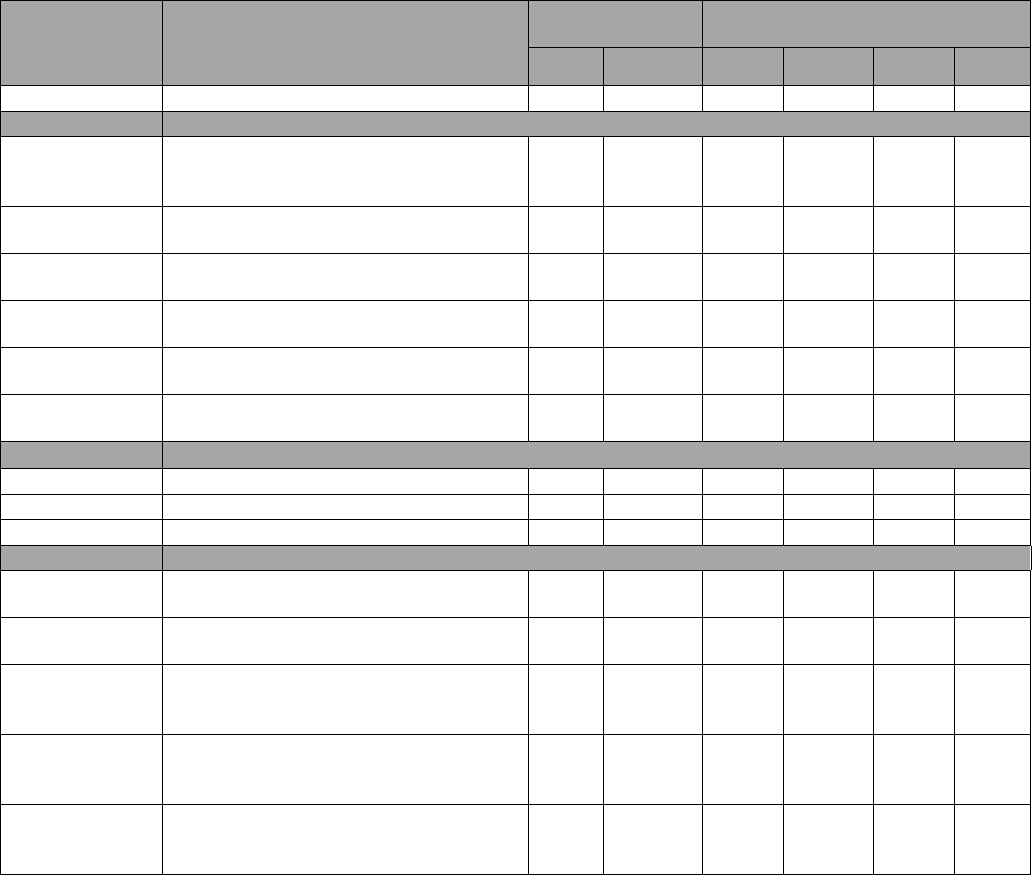
CFETP3E5X1, 17 APRIL 2024
Attachment 3
3E5X1 Air Force Qualification Training Package (AFQTP) Documentation Record
65
Task Number
Tasks, Knowledge, and Technical
References
Core/Deployment
Tasks
Certification of AFQTPs
Core
Deployment
Tng
Start
Tng
Complete
Trainee
Initials
Trainer
Initials
9.2.6.5.
Plot Airfield/Facility Damage (TQT)
5
*
9.3.
Minimum Operating Strip (MOS) Selection Procedures
9.3.1.
Perform Minimum Operating Strip (MOS)
Selection Procedures and Considerations
(TQT)
5
*
9.3.2.
Utilize Airfield Damage Repair Software
Package for ADR (TQT)
5
*
9.3.3.
Identify Minimum Airfield Operating
Surface (MAOS) (TQT)
5
*
9.3.4.
Compute Repair Quality Criteria (RQC)
for ADR (TQT) TR: ETL 13-1
5
*
9.3.5.
Lay out Minimum Airfield Operating
Surface Marking System (MAOSMS) ♦
5
*
9.3.6.
Perform Crater Profile Measurement
(CPM) Operations ♦
5
*
9.3.8.
Precision Approach Path Indicator (PAPI) Procedures
9.3.8.1.
Calculate Light Elevation and Location ♦
5
*
9.3.8.2.
Lay out ♦
5
*
9.3.8.3.
Align ♦
5
*
9.3.9.
Mobile Aircraft Arresting System (MAAS) Procedures
9.3.9.1.
Evaluate soil strength for MAAS
installation
5
*
9.3.9.2.
Lay out and Align MAAS with Fairlead
Beams ♦
5
*
9.3.9.3.
Lay out and Align MAAS with Standard
Fairlead Beams and Dead Man Anchoring
System ♦
5
*
9.3.9.4.
Lay out MAAS with Standard Fairlead
Beams, MRES, and Dead Man Anchoring
System ♦
5
*
9.3.9.5.
Align MAAS with Standard Fairlead
Beams, MRES, and Dead Man Anchoring
System ♦
5
*
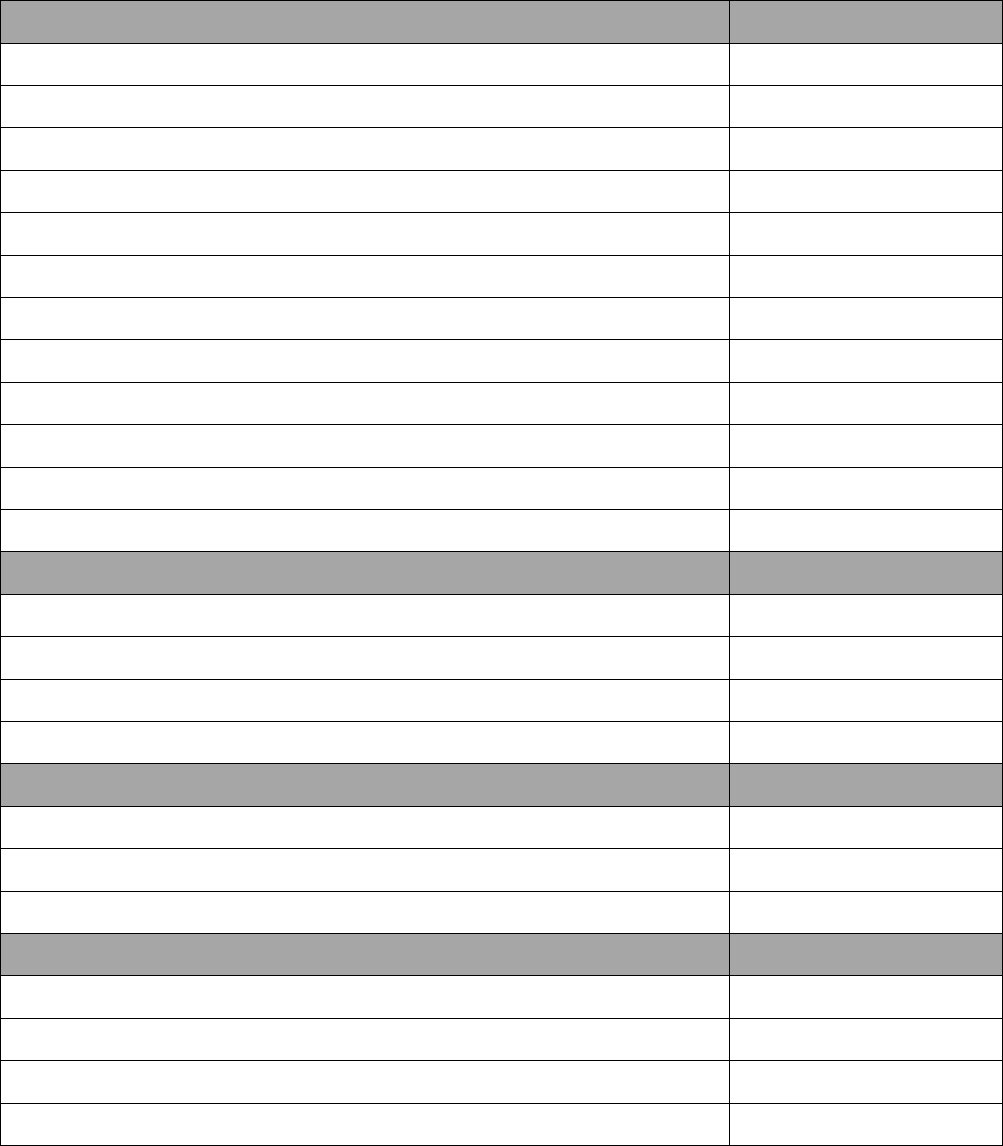
CFETP3E5X1 17 APRIL 2024
Attachment 4
3E5X1 Supplemental Course Training Standards (CTS)
66
Supplemental Courses
ADVANCED SURVEYING (JCAZP3E571 01AB -10 Days)
1. FUNDAMENTALS
PROFICIENCY CODE
1.1. Survey Theory
C
1.2. Survey Control Networks
C
1.3. Develop Feature Code Libraries
3c
1.4. Develop Data Dictionaries
3c
1.5. Survey Accuracy
C
1.6. Set-Up Data Collector
c
1.7. Utilize Mission Planning Software
c
1.8. Perform Optical Survey Instrument Maintenance
3c
1.9. Perform GNSS (e.g., GPS) Instrument Maintenance
3c
1.10. Perform 2 Peg Test
3c
1.11. Perform collimation test
b
1.12. Radio Frequencies
C
2. SURVEY APPLICATIONS
2.1. Perform Pace Count
3c
2.2. Perform Reconnaissance Survey
3c
2.3. Establish Relative Control (Total Station)
3c
2.4. Establish Control using GNSS (e.g., GPS) (Static)
3c
2.5. Transfer Control
2.5.1. Relative Control to known
3c
2.5.2. PPK
3c
2.6. Perform Topographic Survey (Optical & GPS/GNSS)
3c
2.7. Download and Adjust Survey Data (Optical & GNSS)
2.7.1. Review Survey Job (Controller)
3c
2.7.2. Download Survey to Civil Software Package
3c
2.7.3. Edit data using Civil Software Package
3c
2.7.4. Upload survey to Controller
3c
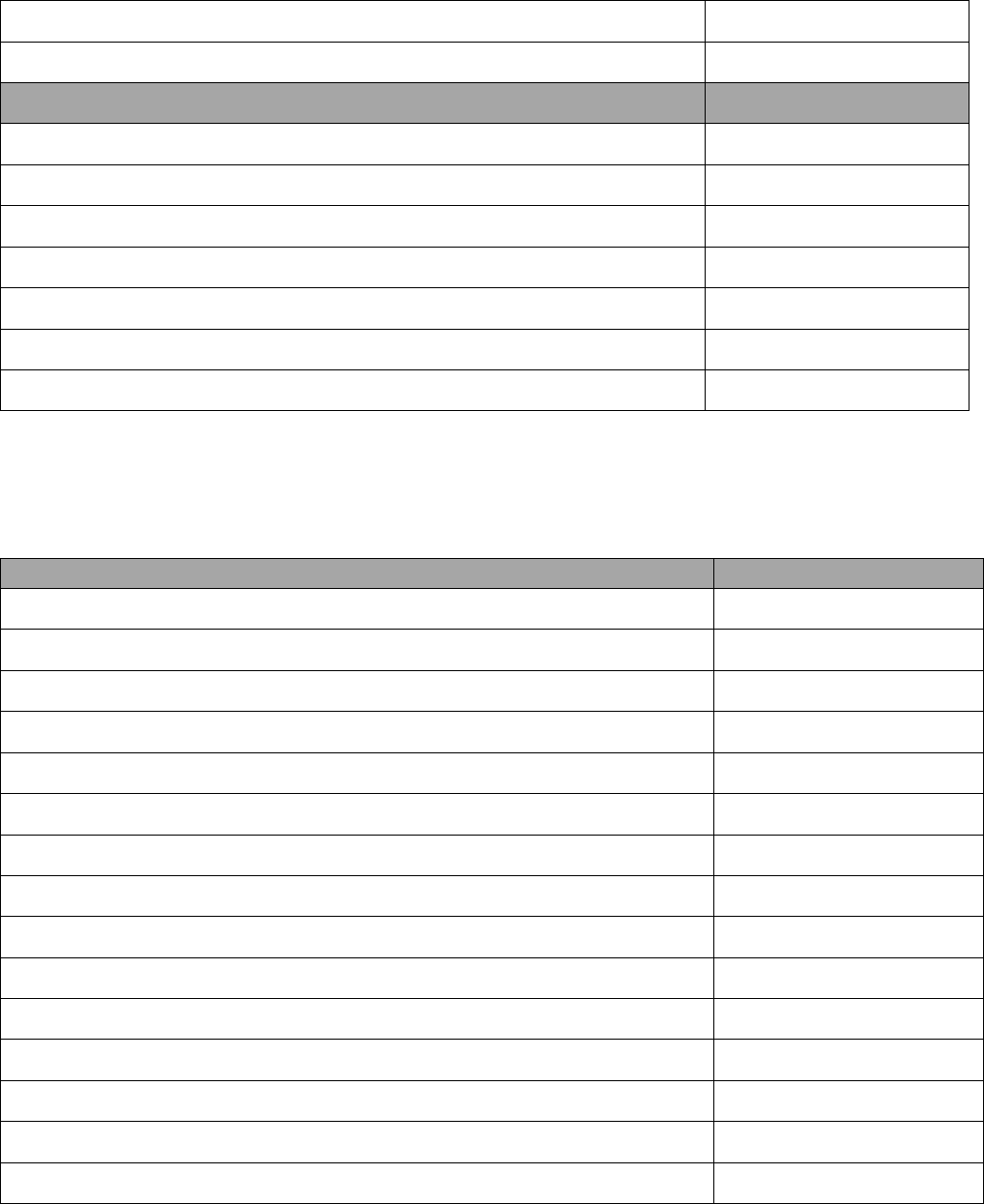
CFETP3E5X1, 17 APRIL 2024
Attachment 3
3E5X1 Air Force Qualification Training Package (AFQTP) Documentation Record
67
2.8. Generate Contours (Optical & GNSS) using Civil Software Package
3c
2.9. Compute Remote Object Elevations (Manual)
3c
3. CONSTRUCTION ACTIVITIES
3.1. Compute Earthwork Volumes using Civil Software Package
2b
3.2. Set Centerline using Civil Software Package
3c
3.3. Set Grade using Civil Software Package
3c
3.4. Set Slope stakes using Civil Software Package
3c
3.5. Stake Out Utilidors
3c
3.6. Stake Out Buildings
3c
3.7. Set Building Corner Elevations (Batterboards)
3c
CONTRACT CONSTRUCTION INSPECTION (MTT)
J7AZT3E571 01AB (10 Days)
TASK
PROFICIENCY CODE
1. Enforce General Contract Provisions
2b
2. Conduct Constructability Review
2b
3. Inspect Construction Activities
2b
4. Document Construction Activities
2b
5. Evaluate Construction Contract Progress Schedule
2b
6. Evaluate Progress Reports
2b
7. Evaluate Materials Submittals
2b
8. Pre-Performance Conference
B
9. Coordinate Construction Permits
2b
10. Surveillance of Military Construction (MILCON) projects
B
11. Project Close-out Procedures
b
12. Warranty and Guarantee Program
B
13. Contract Modifications
B
14. Simplified Acquisition Base Engineer Requirements (SABER/SATOC)
B
15. Indefinite Delivery Indefinite Quantity (IDIQ)
B
